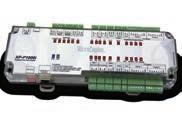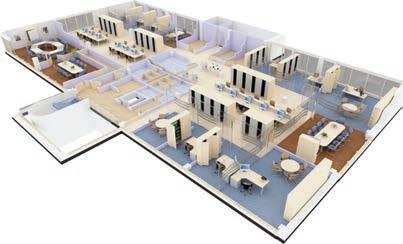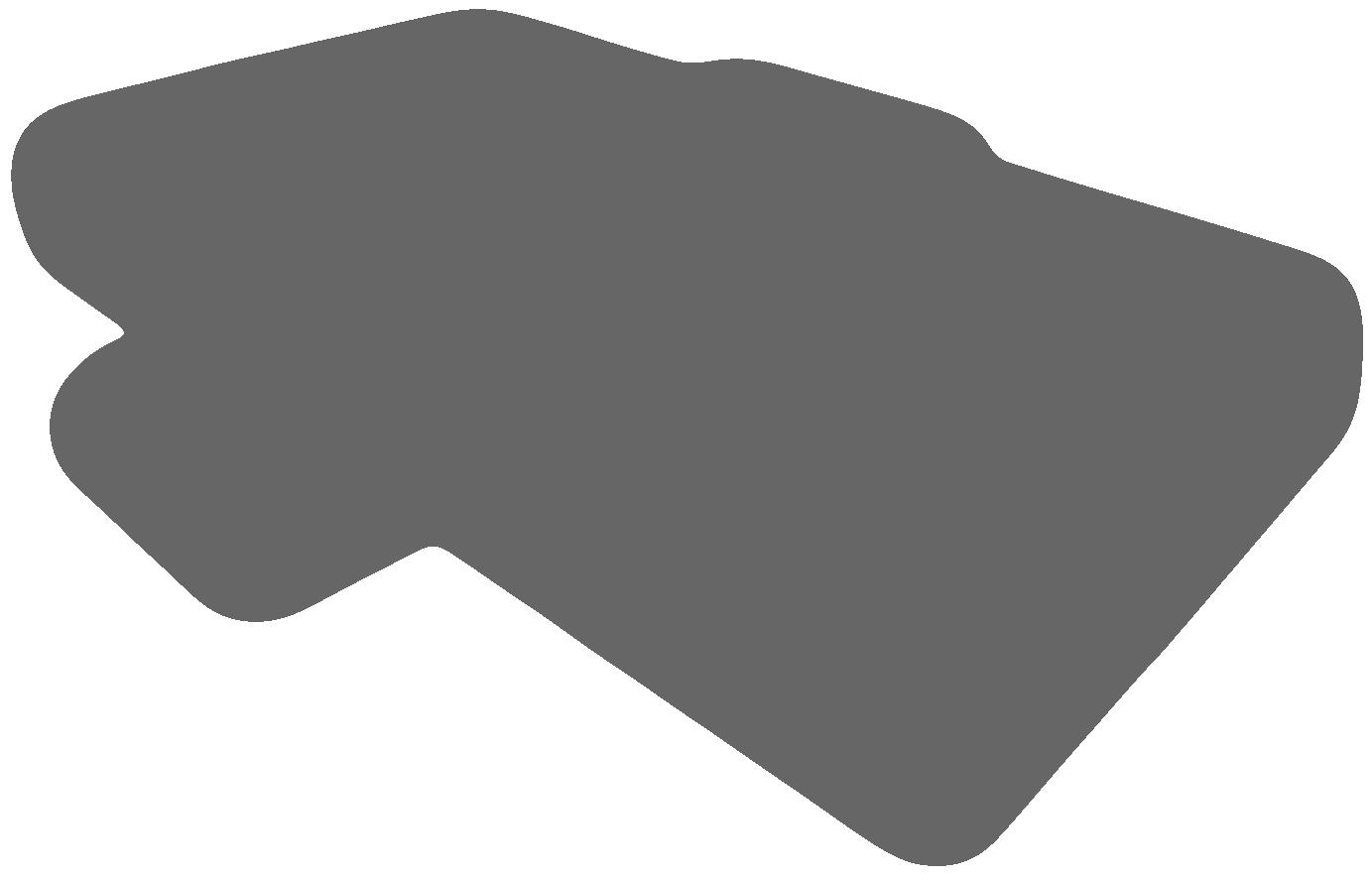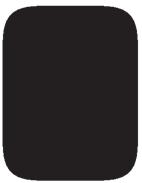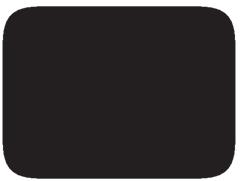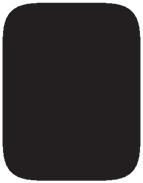










The Second Orinoco River Bridge in Venezuela, is viewed by the government as the country’s most important infrastructure project of recent years. The bridge is a 3.2 km long road-rail crossing, carrying four lanes of highway traffic separated into two carriageways by a single railway track in the centre. The crossing comprises two back-to-back cable-stayed bridges, each having a 300 m mainspan and two 120 m sidespans.
The contractor was concerned about water seepage and possible corrosion of the reinforcing steel in the concrete forming the base for the railway, used Xypex to waterproof and protect it. Prior to the Xypex application, there was already obvious leakage from the concrete. This problem ceased after the application of over 28 tonnes. of Xypex Concentrate to the concrete base and walls underlying the rail track, increasing the durability of the structure.
The Orinoco and its tributaries constitute the northernmost of South America’s four major river systems. This new crossing, at Ciudad Guayana, was built to complement the existing Angostura Bridge (100 km upstream) and is intended to provide a rail connection that enables heavy industrial products to be transported to the ports of Venezuela’s Caribbean coast.
For more information on how our solutions can provide sustainable benefits for your concrete assets, please visit our website at www.xypex.com.au or LinkedIn Page.
Tel: +603-51928186 Fax: +603-51926826 Email: support@waterproofing.com.my www.waterproofing.com.my
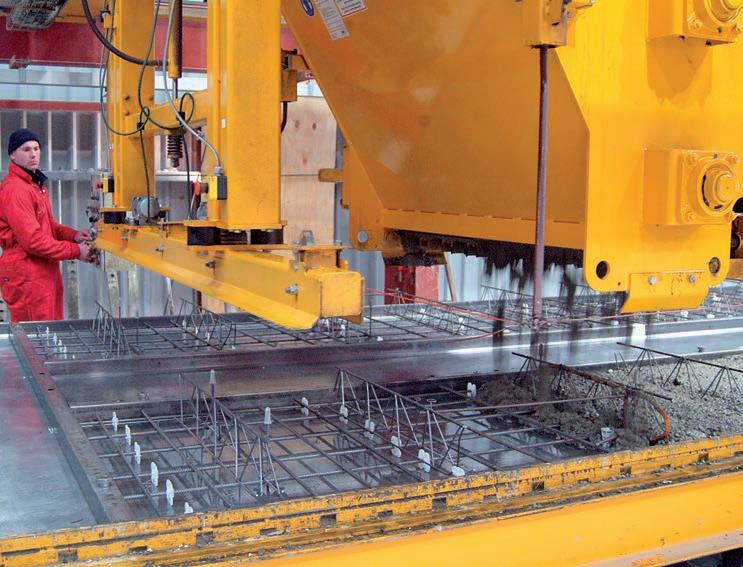
THE SIKA® VISCOCRETE® PRODUCT RANGE IS AN INNOVATIVE POLYCARBOXYLATE BASED ADMIXTURE TECHNOLOGY CAPABLE OF OFFERING SOLUTIONS TO ALL PRECAST CONCRETE PRODUCTION CHALLENGES
The application of Sika® ViscoCrete® can ensure substantial water reduction with adequate workability and slumplife in combination with fast early strength development. Sika® ViscoCrete® technology enables the design of polymers in direct regard to fresh and hardened concrete performance. Furthermore, technologies can be combined, allowing easy adaptation of solutions to changing production circumstances.

Number 12, DECEMBER 2017 IEM Registered on 1 May 1959
MAJLIS BAGI SESI 2017/2018 (IEM COUNCIL SESSION 2017/2018)
YANG DIPERTUA / PRESIDENT
Ir. Dr Tan Yean Chin
TIMBALAN YANG DIPERTUA / DEPUTY PRESIDENT
Ir. David Lai Kong Phooi
NAIB YANG DIPERTUA / VICE PRESIDENTS
Ir. Prof. Dr Jeffrey Chiang Choong Luin, Ir. Prof. Dr Norlida bt Buniyamin, Ir. Ellias Bin Saidin, Ir. Prof. Dr Ruslan bin Hassan, Ir. Lai Sze Ching, Ir. Lee Boon Chong, Ir. Ong Ching Loon
SETIAUSAHA KEHORMAT / HONORARY SECRETARY
Ir. Yap Soon Hoe
BENDAHARI KEHORMAT / HONORARY TREASURER
Ir. Dr Wang Hong Kok
BEKAS YANG DIPERTUA TERAKHIR / IMMEDIATE PAST PRESIDENT
Y.Bhg. Dato’ Ir. Lim Chow Hock
BEKAS YANG DIPERTUA / PAST PRESIDENTS
Y.Bhg. Academician Tan Sri Dato’ Ir. (Dr) Hj. Ahmad Zaidee bin Laidin, Y.Bhg. Dato’ Ir. Dr Gue See Sew, Y.Bhg. Dato’ Paduka Ir. Keizrul bin Abdullah, Y.Bhg. Academician Dato’ Ir. Prof. Dr Chuah Hean Teik, Mr. Choo Kok Beng
WAKIL AWAM / CIVIL REPRESENTATIVE
Ir. Dr Lee Yun Fook
WAKIL MEKANIKAL / MECHANICAL REPRESENTATIVE
Ir. Fam Yew Hin
WAKIL ELEKTRIK / ELECTRICAL REPRESENTATIVE
Ir. Lim Kim Ten
WAKIL STRUKTUR / STRUCTURAL REPRESENTATIVE
Ir. Dr Ng Soon Ching
WAKIL KIMIA / CHEMICAL REPRESENTATIVE
Ir. Prof. Dr Thomas Choong Shean Yaw
WAKIL LAIN-LAIN DISPLIN / REPRESENTATIVE TO OTHER DISCIPLINES
Ir. Roznan bin Abdul Rashid
WAKIL MULTIMEDIA DAN ICT / ICT AND MULTIMEDIA REPRESENTATIVE
Ir. Dr Chuah Joon Huang
AHLI MAJLIS / COUNCIL MEMBERS
Ir. Mohd Khir bin Muhammad, Y.Bhg. Dato’ Ir. Hj. Hanapi Bin Mohammad Noor, Ir. Dr Ahmad Anuar bin Othman, Ir. Ishak bin Abdul Rahman, Ir. Chong Pick Eng (PE Chong), Ir. Ng Yong Kong, Ir. Tejinder Singh, Ir. Sreedaran a/l Raman, Ir. Roger Wong Chin Weng, Ir. Assoc. Prof. Dr Ahmad Kamil bin Arshad, Ir. Dr Tan Kuang Leong, Ir. Hoo Choon Sean, Y.Bhg. Lt. Jen. Dato’ Wira Ir. Ismail bin Samion (Ret. RMAF), Y.Bhg. Dato’ Ir. Hj. Anuar bin Yahya, Ir. Mah Way Sheng, Ir. Gunasagaran a/l Kristnan, Ir. Chen Harn Shean, Ir. Mohd Aman bin Hj. Idris, Ir. Gopal Narian Kutty, Ir. Dr Jimmy Mok Vee Hoong, Ir. Dr Leong Wai Yie, Ir. Razmahwata Mohamad Razalli, Ir. Abdul Razak Yakob, Ir. Yau Chau Fong, Y.Bhg. Dato’ Ir. Foong Choy Chye, Y.Bhg. Dato’ Ir. Kisai bin Rahmat, Ir. Yam Teong Sian, Y. Bhg. Dato’ Ir. Low Keng Kok, Y. Bhg. Dato’ Ir. Hj. Abdul Rashid bin Maidin
PENGERUSI CAWANGAN / BRANCH CHAIRMAN
1. Pulau Pinang: Ir. Ting Chek Choon
2. Selatan: Ir. Mohd Khir Muhammad
3. Perak: Ir. Abdul Razak bin Ali
4. Kedah-Perlis: Ir. Prof. Dr Rezuwan bin Kamaruddin
5. Negeri Sembilan: Y. Bhg. Dato’ Ir. Zainurin bin Karman
6. Kelantan: Ir. Hj. Mohd Zaim bin Abd. Hamid
7. Terengganu: Ir. Atemin bin Sulong
8. Melaka: Ir. Dr Tan Chee Fai
9. Sarawak: Ir. Vincent Tang Chok Khing
10. Sabah: Ir. Dr James Yong Hon Min
11. Miri: Ir. Paul Chiew Lik Ing
12. Pahang: Y. Bhg. Dato’ Ir. Sharuddin bin Mohd Simin
AHLI JAWATANKUASA INFORMASI DAN PENERBITAN / STANDING COMMITTEE ON INFORMATION AND PUBLICATIONS 2017/2018
Pengerusi/Chairman: Ir. Prof. Dr Ruslan Hassan Naib Pengerusi/Vice Chairman: Ir. Mohd. Khir Muhammad Setiausaha/Secretary: Ir. Lau Tai Onn Ketua Pengarang/Chief Editor: Ir. Prof. Dr Ruslan Hassan Pengarang Buletin/Bulletin Editor: Ir. Mohd. Khir Muhammad Pengarang Prinsipal Jurnal/Principal Journal Editor: Ir. Prof. Dr Ruslan Hassan Pengerusi Perpustakaan/Library Chairman: Ir. C.M.M. Aboobucker Ahli-Ahli/Committee Members: Ir. Ong Guan Hock, Ir. Yee Thien Seng, Ir. CMM Aboobucker, Ir. Chin Mee Poon, Ir. Dr Oh Seong Por, Ms. Michelle Lau Chui Chui, Ir. Abdul Razak bin Yakob, Ir. Prof. Dr Abdul Aziz bin Abdul Samad
LEMBAGA PENGARANG/EDITORIAL BOARD 2017/2018
Ketua Pengarang/Chief Editor: Ir. Prof. Dr Ruslan Hassan Pengarang Buletin/Bulletin Editor: Ir. Mohd. Khir Muhammad Pengarang Jurnal/Journal Editor: Ir. Prof. Dr Ruslan Hassan Ahli-ahli/Committee Members: Ir. Lau Tai Onn, Ir. Ong Guan Hock, Ir. Yee Thien Seng, Ms. Michelle Lau Chui Chui, Ir. Dr Oh Seong Por Secretariats: Janet Lim, May Lee
THE INSTITUTION OF ENGINEERS, MALAYSIA
Bangunan Ingenieur, Lots 60 & 62, Jalan 52/4, P.O. Box 223, (Jalan Sultan), 46720 Petaling Jaya, Selangor Darul Ehsan. Tel: 603-7968 4001/4002 Fax: 603-7957 7678 E-mail: sec@iem.org.my Homepage: http://www.myiem.org.my

COVER NOTE
Marine Engineering: Impetus for Growth in Shipping & Ship Building Industries 5
COVER STORY
Issues and Challenges in Malaysian Maritime Industry 6 - 12
FEATURE ARTICLES
Implementation of Green Port Policy Due to Climate Change ...............................................14
Underwater Structure Inspections Using Unmanned Underwater Vehicle ...........................21 14 - 26
SAFE TEA TIME Behaviour Influencers 28
FORUMS
Outstanding Students’ Works in Marine & Offshore Engineering ...........................................30
IEM – ICE Joint Conference on “Future Engineers 2017 Malaysia - Inspiring the Workforce of Tomorrow” ....................................31
Challenges on Mobility of Engineers in ASEAN and Beyond .........................................34
Insight Into the World of Building Information Modelling (BIM) ..................................36
One-Day Seminar: High Speed Railway - Educate Ourselves on Rail Engineering ............38 30 - 38
GLOBE TREKKING
Exploration of Upper Sungai Rejang 41
BLUE PAGE Membership List 45 - 48
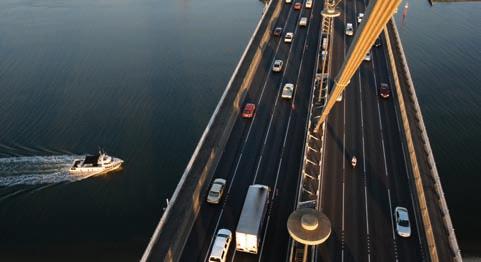
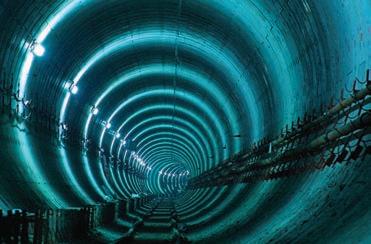
Ja co bs is a long estab li sh ed g lo ba l provider of tran sport infrastruct ure ser vi ce s wi th an extens i ve exper i en ce in engi nee ring, design an d co nstruc tion pl an ning. Our comprehensive capability in delivering tunnels, road structures, ra il and bridges en ables us to pr ovi de des i gn and adviso ry services to the transport infrastructure sector with a balanced consideration of environmental and economic impacts.
Jacobs Engineering Malaysia prides itself on its ability to nurture its employees through its unique work culture. Jacobs Malaysia comprise of 300 employees and is currently working on High Speed Rail, Mass Rapid Transit and Light Rail Transit projects.
In vi ew of an expansion in our transpor t division, we would like to invite hig h calibre professionals to be part of our dynamic team:
• Senior Rail Engineers
• Senior Tunnel Engineers
• Senior Underground Station Engineers
• Senior Elevated Station Engineers
• Senior Geotechnical Engineers
Please submit your detailed resume to
• Senior Bridge Engineers
• Road/Highway Design Managers
• Senior Road/Highway Engineers
• Road/Highway Engineers
• Senior Electrical Engineers (Rail)
DIMENSION PUBLISHING SDN. BHD. (449732-T)
Level 18-01-03, PJX-HM Shah Tower, No. 16A, Persiaran Barat, 46050 Petaling Jaya, Selangor Darul Ehsan, Malaysia.
Tel: +(603) 7493 1049 Fax: +(603) 7493 1047
E-mail: info@dimensionpublishing.com
Website: www.dimensionpublishing.com
Chairman
ROBERT MEBRUER
CEO/Publisher
PATRICK LEUNG
General Manager
SHIRLEY THAM shirley@dimensionpublishing.com
Head of Marketing & Business Development
JOSEPH HOW joseph@dimensionpublishing.com
Editor
TAN BEE HONG bee@dimensionpublishing.com
Contributing Writers
PUTRI ZANINA & ZOE PHOON putri@dimensionpublishing.com zoe@dimensionpublishing.com
Senior Graphic Designer
SUMATHI MANOKARAN sumathi@dimensionpublishing.com
Graphic Designer
NABEELA AHMAD beela@dimensionpublishing.com
Advertising Consultants
THAM CHOON KIT ckit@dimensionpublishing.com
Accounts cum Admin Executive
YEN YIN yenyin@dimensionpublishing.com
For advertisement placements and subscriptions, please contact:
DIMENSION PUBLISHING SDN. BHD. (449732-T)
Level 18-01-03, PJX-HM Shah Tower, No.16A, Persiaran Barat, 46050 Petaling Jaya, Selangor Darul Ehsan, Malaysia.
Tel: +(603) 7493 1049 Fax: +(603) 7493 1047
E-mail: info@dimensionpublishing.com
Subscription Department
E-mail: info@dimensionpublishing.com
Printed by
HOFFSET PRINTING SDN. BHD. (667106-V)
No. 1, Jalan TPK 1/6, Taman Perindustrian Kinrara, 47180 Puchong, Selangor Darul Ehsan, Malaysia. Mailer
PERFECT MAIL SERVICES (648839-P)
14 Jalan TSB 2, Taman Perindustrian Sungai Buloh, Sungai Buloh, Selangor Darul Ehsan, Malaysia. Tel: +(603) 6156 5288
JURUTERA MONTHLY CIRCULATION : 22,500 COPIES
Submission or placement of articles in JURUTERA could be made to the:Chief Editor
THE INSTITUTION OF ENGINEERS, MALAYSIA (IEM) Bangunan Ingenieur, Lots 60 & 62, Jalan 52/4, P.O. Box 223 (Jalan Sultan), 46720 Petaling Jaya, Selangor. Tel: +(603) 7968 4001/4002 Fax: +(603) 7957 7678 E-mail: pub@iem.org.my or sec@iem.org.my IEM Website: http://www.myiem.org.my
© 2017, The Institution of Engineers, Malaysia (IEM) and Dimension Publishing Sdn. Bhd.
PUBLICATION DISCLAIMER
The publication has been compiled by both IEM and Dimension with great care and they disclaim any duty to investigate any products, process, services, designs and the like which may be described in this publication. The appearance of any information in this publication does not necessarily constitute endorsement by IEM and Dimension. There is no guarantee that the information in this publication is free from errors. IEM and Dimension do not necessarily agree with the statement or the opinion expresssed in this publication.
COPYRIGHT
JURUTERA Bulletin of IEM is the official magazine of The Institution of Engineers, Malaysia (IEM) and is published by Dimension Publishing Sdn. Bhd. The Institution and the Publisher retain the copyright over all materials published in the magazine.
of
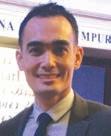
by Ir. Nik Mohd Hasmizie bin Nik Mohd Kamil Chairman, Marine Engineering and Naval Architecture Technical Division
The growth of our shipbuilding industry, dating back to the 1900s, is supported by engineering consultancy, machinery & equipment, supply chain, logistic and insurance. In the Third Industrial Master Plan 2006-2020, the Malaysian government has identified it as a strategic industry.
Marine Engineering deals with the design, development, production and maintenance of equipment used at sea and on board shipping vessels while Naval Architecture involves the design and manufacture of sea-going vessels. In line with the demands of the shipping, shipbuilding and oil & gas industries in Malaysia, the need for Marine Engineers and Naval Architects has increased tremendously and more local universities and institutions of higher learning are offering related courses in this field.
There are many local engineering design houses, ship builders, ship owners etc. to support the industry. A holistic approach is required for all parties to collaborate, with the support of Government policy and long-term strategy so that we can be globally competitive, are able to adapt to fast-changing technologies and will achieve the vision of Malaysian Shipbuilding/ Ship Repair Industry Strategic Plan 2020 (SBSR 2020).





















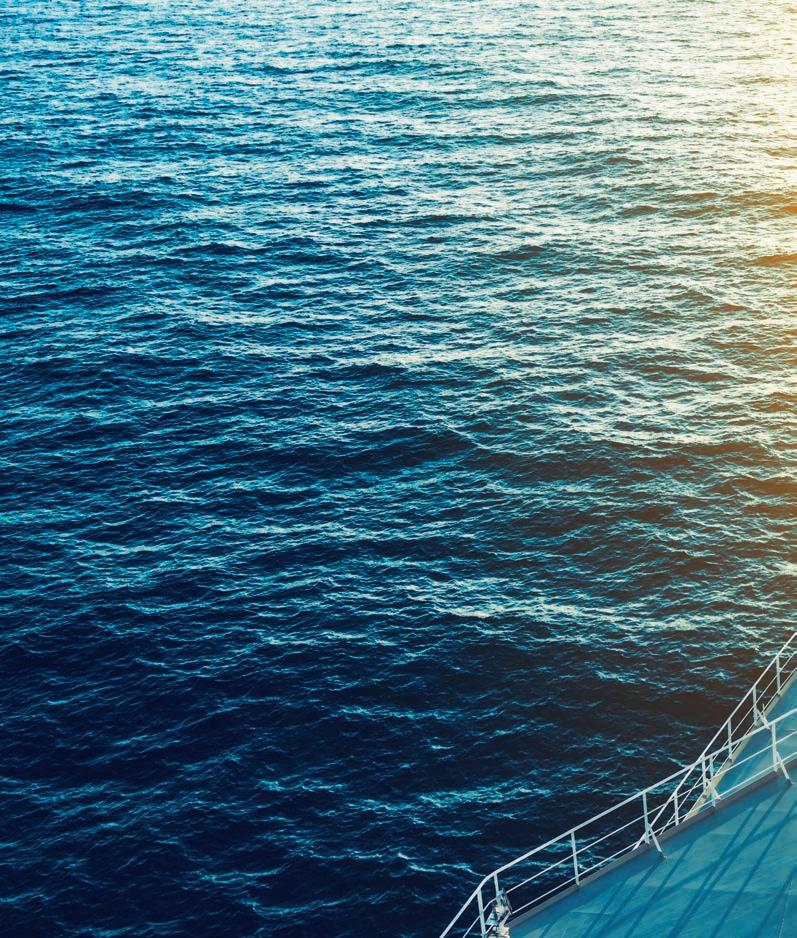
Shipping is a significant contributor to the Malaysian economy. It plays an important role in moving the country's exports and imports, serves as a crucial link in the entire national transport system and provides employment for a large segment of the population. In 2016, Malaysia's total shipping trade stood at RM1.48 trillion, of which 95% was seaborne trade. However, the industry is declining, with a steady reduction in shipping tonnage and an increasing number of businesses in a worrying state. The Malaysia Ship Owners' Association (MASA) attributes this to the weak global shipping market but one man is more concerned about the domestic issues and vulnerabilities that have exacerbated the situation.
Dato' Ir. Abdul Hak bin Md Amin talks to the JURUTERA about the issues and challenges affecting the maritime industry.
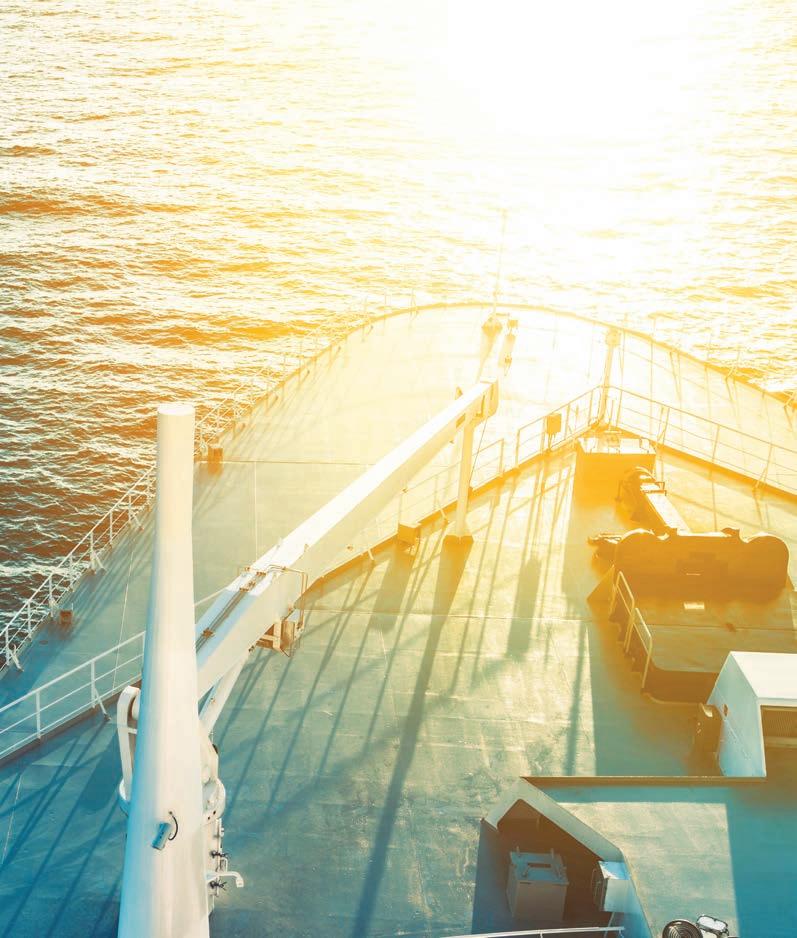
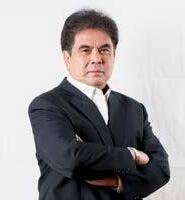
Dato’ Ir. Abdul Hak bin Md Amin Chairman, Malaysia Ship Owners' Association (MASA)
In 1971, Dato’ Ir. Abdul Hak bin Md Amin joined Malaysia International Shipping Corporation Bhd. (now MISC Bhd.) as a Marine Engineering Cadet before moving on to the Fisheries Development Authority as Marine Engineer and then Sime Darby Plantations as Mill Engineer. He next joined Norske Veritas, a Norway-based company as Surveyor and was later appointed its Managing Director in its Kuala Lumpur office. He has worked in many countries such as Norway, Finland, Singapore, Indonesia, Japan, Korea and Australia.
In 2002, he joined his family-owned business, E.A. Technique (M) Sdn. Bhd., which has a current fleet of 44 ships and a marine shipyard in Hutan Melintang, Bekam River, in Perak. It is also one of the leading marine industry players in the country.
“RM25 billion worth of Malaysia’s seaborne trade is carried by foreign ships each year. This is a huge loss to the country. The government must look into this,” he says.
With 46 years’ experience in the maritime industry, Dato’ Ir. Abdul Hak has seen its ups and downs.
“Our shipping industry has been hit hard by the recession. It has not picked up much, though it depends on which sector. The container business is down badly, while the tanker business is steadier and bulk carrier is picking up slightly. Offshore operations involving Offshore Supply Vessels (OSV) are facing difficulty as, with no new explorations and productions, many vessels have been left idle. Petronas has also cut exploration and production activities by 30% per annum, affecting the offshore business in the country. Now, we have a situation of an over-supply of OSVs,” he says, adding that MASA members are affected badly.
“There are idle vessels not only in Malaysia but also all over the world, including in Singapore, which is a big player in offshore operations. When Singapore dumps its price, the offshore business in Malaysia is naturally affected.
“We look forward to when the world oil price either stays at the current level or to go up to US$65 per barrel; then we will be quite happy. The oil price of US$100 per barrel is history. It won’t come to that level again. If exploration works can resume, it will benefit ship owners, especially those in offshore operations.”
At one time, he says, Malaysia was No. 17 in the world in terms of fleet size. At the country’s peak in the early 2000s, Malaysia achieved 15 million deadweight tonnes (dwt).
“Now, it is less than 10 million dwt and we are down to No. 24 in the world. There’s a huge reduction mostly because Malaysia International Shipping Corporation Berhad (MISC) has sold its container vessels and bulk carriers. Companies closed down or went into receivership due to the decline in economic environment worldwide,” says Dato’ Ir. Abdul Hak.
However, the decrease in dwt will not affect the country’s position in the International Maritime Organization (IMO) Council, an agency of the United Nations which is responsible for regulating shipping. Member countries elect the council members and Malaysia sits on the council in Category C (general). The country will be lobbying for a council seat for 2018/2019.
Dato’ Ir. Abdul Hak says it’s important that the public be made aware that, with the reduction in production of vessels, a lot of job opportunities will be lost.
“For cadet training, the problem is in the lack of training berths. There are no more ships for cadets to obtain their Certificate of Competency (COC) to become officers or engineers. To get COC, you must have one year of training and service as a cadet on board a ship. We need to build more ships but this is very cost intensive,” he says.
Dato’ Ir. Abdul Hak also touches on the International Convention on Standards of Training, Certification and Watchkeeping for Seafarers (STCW). This sets the qualification standards for masters, officers and watch personnel on seagoing merchant ships. To get the STCW
certification to become a marine engineer and cadet officer, one must undergo a year of practical training on board a training vessel.
“We have a shortage of such training berths. While institutions of higher learning such as UniKL, Ungku Omar Polytechnique and other universities and colleges are producing potential candidates to be cadets and marine engineers, we have a big problem of where to put them. Some have been waiting two years to go for on-board training but they don’t know where to go as there are no training berths,” he explains.
“We have talked to the authorities, especially the Marine Department, with regards to offshore vessels which are not categorised as training vessels. These vessels may not have the full training facilities but the authorities should consider the trainees’ stay on board these vessels as training because of the lack of training berths. We also hope the authorities will consider reducing the sea time requirement for cadets from one year to six months. Don’t penalise the trainees just because they are unable to meet the full sea time service requirement.”
As for naval architects, Dato’ Ir. Abdul Hak says these normally work in shipyards or in ship consultancy companies which offer ship design services. Today, marine engineering and naval architecture are still relevant though they have undergone changes in order to keep up with the changing industry and technology.
Shipyards, especially those in Sabah and Sarawak, are also having problems. Dato’ Ir. Abdul Hak says they do not employ fresh graduates because there is a lack of jobs. This is a reflection of the industry as a whole.
“The government has to look into the problem of our youth. If they cannot find employment, they will end up being a social nuisance,” he says.
Touching more on human capital development, Dato’ Ir. Abdul Hak says IEM can also look into the development of the marine industry from design to management of shipping and shipyards.
“IEM members can share their marine expertise with us while MASA has pools of engineers, can share their experiences through dialogues with IEM members. There are so many things that we can do together,” he says.
“We have a tendency to think that foreigners can do a better job but that is not true. Locals are just as good if not better. Not all foreigners are experts. We have been in this business for over 40 years and it’s time to localise things. It is an irony that we have Malaysians running businesses in Singapore, Dubai, Kuwait, Qatar and elsewhere in the world. Our mindset has to change. We have produced good engineers, architects and other experts.”
In naval ship building, Dato’ Ir. Abdul Hak says we must endeavour to undertake design work in the country instead of getting it done elsewhere or bringing in ship designs from overseas.
“Ship design is not rocket science. Basic ship design is straight forward and simple. You only need to get model

JURUTERA has an estimated readership of 168,000 professionals. Our esteemed readership consists of certified engineers, decision making corporate leaders, CEOs, government officials, project directors, entrepreneurs, project consultants, engineering consulting firms and companies involved with engineering products and services.
Our business partners can be assured that their products and services will be given the circulation and exposure it deserves, thus maintaining a sustained advertising presence to our core readers of decision-making engineers and technical experts. Our website offers an even wider market reach, with added international presence, aided by our international affiliation with official engineering bodies all over the world. Our online and offline advertising features such as banner advertising, article sponsorship and direct e-mail announcements have proven to be successful marketing strategies that will set the businesses of our partners apart from their competition.
For advertising enquiries, please contact:
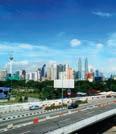




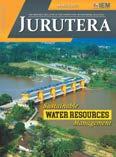
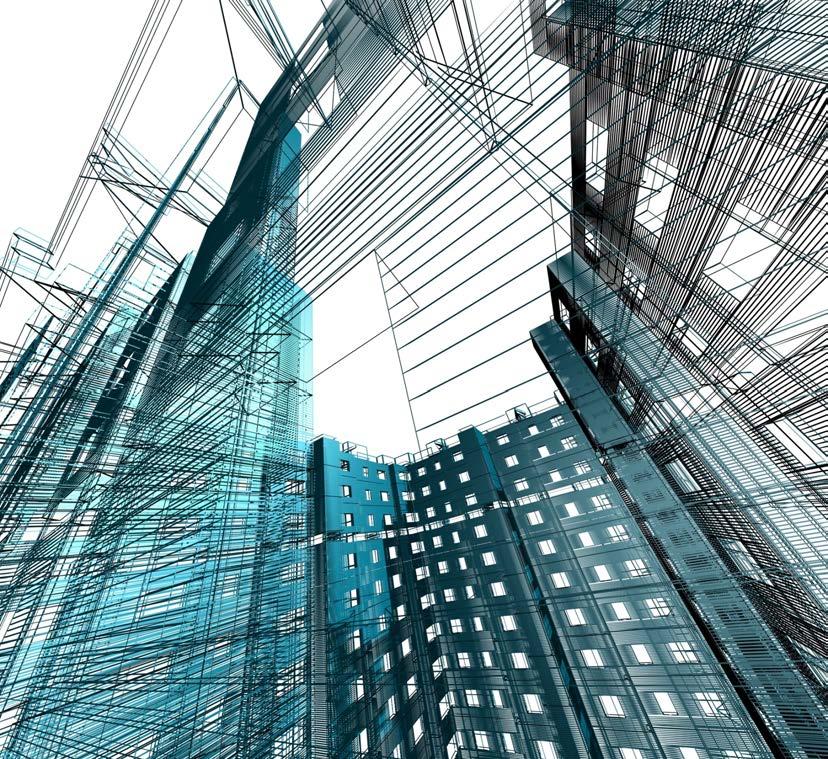


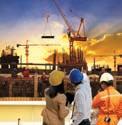
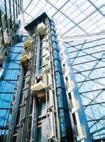




tests done overseas if necessary. Refine and optimise. If something can be done here, there’s no need to get it done in China, for example. We don’t have to buy design. If necessary, we can bring in one or two foreign experts to look at more sophisticated areas. There’s no sophistication in the design of trawlers as well,” he says.
Dato’ Ir. Abdul Hak says E.A. Technique had designed and built the first 10,000 tonne deadweight tanker with double hull in Malaysia.
“Petronas is using it. At the first trial, there was a problem with the speed so we sent it to Amsterdam for testing to find out why we didn’t get the speed. After making some adjustments, we got the speed right. So it’s trial and error. We should continue to be proactive and the government should offer the encouragement for such work to spur the industry,” he says, urging the government to continue to be proactive in providing job opportunities for fresh graduates. One way to do this is to bring the country’s shipping tonnage back to the high levels of the past.
Dato’ Ir. Abdul Hak says the government cannot afford to ignore the annual loss of RM25 billion worth of shipping trade to foreign shipping lines. He urges the government to encourage organisations like Sime Darby and Felda to carry palm oil on Cost, Insurance & Freight (CIF) instead of Free on Board (FOB), where buyers dictate.
He says: “Allow CIF so that local players can start to build ships to carry palm oil. Otherwise this cargo will be carried by foreigners, especially the Norwegians and Chinese. It’s quite sad when this happens.”
CIF and FOB are international shipping agreements used in the transportation of goods between a buyer and a seller. In CIF agreements, the seller assumes insurance and other costs, with liability and costs associated with successful transit paid by the seller up until the goods are received by the buyer. Goods are not considered as delivered until they are in the buyer's possession. FOB contracts relieve the seller of such responsibility as, once the goods have passed the
ship's rail, they are considered as having been delivered into the control of the buyer. As soon as the shipping process begins, it’s the buyer who assumes all liability.
Looking into such details will help the government bring back the country’s shipping tonnage which will, in turn, encourage ship owners to buy more ships.
Dato’ Ir. Abdul Hak says the government used to have a fund to assist local ship owners but not anymore.
“There is also the problem of high interest rates charged by local banks. Malaysian banks charge 7% for ship owners to buy ships, while Singapore banks charge only 1.5%. We are already beaten here. In Japan, there is no interest charged. Furthermore, Malaysian banks insist that ships purchased must be Malaysian-flagged, which also causes us to lose competitiveness. To add to that, we have to pay the Goods & Services Tax (GST) when we buy ships and whatever materials that are needed. With GST, we are no longer competitive,” he says.
“For example, when we buy equipment, we pay GST; otherwise the equipment can’t come in. Although the government says we can collect our money back later, we don’t know when we will get it back. In China, shipbuilders get a 15% rebate on whatever they buy or sell. The shipyards get the rebate before ship sale. With all this, Malaysia has lost even before we can start to compete. China is so much more pro-shipping and pro-maritime compared to us.”
While he acknowledges that the Ministry of Transport has been helpful, more effort must be made to recover what has been lost in the industry.
He says: “RM25 billion is a huge sum and it can be recovered if the government assists ship owners. We must have more local ships and local owners.”
Dato’ Ir. Abdul Hak turns to another issue affecting the local shipping business: The government wants to liberalise the cabotage (coastwise trade) policy because of pressure from Sabah and Sarawak.
In the United States of America, the policy is spelt out in the Merchant Marine Act of 1920, which is also known as the Jones Act, introduced by Senator Wesley Jones. Among other purposes, the law regulates maritime commerce in US waters and between US ports. Section 27 of the Jones Act deals with cabotage and requires all goods transported by water between US ports be carried on US-flagged ships, constructed in the US, owned by US citizens and crewed by US citizens and permanent residents. The law also defines certain seaman's rights.
“The USA is supposed to be a free country but it protect its domestic shipping business very tightly, ensuring only Americans benefit from this business. The whole idea is to protect America’s shipping business. Their cabotage is strict.
The cabotage that we also practise is now the only avenue we have to protect our shipping industry. Every country in the world is trying to hold on to cabotage. Singapore, Indonesia and the Philippines are tightening their cabotage but Malaysia is liberalising it, bringing in foreigners and allowing them to come into our waters and encroaching on our business. This is wrong. Should all Malaysian ships be gone, the consequences run beyond damage to the economy,” he says.
Dato’ Ir. Abdul Hak says that in the Merchant Shipping Ordinance, Malaysian ships can be used as navy vessels in times of war.
“If we don’t have a fleet of ships, what will happen to us? In Britain, during World War II, all merchant ships were converted to navy vessels and equipped for fighting. During times of peace, nobody talks about it but the government should consider the possibility of wars happening. We are surrounded by water and there’s also the distance between Peninsular Malaysia and Sabah and Sarawak to consider,” he explains, adding that the cabotage policy problem is political as it relates to the government wanting to meet the needs of Sabah and Sarawak. However, the government was ill informed of the actual situation.
With regards to the higher cost of consumer goods in Sabah and Sarawak compared to that in Peninsular Malaysia, Dato’ Ir. Abdul Hak says we must look at the whole supply chain, from factory to transportation, ports and warehouses and then retail outlets. Shipping freight is only a small part in the entire chain. There are other costs involved. The higher prices in Sabah and Sarawak are not due to ship owners’ cartel.
He elaborates that 10 years ago, freight cost from Port Klang to Kota Kinabalu for a 20-footer container was RM120,000.
“Now for the same container, the freight cost is only RM600. However, the food stuff in Kota Kinabalu hasn’t go down proportionately with the reduction in freight cost. If the freight cost is the reason for the high price of goods, the cost of food items now like Milo or instant noodles should have come down by 50% from 10 years ago.
“The only thing for us to do is to enforce our cabotage policy – goods must be carried by Malaysian ships only, not by foreigners. The current scenario is that there’s not enough cargo to go to Sabah and Sarawak. It’s not only too little but the throughput to the two states (compared to ships headed for Singapore and Tanjung Pelepas in Johor) is also not worth the while because, most of the time, ships have to wait at ports in Sabah and Sarawak, and this costs money. It is a misconception that MASA members have a cartel that pushes prices up in Sabah and Sarawak. The truth is that ships return from there empty.”
Dato’ Ir. Abdul Hak says MASA has told the government that it is important to develop Kota Kinabalu and other ports and to improve infrastructure and the overall industry in Sabah and Sarawak so that there will be backhaul cargo on return journeys of ships bound for the peninsula.
“We have told the Government to retain the cabotage policy. This is very important. Don’t liberalise the industry by
letting foreigners in. When they first come in, they will dump and lower prices. Then, once they control the local market, they will push up prices,” he says.
“When we had the policy back in the 1980s, our fleet jumped from 0 to 15 million, and Malaysia became No. 17 in the world in terms of fleet size. The Prime Minister has already liberalised parts of Sabah and Sarawak and allowed the order to stand for six months. So if there’s no reduction in the prices of goods in Sabah and Sarawak during this period because of cabotage liberalisation, we have to make representation to the government again.”
The peninsula is not as affected by the problem of liberalisation of cabotage.
“The shipping business is huge in Sabah and Sarawak, especially Sarawak, as sea transport from Kuching to Sibu and Miri is faster than on land. Liberalise there and we’ll see Indonesian transporters coming in to trade although their ships don’t meet our shipping requirements. The rules are strict for Malaysian ship owners but Indonesians can come in a tongkang and they will be allowed to trade. This is what’s happening now,” he reveals. He adds that most of these vessels do not have insurance or Protection and Indemnity (P&I) Club cover, so if they sink in Malaysian waters, the Malaysian authorities will need to salvage them, which will be a burden to the government.
On the future of the industry, Dato’ Ir. Abdul Hak says Malaysia should focus on the seaborne trade as it is very big, at 96% of total marine trade. The balance goes to Singapore.
He says: “The government should look seriously at the maritime business. It is sad that money is going out of the country. We incur loss of foreign exchange when cargo is carried by foreigners. The government should help by mobilising the shipping fund as announced by the Prime Minister in 2014. He had announced an allocation of RM3 billion to help our industry but the money had yet to be disbursed. The implementation stage had failed. Many shipping companies had gone down.” Dato’ Ir. Abdul Hak is of the opinion that the criteria to get the fund is difficult to meet.
“It is impossible. Some companies face difficulties and need help to restructure and get back into business. In cases where these companies are not able to repay their loans, banks should not seize their vessels. Instead the vessels should be released and allowed to operate and earn revenue. Otherwise the ships will become scraps. It’s better to restructure the bank loan so that the vessels can continue to operate,” he suggests.
He says that MASA has proposed that the government sets up a shipping fund called Dana Kapal, which will be similar to Dana Harta. Shipping companies that face problems can then receive help from the government through Dana Kapal, which can take over and help the companies to manage the ships.
“So far, the government has not taken up the suggestion. MASA, which is already well organised and
has the knowledge in the shipping business, can assist the government with Dana Kapal. We can complement each other,” he says.
“We may not be able to achieve what Singapore has achieved. But, like Singapore, we have good infrastructure – a good network of roads, good hotels, airlines and airports near major ports. So why are ship owners not coming to Malaysia?
“This is because they don’t want to do bunkering here. They don’t want to make the crew change and buy provisions here, mainly because of red tape; there are so many different agencies involved in red tape, such as Immigration and Customs.
“To be a maritime nation, we must be very focused in what we want to do. In Singapore, I only have to deal with the Marine & Ports Authority of Singapore, not with any other authority. I may as well go to Singapore because it is so much easier. Singapore achieves 60-70 million tonnes of bunker every year. If we can get 10% of this (or 7 million tonnes), it is enough.
“In Singapore, the bunker business is huge and amounts to trillions of dollars. Crew change is also very big business there. Crew change involves hotel stays and buying of provisions for meals. Our government should look into crew change business. We already have the infrastructure for crew change but we’re making things difficult. If local shippers already find it hard, what more the foreigners? The Malaysian red tape deters shippers from doing business here. We should have a one-stop centre. We need a champion within the government to move this.”
Dato’ Ir. Abdul Hak also comments on the Malaysia Shipping Master Plan launched by Transport Minister Datuk Seri Liow Tiong Lai, on World Maritime Day on 5 September, 2017.
“We put our heads together and spent two years to come out with the plan to make Malaysia a maritime nation,” he says of the five-year plan (2017-2022) which contains specific maritime industry targets that concern both tonnage and markets.
In terms of tonnage, the plan states that 90% will come from bulk carrier, 65% container ships, 34% general cargo ships, 31% oil tankers and 9% other vessels. The targets set for markets are 20% from global energy shipping, 30% intraAsean shipping, 75% domestic OSV, 90% domestic shipping and 90% local port tugboat operations.
“There are also targets in terms of investments, human capital and financing. Various issues of the present and the future have also been addressed and we have the Malaysia Shipping Council to look into the implementation. If we follow the plan, we will, hopefully, achieve the targets,” says Dato’ Ir. Abdul Hak.
“We have come a long way. We have not reached a dead end but there’s a lot of room for improvement. We want to be more competitive and on par with Singapore. The maritime industry is still very big and for Singapore, it’s good business.”
Dato’ Ir. Abdul Hak explains further about how GST can affect the industry in the future.
“Our value chain can close down because of the GST issue. In the past, our value chain thrived in Johor, but not anymore. Because of the GST requirement to pay tax upfront before goods are sold, companies are now buying in Singapore. Companies should be taxed only after they have sold their goods, not before,” he says.
“It should be zero-rated for the shipping and maritime industry. The government should not impose GST on shipbuilding, ship repair and spare parts. It should be zero-rated for all these as otherwise we are no longer competitive.”
He suggests that the government should also look at the definition of ships in so far as the imposition of GST is concerned. He says it should be standardised according to the definition as stated under the Merchant Shipping Ordinance 1952 (MSO), which states that a "ship" includes every description of vessel used in navigation not propelled by oars.
“The problem is that the various agencies have their own interpretation of ships. For example, Customs and Inland Revenue have different interpretations of ships and this affects us in terms of corporate tax. Ship definition should be standardised in order to address the tax issue. Follow the MSO definition. Ships are vessels without oars; if you propel with engines, you come under ships. It’s that simple,” he says.
Dato’ Ir. Abdul Hak says the industry is also looking into engines fuelled by LPG and LNG, which affect pollution level.
“We are discussing with Petronas on how to bring LNG vessels into our waters for local owners to build ships that use LNG as fuel. We must address this and have the infrastructure to accept LNG as fuel so as to make the bunkering facility for Malaysia,” he says.
Dato’ Ir. Abdul Hak also touches on the Energy Efficiency Design Index (EEDI) which concerns all the elements that influence the energy efficiency of a ship, starting from its design phase.
“I am involved at the International Maritime Organisation level on the EEDI issue. All new ships have been regulated. They must meet the requirements with regards to the emission of carbon dioxide (CO2). It is already enforced. All manufacturers of ship engines must find solutions to address this. As for old and existing vessels, the operators have been given a timeframe to find ways to reduce CO2 emission, such as by reducing speed and having the most economical passage planning,” he says.
Big ships are also governed by the International Oil Pollution Prevention Certificate. It is already enforced on and implemented by big ships. Dato’ Ir. Abdul Hak concludes by saying that the concern now is for small vessels to be equipped with facilities such as better sewage disposal methods and other environmental-friendly systems and methods.
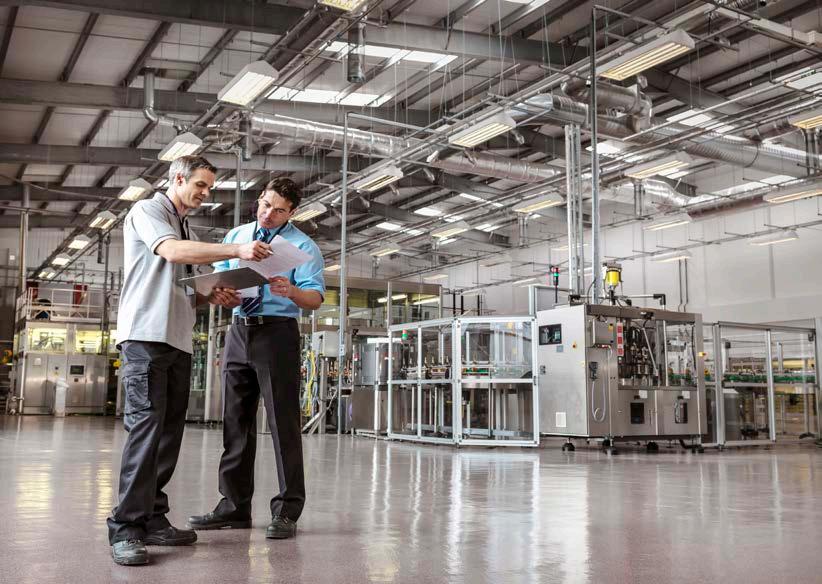
Discover the MGE Galaxy 300 10-80kVA
• Secure: Maximum protec�on and availability with double-conversion online topology
• Compact: Wide or narrow tower in space-saving footprint
• Simple: Easy to install and operate
• Efficient: up to 93.5%, reduces cost of ownership
• Flexible: 1+1 parallel capability meets redundancy needs

• Serviceable: Push-open, front access to maintenance bypass and slide-out boards make servicing easy
• Fast-charging: Shorter ba�ery recharge �me prevents deep discharge damage
• Compa�ble with Schneider Electric's lithium ion ba�ery solu�on
Lithium Ion Ba�ery features
Reduces footprint
Improved ba�ery life�me / reduced maintenance
Improved backup storage predictability and manageability
Reduce cooling constraints
Reduce weight
Reduce total cost of ownership
Call us now. We can help you to optimize energy and sustain performance.
Northern
Mr. Paul Phuah +6012-477 1671 Bioenergy Projects Sdn. Bhd.
Central
Mr. Steven Ong +6012-690 6920 KVC Industrial Supplies Sdn. Bhd.
Mr. Louis Loke +6016-330 1366 MCL Berhad
Southern
Mr. Chee +6016-723 4723 MCL Berhad
Mr. Steven Ong +6012-690 6920 KVC Industrial Supplies Sdn. Bhd.
East Malaysia
Mr. Neo +6016-710 0013 MCL Berhad


Global climate change and warming due to excessive emission of carbon dioxide (CO2) have an impact on the Malaysian climate and environment. Shipping and, in particular, port operations are exposed to the vagaries of climate change. The rise in sea level, increase in temperature, rainfall, storm, flood and runoff affect overall port operations, damaging infrastructure, equipment, cargo as well as contribute to coastal erosion and sedimentation.
Data from the United Nations shows that in Malaysia, carbon emissions in 2006 stood at 187 million tonnes (or 7.2 tonnes per person), one of the highest in the world. In view of this, the government established the National Climate Change Policy in 2009 with the aim to reduce CO2 emission in Malaysia to 40% by 2020 compared to 2005.
Ports are an important player in the shipping industry; they play a crucial role as transportation hubs for most of the goods transported globally. Ports are usually located in areas of sensitive environment and high risks, which make them vulnerable to climate-related changes. Becker, et al., (2012) stated that most port operators believe that climate change will significantly affect operations.
Climate change can be “attributed directly or indirectly to
The landmark Green Port Policy was adopted by the Board of Harbor Commissioners in 2005, and reaffirmed in 2015. The policy was and still is a game changer for the Port of Long Beach - directing the Port to do business in an environmentally friendly way.
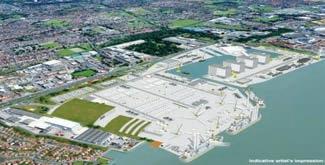
human activity which alters the composition of the global atmosphere and which is in addition to natural climate variability observed over comparable time periods” (UNFCCC, 2004).
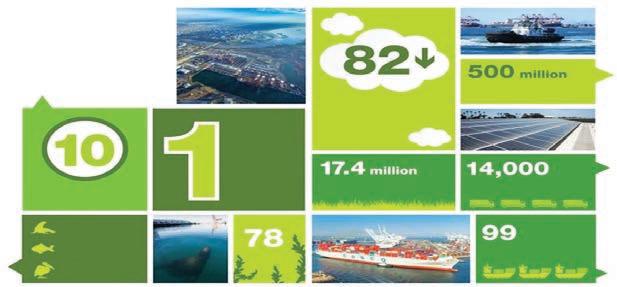
EXTREME
TEMPERATURE
Physical damage
SEA LEVEL RISE
STORMS FLOODS
Physical damage
Interruption of supply of goods and transport of passengers
WAVE HEIGHT
Loss of lives, ships and cargo
Downtime
Changes in ship routes
Changes in global trading patterns
More complex marine operations
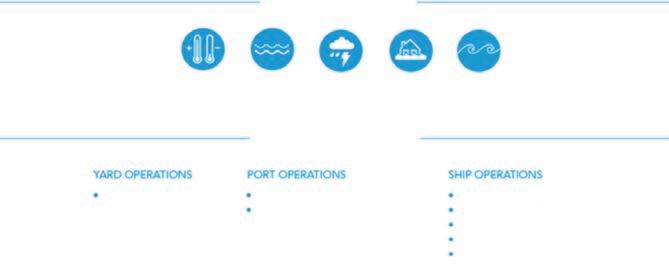
Climate change risks for the maritime value change.
Climate change risks for maritime value change
Likewise, IPCC (2007) defines climate change as “a change in the state of the climate that can be identified (e.g. using statistical tests) by changes in the mean and/ or the variability of its properties, and that persists for an extended period, typically decades or longer”. It also refers to any change in climate over time, whether due to natural variability or as a result of human activity.
The shipping industry requires fossil fuel for engines and this produces gas and aerosol products such as CO2 and water vapour, nitrogen oxides (NOx), VOCs, carbon monoxide (CO) and sulphur dioxide (SO2) (Dessens, et al., 2014). These gases cause ozone layer depletion, global warming and climate changes either regionally or
globally as they affect the composition and the balance of the atmosphere. It was reported that nearly 70% of ship emissions occur within 400 km of coastlines, causing air quality problems through the formation of ground-level ozone, sulphur emissions and particulate matter in coastal areas and harbours (Eyring, et al., 2005).
In Malaysia, NAHRIM (2006) reported that the national warming trend had increased +0.18°C per decade (1951-1996) and that the sea level was raised about <+1.3mm/year (1986-2006), based on 2 pilot sites in
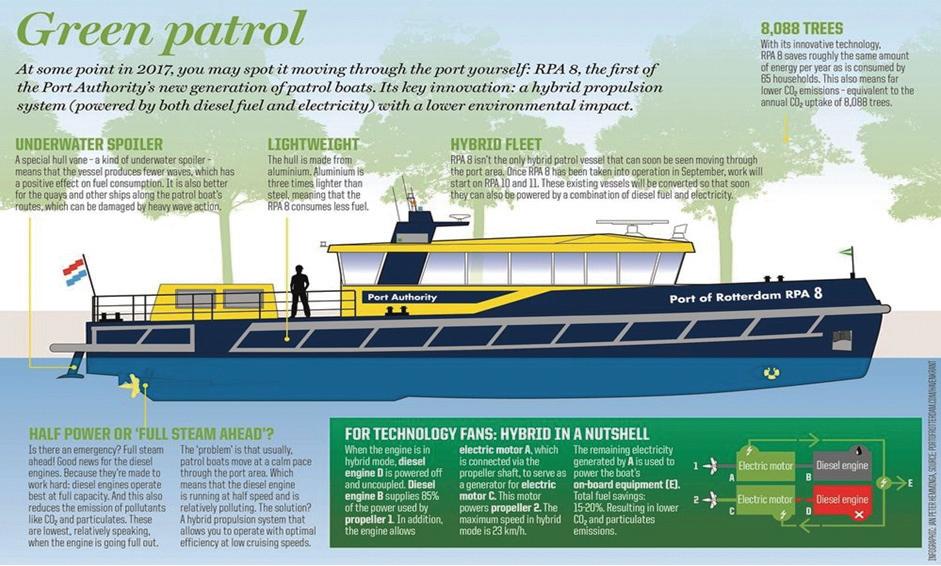
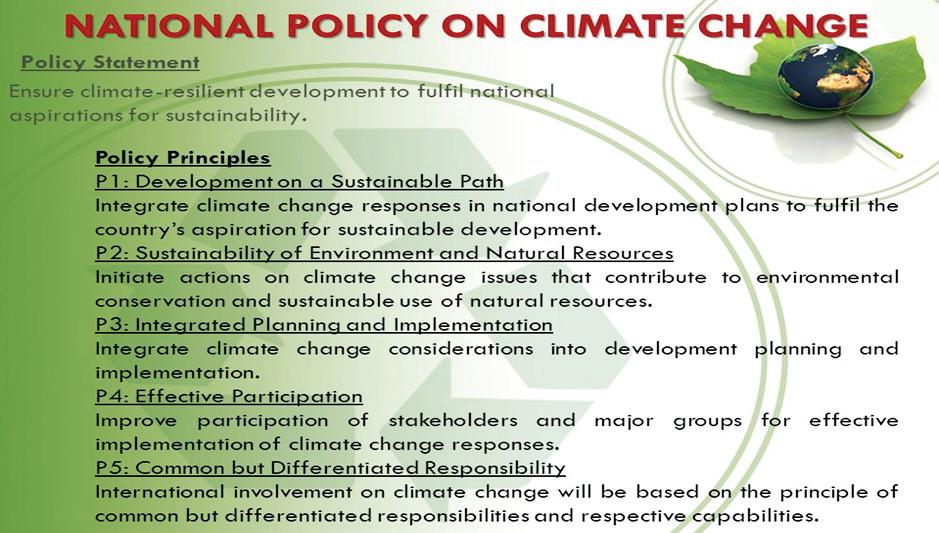
National Policy on Climate Change in Malaysia the peninsula. One of the factors that caused the rise in temperature was the high level of carbon dioxide (CO2) emissions.
Climate changes affect the overall operations of ports in the country as well as their related infrastructure due to changes in sea levels, floods, storms, strong winds and higher temperatures (Gallivan, Bailey, & O'Rourke, 2009). These have a huge impact as ports are located along the coast, in low-lying areas and deltas (UNCTAD, 2011).
According to PIANC (2008), sea levels had already risen by 10-20cm in the past century and was projected to continue rising due to the melting of polar ice and mountain glaciers as well as the expansion of warmer sea water.
Any increase in temperature also impacts port operations as it will affect auxiliary port infrastructures such as paved surfaces which may deteriorate faster in hotter conditions. Finally, higher temperatures also affect humans and natural environments as most port employees work in the outdoors. Operational changes may be required to protect these workers from extreme heat and to avoid heat-related health problems (Gallivan et al., 2009).
At the United Nations Conference on Climate Change in Copen hagen in 2009, Malaysia agreed to reduce its CO2 emission to 40% by 2020 from 2005 levels, subjected to assistance from developed countries. Our government has approved a policy on Climate Change, aimed at ensuring climate-resilient development to fulfill national aspirations for sustainability (NRE, 2010). The objectives are to strengthen competitiveness and to improve the quality of life, the integration of climate change responses into
policies, plans and programmes and the strengthening of institutional and implementation capacities (NRE, 2010).
a) Vessel Speed Reduction Programme: The voluntary vessel speed reduction programme has been established for vessels to slow down to 12 knots within 20 nautical miles of the port. For example, it is reported that current compliance is about 95% for Port of Long Beach and 88% for Port of Los Angeles (Kanter, 2006). The objective is to reduce NOx emissions from ocean going vessels (OGVs) when they slow down as they approach or depart from ports as reduced vessel speed demands less power from the main engine which, in turn, reduces NOx emissions and fuel consumption.
b) Vessel Fuel Incentive Programme: This programme encourages vessel operators to use low sulfur (0.2% sulfur or less) Marine Gas Oil (MGO) or Marine Diesel Oil (MDO) in their main engines during their approach to or departure from ports up to 20-40 nautical miles (CAAP, 2000-2014). For the programme, ports provide funding to cover the cost differential between the cleaner burning lowsulfur fuel and the heavy bunker fuel typically used. To receive the incentive, vessel operators are required to be compliant with the Vessel Speed Reduction Programme speed limit of 12 knots over the distance they wish to receive the incentive (20 or 40 nautical miles) and to use low sulfur fuel in the auxiliary engines while berthed.
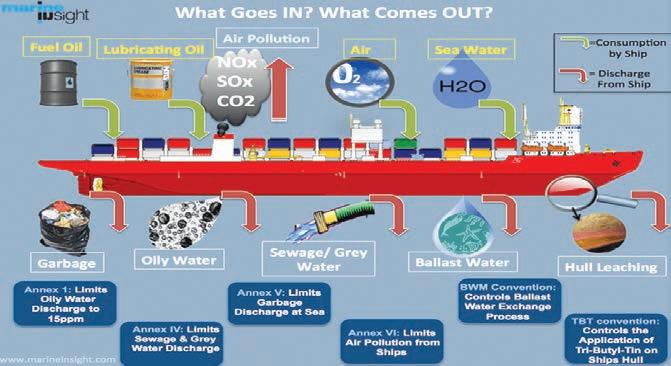
Consumption and discharge processes of a ship Source: www.marineinsight.com (Sept. 2017)
c) On-shore Power: One effective strategy to reduce emission is to replace the use of a ship’s auxiliary engines by plugging them to on-shore power. This is an application of using electrical power for ships at berth rather than diesel-burning engines, a practice called shore power or “cold ironing”; it is reported that on-shore power can reduce air pollution from ships at berth by 95% (POLB, 2014). For instance, the California Environmental Protection Agency (CEPA) regulation and the California Air Resources Board (CARB) in 2007
approved the "Airborne Toxic Control Measure for Auxiliary Diesel Engines Operated on Ocean-Going Vessels At-Berth in Port" regulation.
d) Cargo-handling Equipment: Cargo-handling equipment is considered a major contributor to gas emission as diesel is the fuel used. The standards include:
1. Cleanest available alternative-fuelled engine that achieves maximum reductions in NOx and reduces particulate matter (PM) to 0.01 g/bph-hr.


For enquiry please contact: CRIB TECHNOLOGIES SDN BHD (564096-A), ARE WALL (M) SDN BHD (542608-W) No. 28-2, Jalan Setia Utama AS U13/AS, Setia Alam, Sek U13, 40170 Shah Alam, Selangor
Tel: +603-3359 1227 (Hunting Line) Fax: +603-3358 7392
Email: groadesb@yahoo.com Website: http://www.ctsbare.com
Cleanest available diesel-fuelled engine which achieves maximum reductions in NOx and reduces PM to 0.01 g/bph-hr.
If there are no engines available at the time which can reduce PM to 0.01 g/ bph-hr, then the cleanest available engine (either fuel type) should be purchased and retrofitted with the cleanest emission control technology. All cargo-handling equipment engines which have more than 750hp will be equipped with the cleanest emission control technology.
Harbour Craft: The Ports Clean Air Action Plan also has developed strategies to reduce emissions from harbour crafts, including: All harbour crafts need to meet the Environmental Protection Agency (EPA) Tier 2 Standards or equivalent reductions by 2008.
All previously repowered harbour crafts will be retrofitted with the most effective NOx and/or PM emissions reduction technologies by 2011.
When Tier 3 engines become available, all harbour crafts will be repowered with the new engines within five years.
All tugs will use shore-power at home fleeting locations (CAAP, 2000-2014).
There are many challenges in areas such as regulations, technology, operations, human resources and financing, among others. Adjusting to a low-carbon future requires port managements to cap their carbon emission to address the issue of climate change. To significantly reduce carbon emission within port operations, they must overcome challenges such as lack of resources, weak regulatory frameworks, lack of consensus among stakeholders and technological limitations.
That there are misconceptions among port managements is acceptable, given that port operation is not the key emission culprit. There is a lack of awareness on the part of the associated parties on their contributions to carbon emission and global warming as well as a lack of financing and human capital to procure and operate green technologies.
Our country’s ports handle a total of 17 million TEU containers and act as pulse points to its economic focus. Two of our ports are on the list of the world’s top 20 container ports by volume handled. Due to the expansion of global trade, it is likely that this capacity will be increased in the future. While this leads to the growth of our economic wellbeing, it also contributes significantly to pollution, particularly in CO 2 emissions which has been identified as one of the contributors to climate change.
To support the National Climate Change Policy from the perspective of port operations, one approach to reduce CO2 emissions is to have Green Port initiatives and our major ports have undertaken efforts to apply Green Port initiatives in their businesses and operations. Their efforts are laudable and should be emulated by other ports in Malaysia.
Becker, A., Inoue, S., Fischer, M., & Schwegler, B. (2012). Climate change impacts on international seaports: Knowledge, perceptions, and planning efforts among port administrators. Climate Change, 110(1), 5-29.
[2] BPC Policy (2008). San Diego Bay Green Port Policy.
[3] CAAP. (2000-2014). San Pedro Bay Ports Clean Air Action Plan. The Ports of Long Beach and Los Angeles. Retrieved 20 Dec, 2014, from http://www.cleanairactionplan.org/.
[4] CAAPTAP. (2008). 2007 Annual Report of Clean Air Action Plan Technology Advancement Program The Ports of Long Beach and Los Angeles (Vol. 1, pp. 6).
[5] CAAPTAP. (2014). 2013 Annual Report of Clean Air Action Plan Technology Advancement Program The Ports of Long Beach and Los Angeles (Vol. 7, pp. 8).
[6] CARB. (2014a). Rail Emission Reduction Program California Air Resources Board. Retrieved 20 Dec, 2014, from http://www.arb.ca.gov/railyard/railyard.htm.
[7] CARB. (2014b). Shore Power for Ocean-going Vessels. California Air Resources Board. Retrieved 20 Dec, 2014, from http://www.arb.ca.gov/ports/shorepower/shorepower.htm.
[8] CEPA. (2006). San Pedro Bay Port Clean Air Action Plan Overview Report: California Environmental Protection Agency, Port of Los Angeles, Port of Long Beach.
[9] Dessens, Olivier, Anger, Annela, Barker, Terry, & Pyle, John. (2014). Effects of decarbonising international shipping and aviation on climate mitigation and air pollution. Environmental Science & Policy, 44(0), 1-10. doi: http://dx.doi.org/10.1016/j.envsci.2014.07.007.
[10] Eyring, V., Köhler, H. W., van Aardenne, J., & Lauer, A. (2005). Emissions from international shipping: 1. The last 50 years. Journal of Geophysical Research: Atmospheres, 110(D17), D17305. doi: 10.1029/2004JD005619.
[11] Gallivan, Frank, Bailey, Kathleen, & O'Rourke, Larry. (2009). Planning for impacts of climate change at US ports. Transportation Research Record: Journal of the Transportation Research Board, 2100(1), 15-21.
[12] IMO. (2008). International Shipping and World Trade Facts and Figures. Retrieved 20 Dec, 2014, from http://www.imo.org/KnowledgeCentre ShippingFactsAndNews/TheRoleandImportanceofInternationalShipping/Pages/ TheRoleAndImportanceOfInternationalShipping.aspx.
[13] IPCC. (2007). Climate Change 2007: Synthesis Report. Contribution of Working Groups I, II and III to the Fourth Assessment.
[14] Report of the Intergovernmental Panel on Climate Change. In R. K. P. The Core Writing Team, Andy Reisinger (Ed.). Geneva, Switzerland.
[15] IPCC. (2013). Climate Change 2013: The Physical Science Basis. Contribution of Working Group I to the Fifth Assessment Report of the Intergovernmental Panel on Climate Change (T. F. Stocker, D. Qin, G.-K. Plattner, M. Tignor, S. K. Allen, J. Boschung, A. Nauels, Y. Xia, V. Bex & P. M. Midgley Eds.). Cambridge, United Kingdom and New York, NY, USA: Cambridge University Press.
[16] Kanter, Robert. (2006). San Pedro Bay Ports Clean Air Action Plan. 925 Harbor Plaza Long Beach, CA 90802: Planning and Environmental Affairs, Port of Long Beach.
[17] Khalid, Nazery, Tang, Joanna, & Rajamanickam, Suresh. (2010). Greening the maritime sector: Preparing for a low carbon future. Kuala Lumpur: Maritime Institute of Malaysia, 2(0), 1.
[18] NRE. (2010). National Policy on Climate Change. Putrajaya: Ministry of Natural Resources and Environment Malaysia.
[19] PIANC. (2008). Waterborne transport, ports and waterways: A review of climate change drivers, impacts, responses and mitigation EnviCom - Task Group 3 Climate Change and Navigation: The World Association for Waterborne Transport Insfrastructure.
[20] POLB. (2014). Clean Air Action Plan : Shore Power Port of Long Beach. Retrieved 20 Dec, 2014, from http://www.polb.com/environment/air/shorepower.asp.
[21] Sanfield, Phillip. (2013, 18 July 2013). Ports Announce Clean Air Action Plan Award Winners, Five Companies Recognized for Initiatives to Improve Air Quality, San Pedro Bay Ports Clean Air Action Plan.
[22] Shamsiah. (2012, October 22). Port of Tanjung Pelepas wins Asia-Pacific green terminal Operator of the year award. Bernama.
[23] Theseira, Gary William. (2014, August 2014). Increasing awareness of the need to reduce carbon dioxide emissions. JURUTERA : The Monthly Bulletin of The Instituition of Engineer, Malaysia, 2014, 6-8.
[24] UNCTAD. (2011). Climate Change Impacts and Adaptation: A Challenge for Global Ports. Paper presented at the UNITED NATIONS CONFERENCE ON TRADE AND DEVELOPMENT, Geneva, Palais des Nations.
[25]UNFCCC. (2004). UNITED NATIONS FRAMEWORK CONVENTION ON CLIMATE CHANGE : ARTICLE 1. Retrieved December 17, 2014, from http://unfccc.int/essential_background/convention/background/items/2536.php.
[26] USEPA. (2014). Nonroad Engines, Equipment, and Vehicles: Locomotives. United States Environmental Protection Agency. Retrieved 20 Dec, 2014, from http://www.epa.gov/otaq/ locomotives.htm.
Author's Biodata
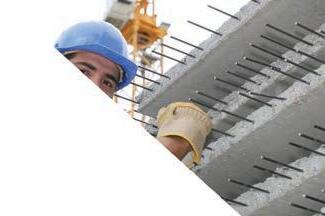
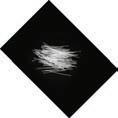




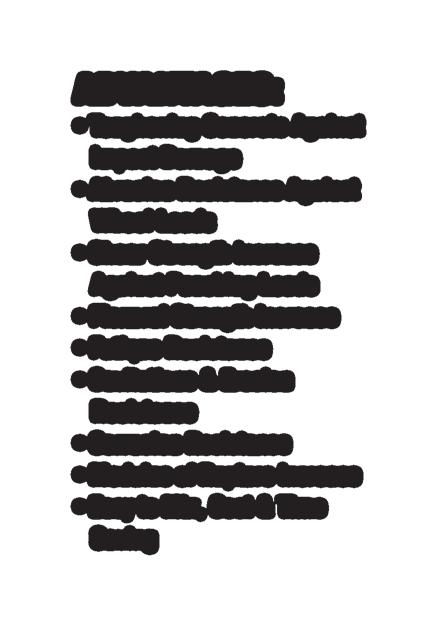

We are a supplier of high quality geosynthetic products used for soft soil stabilization, slope reinforcement, coastal erosion protection, river bank protection, landfills, drainage, road and railway construction.
NEXFORCE
We also provide design, specification, bill of quantities, cost estimate and drawings free-of-charge.








The IEM Editorial Board takes this opportunity to thank you for your support of JURUTERA. Over the last few years, we had been striving to improve the quality of JURUTERA to bring you more reading pleasure. In line with our effort to improve, we will be introducing a new JURUTERA with effect January 2018, with new layout design and a PHOTOBLOG Column branded as "THROUGH THE EYES OF AN ENGINEER"!!
We take this opportunity to invite interested members to submit interesting photographs related to engineering – maybe old engineering works or good engineering designs etc, accompanied by captions of 15 – 20 words. It will would be good if the photographs coincide with the monthly themes.




Members are also encouraged to submit articles for the travel column which will also be given a new facelift.
We bring you the themes lined-up for the first six months of 2018:
Lee Hui Seng (012-3293378) Fazrol (012-3163341)
We are also pleased to introduce to you the new design for JURUTERA 2018




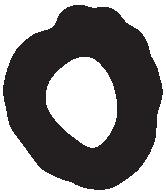









As oceans cover two-thirds of the Earth’s surface, they have a huge implication on the future of all human beings. Maritime accidents caused by structural failures are significant sources of lost revenue, so periodic preventative inspections of underwater structures are very important to detect typical defective situations such as corrosion, cracks and growth of marine organisms.
Figure 1 shows typical corrosion on a jetty and Figure 2 shows two years of marine organism growth on the starboard bow of a boat. These defects are critical factors which will affect the service lifetime of underwater structures, therefore, any inspection data obtained will be useful in helping to detect such defects in order to schedule maintenance jobs.
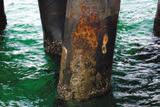
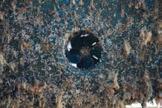
Underwater inspection technique is also important in maritime archaeology surveys. For example, it can help locate, identify and investigate an unknown shipwreck. Studying shipwrecks such as that in Figure 3, can help us
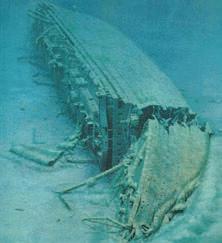
understand the past, connect us to our heritage and teach us lessons on damage caused by environment and human error.
The levels of inspection are defined according to the effort and intensity required. There are three levels: Level 1, 2, and 3 [4,5], based on the American Society of Civil Engineers (ASCE) Waterfront Facilities Inspection and Assessment Manual.
This includes acoustic and visual examination of the underwater structure. Level 1 inspection normally covers the entire exterior surface of the structure, whether it is a jacket leg, retaining wall or a ship’s hull.
A visual inspection is often used to detect obvious damage or deterioration of the submerged structure. In bathymetric survey, acoustic sounding equipment, such as single-beam echo sounder, multi-beam echo sounder and side scan sonar, is used. This provides information about variations in depth to the seabed or structures on it.
Figure 4 shows a map of the seabed generated by using side scan sonar, the most likely method of finding unknown wrecks due to its large coverage and high surveying speed.
Furthermore, level 1 inspection also indicates the location or the portion of underwater structure which requires more detail inspections.
Level 2 inspection is more detailed and requires the underwater structure to be cleaned of marine growth. This level is intended to detect and identify damaged and deteriorated areas which may be hidden by marine growth or corrosion, so partial removal of the biofouling growth or corrosion products is required. Surface cleaning tools like
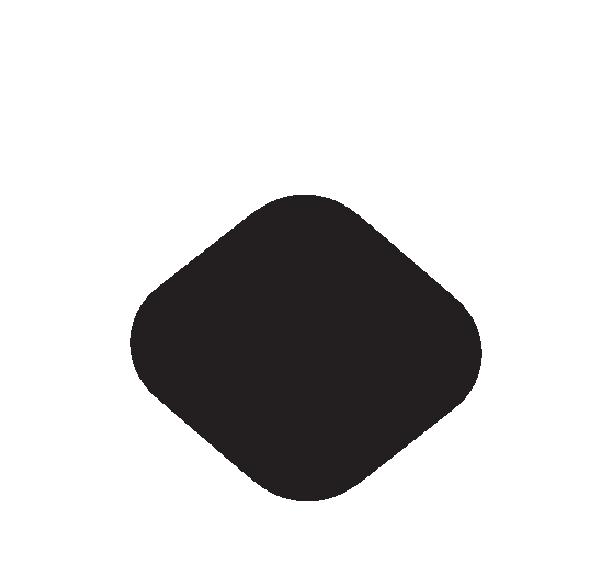
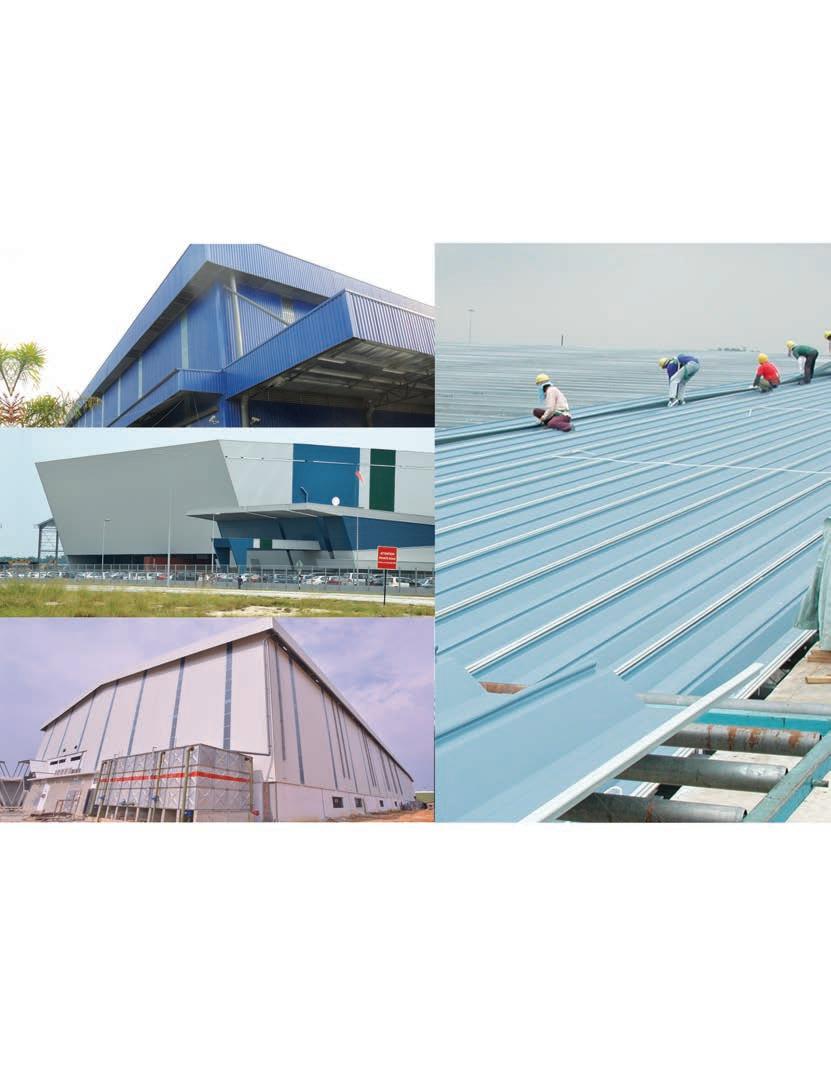





brushes, hydraulic grinder with barnacle buster attachment or a high-pressure water jet gun may be used. During the cleaning process, care should be exercised to prevent damage to the surface of the underwater structure. As Level 2 inspection is expensive and time consuming, it is done on critical location of the underwater structure. Figure 5 shows a Level 2 inspection of a steel pile. The marine growth on the surface of the pile is removed before measuring its length.
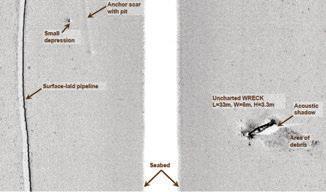
Level 3 inspection is a highly detailed inspection used to detect hidden or interior damage and to evaluate
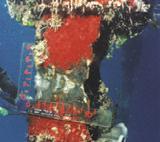
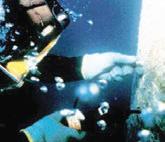
material homogeneity. It includes extensive cleaning and detailed measurements using non-destructive and partially destructive testing techniques, such as thickness measurement and hardness testing. Figure 6 shows a diver measuring the remaining thickness of a steel pile using an underwater ultrasonic thickness measuring device.
Table 1 summarises the detectable defects and inspection tools for the three levels of inspection. The level of inspection is usually decided early in the planning phase. There are many international standards available for underwater inspection. This article mentions a few of them. The National Bridge Inspection Standards (NBIS) establishes criteria to determine the level and frequency to which the bridge must be inspected. The periodic inspection of
1. General visual or acoustic inspection to confirm as-built condition, detect severe damage, and locate position.
Extensive corrosion, major spalling and cracking, broken piles and bracings, and severe mechanical damage.
2.
3.
To detect surface defects normally obscured by marine growth.
To detect hidden and imminent damage or to collect more detailed information.
Corrosion staining, surface cracking and crumbling, loss of bolts and fasteners, coating loss and moderate mechanical damage.
• Acoustic imaging tools: Single-beam echo sounder, multi-beam echo sounder and side scan sonar.
• Visual recording tools: Underwater camera and clear-water box.
• Ground penetrating radar for detecting scour holes.
• Dimension measuring instruments: Tape measures, calipers, rule, and graduated scales.
• Visual recording tools: Underwater camera and clear-water box.
• Ultrasonic measuring devices for measuring thickness of steel.
• Magnetic particle testing using electromagnetic yoke with magnetic field indicator for detecting surface discontinuities in magnetic structures.
Thickness of material, electrical potential for cathodic protection, thickness of coating, internal voids and cracks and material strength.
• Ultrasonic pulse velocity meter for estimating the strength of concrete structures and locating cracks and voids.
• Schmidt test hammer for estimating the compressive strength of concrete structures.
• Rebar locator for locating reinforcing steel in concrete structures.
• Underwater voltmeter for determining the level of cathodic protection on steel structures.
submerged components of a bridge is vital to determine damage that may have occurred since the previous inspection.
On the other hand, the International Association of Class Societies (IACS) shipbuilding and repair quality standard, IACS REC 47, provides knowledge on the different types of defects and damages that occur on ships or hull structures. This standard provides guidelines and requirements for hull structural and welding preparation and workmanship quality. Besides, NACE International Standard Practice for In-Line Inspection of Pipelines, SP0102-2010 provides requirements for qualification of onshore and offshore pipeline inspection. It is applicable to carbon steel pipeline systems used to transport natural gas or hazardous liquids. It is a performance-based standard, which includes tethered or free-flowing systems for detecting cracks, metal loss, mechanical damage and pipeline mapping. However, this standard does not define how to meet qualification requirements.
As conventional underwater inspection operations using human divers and manned underwater vehicles, are high risk, high cost and require dedicated surface support, Unmanned Underwater Vehicles (UUV) are now often used for the job. UUVs are able to accomplish underwater inspection missions in a cost-effective manner when the underwater conditions prove too dangerous for divers. Today, many UUVs related to underwater structure inspection applications have been developed such as:
1. Walking Robot: A walking robot moves on the seabed with crawlers or legs, without making the water muddy. Figure 7 shows the schematic view of a six-legged walking robot inspecting rubble foundation with an underwater camera. Figure 8 shows CR200, a sprawling type underwater walking robot which was used to survey underwater structures and shipwrecks off the coast of the Korean peninsula. A walking robot can maintain a stationary direction and position, thus giving high quality visual inspection data and accurate measurements. However, it is only able to inspect underwater structures which are near the seabed.
2. Climbing Robot: A climbing robot climbs along the underwater structure while inspecting it. Normally a climbing robot will make physical contact with the submerged structure to be scrutinised. A pole climbing
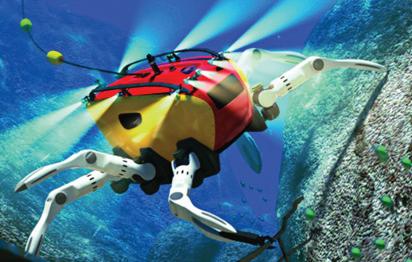
robot is designed [10] for bridge pier inspections. As shown in Figure 9, this consists of two identical mobile robots moving along opposite surfaces of the pole. Figure 10 shows AIRIS 21, a wall climbing robot which performs inspections on the nuclear reactor pressure vessel shell from the inside. Using two propellers, AIRIS 21 sticks onto the vessel walls and moves along the wall, using one caster wheel. This wall climbing robot can inspect structures at a very close distance, thus providing high resolution data.
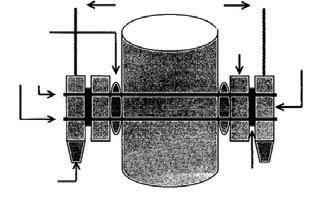
Transponder
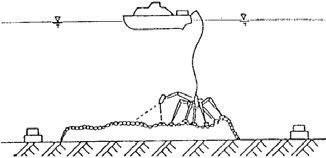
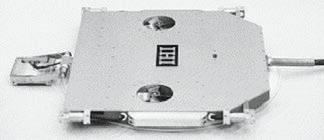
Transponder
(ROV): Many ROV prototypes have been developed to inspect various underwater structures like ship hulls, shipwrecks and wall of port dock. An ROV can inspect an underwater structure without physical contact. Most employed a passive stabilisation system to retain its original vertical axis as vertical without control input needed. Figure 11

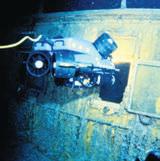
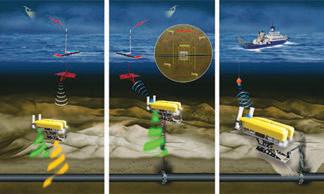
shows ROV Seaeye Panther inspecting an underwater pipe using an underwater camera and profiling sonar while Figure 12 shows Jason Jr., an undersea robotic vehicle exploring the sunken Titanic in 1986. An ROV faces serious limitations because of the tether cable which links it to the control station. It cannot go far from the control station without a long tether cable and a long tether cable can easily get stuck.
4. Autonomous Underwater Vehicle: This robotic vehicle can travel through the ocean deep without requiring the real time control of an operator. It provides a flexible and economical solution to many underwater inspection tasks such as underwater pipeline inspection and submerged ship hull inspection. Figure 13 shows an AUV performing pipeline localisation, leak detection and intervention.
5. Towed Vehicle: A towed vehicle is connected, via an umbilical cable, to a mother ship which provides towing forces and electric signals. Figure 14 shows a two-stage towing arrangement that includes a long primary cable, a gravity depressor and a secondary cable. This arrangement achieves excellent performance in terms of rejection of the disturbances transmitted to the towing system. A towed vehicle can maintain its efficiency even if the current is fast, complex and in the opposite direction. However, this inspection technique is costly because it involves both the submerged vehicle and surface vessel. Figure 15 shows an AUV employed as a towed vehicle for underwater observations in the Tokyo Bay port area [16].
Primary Cable gravitic depressor
secondary cable (pigtail)
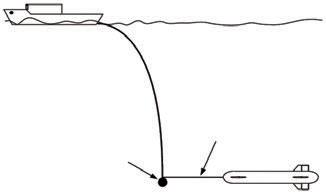
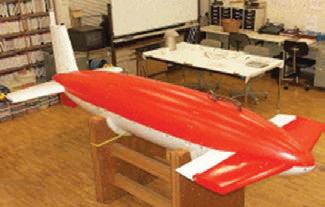
We have discussed the general overview of inspection levels and UUV platforms used in inspection operations. UUV is an important technology for underwater operations. The advancement of the technology is closely related to the triggered event for the system improvement and development.
The Underwater, Control & Robotic Group (UCRG), Universiti Sains Malaysia (USM), is exploring the realisation of the underwater inspection system using both AUV and ROV platforms.
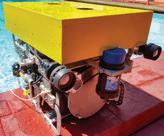
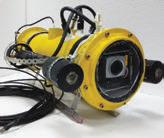
First, an AUV will visually inspect the entire surface of the underwater structure to find the location of potential damage for more detailed inspection. Then an ROV will be sent to the selected location for cleaning and detailed inspection. Figure 16 shows a box-shaped AUV and Figure 17 shows an ROV developed by UCRG. These have been developed for underwater pole and submerged ship hull inspection application.
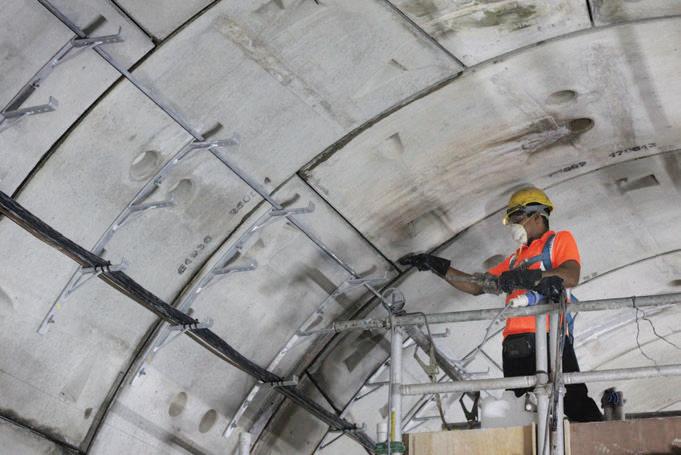
[1] "Underwater Protective Coatings." Chemco. N.p., n.d. Web. 10 July 2017. <http://www. chemcosc.com.au/underwater-protective-coatings/>.
[2] "The Boat." The Boat. N.p., n.d. Web. 10 July 2017. <https://seabrooksailing.wordpress. com/>.
[3] MailOnline, Niall Firth for. "Titanic's sunken sister ship to become underwater museum." Daily Mail Online. Associated Newspapers, 30 Oct. 2008. Web. 10 July 2017. <http:// www.dailymail.co.uk/news/article-1081561/Titanics-sunken-sister-ship-underwatermuseum.html>.
[4] ch2m. 2016. Waterfront facilities maintenance management system, inspection guidelines manual. New York City Economic Development Corporation.
[5] Kelly, S. W. 1999. Underwater inspection criteria. Naval Facilities Engineering Service Center.
[6] Anna F., Chief G., and Fugro S. L. 2015. An overview of seabed survey (High-resolution geophysical site surveys). Hydrofest.
[7] Terence M. B., Thormas J. C., Michael J. G., John E.O., Daniel G. S., and Katherine C. H. 2010. “Underwater Bridge Inspection”. Federal highway Administration, U.S. Department of Transportation.
[8] Akizono, J.I., Tanaka, T., Nakagawa, K., Tsuji, T. and Iwasaki, M., 1997, October. Seabottom roughness measurement by aquatic walking robot. In OCEANS'97. MTS/ IEEE Conference Proceedings (Vol. 2, pp. 1395-1398). IEEE.
[9] A., & Mahesh, V. (2016, February 26). The next generation of robots will look like animals. Retrieved July 11, 2017, from http://childfriendlynews.com/the-nextgeneration-of-robots-will-look-like-animals/.
[10] DeVault, J.E., 2000. Robotic system for underwater inspection of bridge piers. Instrumentation & Measurement Magazine, IEEE, 3(3), pp.32-37.
[11] Koji, K., 1999. Underwater inspection robot—AIRIS 21®. Nuclear engineering and design, 188(3), pp.367-371.
[12] Limited, K. (n.d.). Seaeye - Panther. Retrieved July 11, 2017, from http://www.seaeye. com/panther.html.
[13] Lonny Lippsett. Originally published online October 4, 2006. "Engineers Honored for Pioneering Undersea Robot." Oceanus Magazine. WHOI, 04 Oct. 2006. Web. 10 July 2017. <http://www.whoi.edu/oceanus/feature/engineers-honored-for-pioneeringundersea-robot>.
[14] Hybrid AUV inspection, monitoring, and intervention of seafloor and sub-seafloor pipelines. (n.d.). Retrieved July 11, 2017, from http://www.whoi.edu/page.do?pid=1194 16&tid=3622&cid=163610.
[15] Teixeira, F.C., Aguiar, A.P. and Pascoal, A., 2010. Nonlinear adaptive control of an underwater towed vehicle. Ocean Engineering, 37(13), pp.1193-1220.
[16] Choi, J.K., Sakai, H. and Tanaka, T., 2005, April. Autonomous towed vehicle for underwater inspection in a port area. In Robotics and Automation, 2005. ICRA 2005. Proceedings of the 2005 IEEE International Conference on (pp. 188-193). IEEE.
Ir. Prof. Dr Mohd Rizal Arshad, graduated from the University of Liverpool, in 1994 with a B.Eng. in the field of Medical Electronics and Instrumentation. He received his MSc. in Electronic Control Engineering from the University of Salford, in 1995 and PhD in Electronic Engineering, with specialization in robotic vision system in 1996. He is a Chartered Engineer (C.Eng)and a Fellow of IMarEST. His research projects are mainly in the area of underwater robotic platform development, new sensing device and mechanisms, and intelligent control algorithms.
Song Yoong Siang, received the B.E. degree in mechatronic engineering from Universiti Sains Malaysia (USM), Malaysia, in 2013. He is currently a PhD student in School of Electrical and Electronic Engineering, USM. His current research interests include robust control algorithms and unmanned underwater vehicle platform development.
Title: 2-Day Course on The Fundamental Knowledge for Project Managers 18 -19 December 2017
Organised by : Project Management Technical Division
Time : 9.00 a.m. - 5.30 p.m.
CPD/PDP : 14.5
Kindly note that the scheduled event is subject to change. Please visit the IEM website at www.myiem.org.my for more information on the upcoming events.
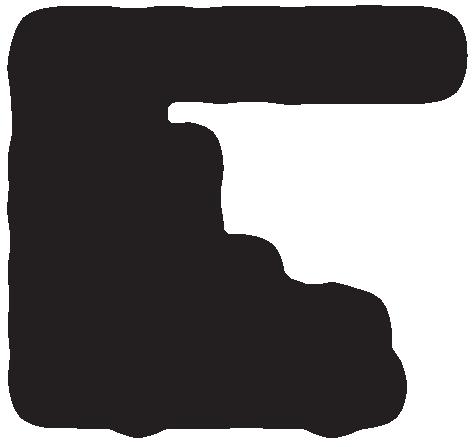



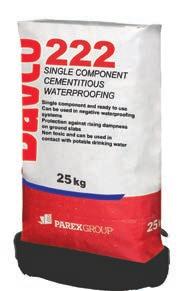


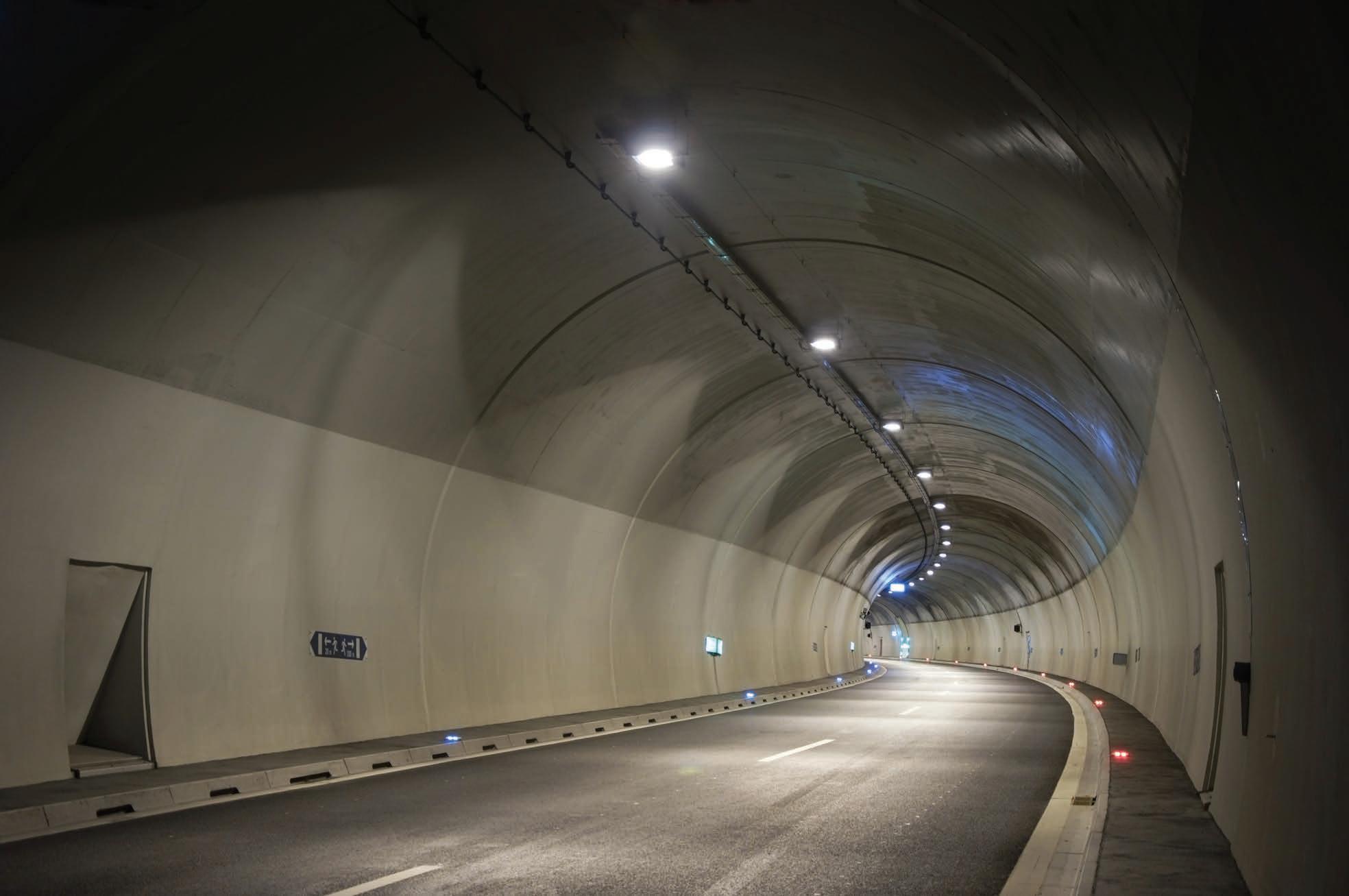

Lby Ir. Shum Keng Yan

et us revisit the ABCs from the last 2 articles. In order that a desired Behaviour is reinforced, there are 3 factors to consider in the Consequences
1. Significance: Positive (+) or Negative (-)
If a person perceives an act to be positive feeling, the person will repeat it. The reverse is true. Consideration need to be made on the magnitude of the perception.
2. Timing: Immediate (+) / Later (-)

If the impact is Negative and Immediate, the person will not be inclined to carry out the act.
3. Consistency: Certain (+) / Maybe (-)
If the impact is Negative, Immediate and Certain, the person will definitely NOT carry out the act.
On the strongest end of the line are behaviours which are Positive: Immediate: Certain (+++) and Negative: Immediate: Certain (-++). Behaviours with such traits will be easily reinforced.
On the weakest end are behaviours which are Positive: Later: Maybe (+ - -) or Negative: Later: Maybe (- - -) types. There is really no drive to reinforce behaviours at this end. (+++) and (-++) (+--) and (---) STRONG weak
Thus “Timing” and “Consistency” are essential to drive behavioural change. We will explore the above in our previous Urgent Repair case study in the next article.
Have you ever been told that you have done something wrong months later? Share with me at: pub@iem.org.my.
If you see something, say something and do something. Just something I observed.
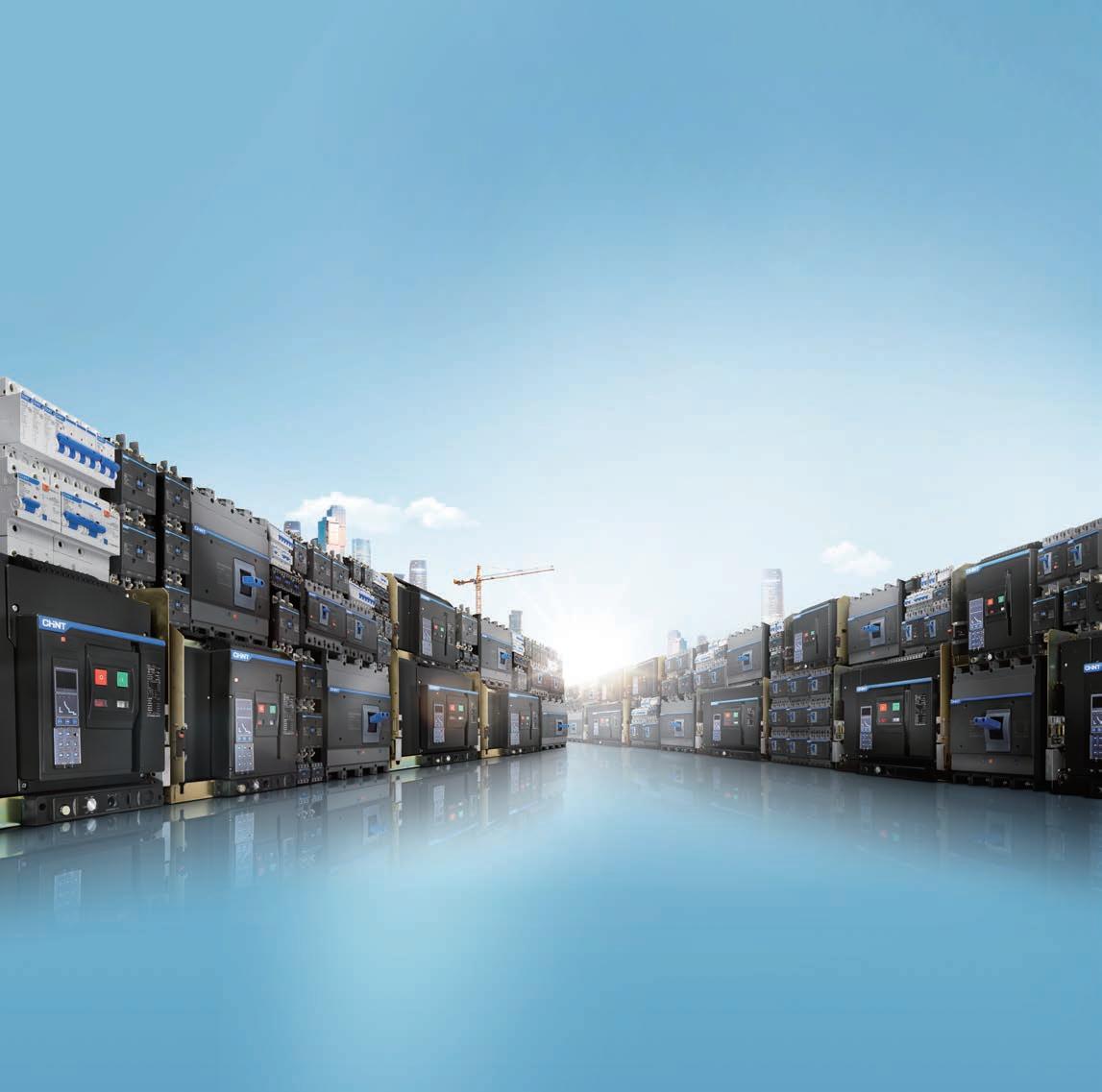
Title: 1-Day Workshop on Competency Talent Management 11 January 2018
Organised by : Women Engineers Section Time : 9.00 a.m. - 5.30 p.m. CPD/PDP : 7
Kindly note that the scheduled event is subject to change. Please visit the IEM website at www.myiem.org.my for more information on the upcoming events.
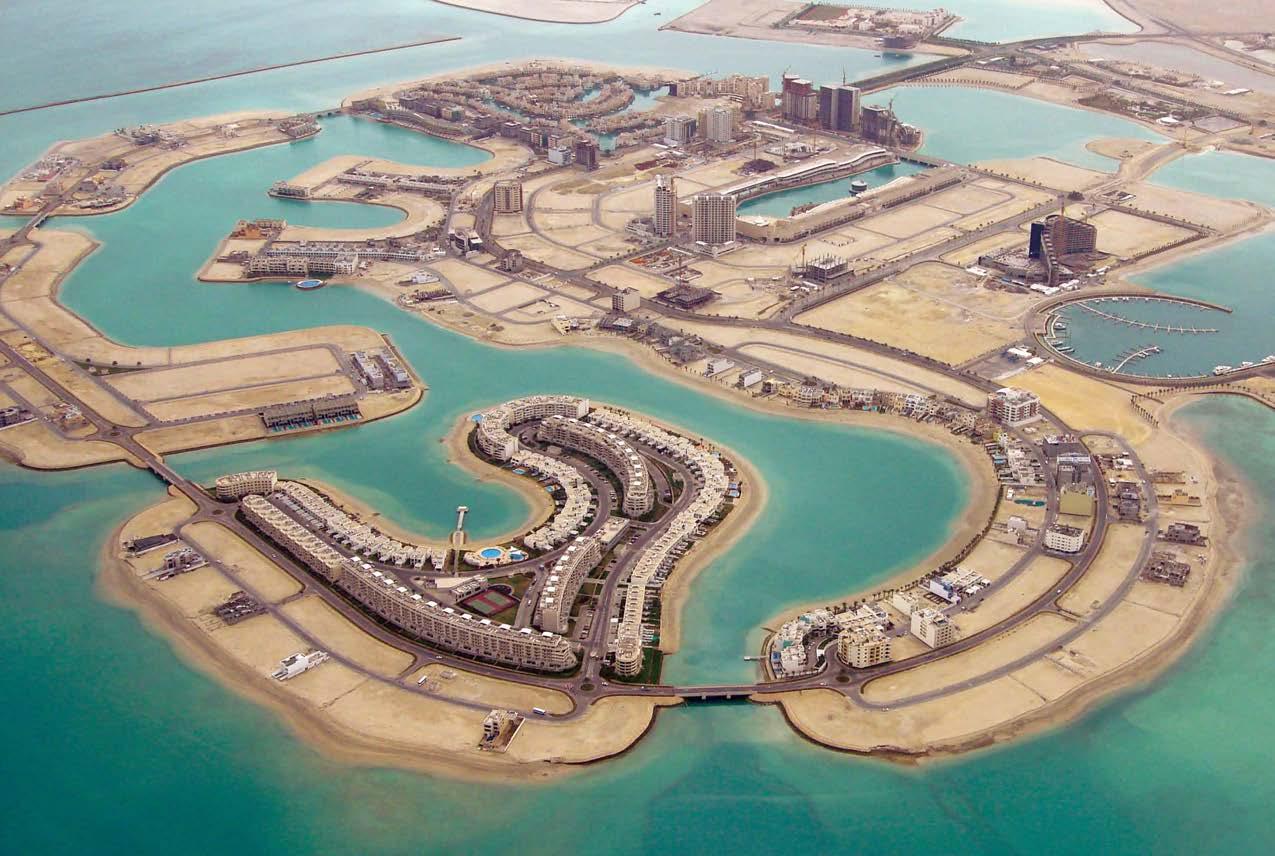

reported by

IEM organised a technical talk on Outstanding Students’ Works in Marine & Offshore Engineering in collaboration with Malaysia Joint Branch RINA-IMarEST.
The principal speakers were Captain Ir. Franklin J. Joseph from RMN and Ir. Khor Yee Shin (Albert). There were 14 participants from IEM and Malaysia Joint Branch RINA-IMarEST at the talk on 9 August, 2017, held in TUS and C&S Lecture Room, Wisma IEM.

The objective was to share information on winning Thesis Presentations by undergraduates in marine-related courses from Universiti Teknologi Malaysia, Universiti Pertahanan Nasional Malaysia and Universiti Kuala Lumpur.

Cik Nur Masitoh Islamiah binti Mustaffa Kamal from Universiti Teknologi Malaysia (UTM) won for her project titled Construction & Testing of Slam Shock Absorber for Small High-Speed Crafts. Based on tests carried out on scale-models of 25m and 7m boats, the shock absorber would significantly reduce the shock for personnel on board such crafts. Cik Nur planned to further pursue the project by testing the models at Towing Test Facilities with wave-generating facilities.
Cik Nur Nelizza binti Abdul Manaf’s project was Emergency Surface Marker Buoy Prototype for Adrift Divers. The certified diver from Universiti Pertahanan Nasional Malaysia (UPNM), found that existing equipment in

did
function satisfactorily, especially when
were swift.
marker buoys were also too cumbersome to operate, especially for divers facing difficulties. Using components available in the market, her project prototype proved to be more functional. The most significant improvement was the use of carbon dioxide canisters to inflate the buoy instead of the diver’s mouth-piece and the use of conical-shaped buoys instead of cylindrical buoys.

Cik Nabila Attiqa binti Abdul Ghani was the winner from Universiti Kuala Lumpur – Malaysian Institute of Marine Engineering Technology (UniKL MIMET). Her project, Mechanical Testing for 1G Robotic Welding of GMAW Process, was on the testing of mild steel plates welded by robots. The currents were varied from 110 amperes to 170 amperes with increments of 10 amps between each specimen. It was found that the weldment with 110 amps was significantly better in terms of hardness and higher tensile strength than the base plates.
The talk offered an insight into research activities carried by universities on marine-related studies. It is hoped that such activities will continue to be carried out and that all universities with marine-related courses will be invited to participate.

reported by

On 14 January, 2011, the Institution of Civil Engineers (ICE) held the first Asia Pacific Conference on Infrastructure Development in a Tropical Environment in Petaling Jaya, with over 200 participants. Managed by IEM Training Centre Sdn. Bhd., its success gave ICE the confidence to host a joint conference with IEM this year.
Thus, on 26 October, 2017, two events were held: ICEIEM Joint Conference on “Future Engineers - Inspiring the Workforce of Tomorrow” and the ICE Presidential lecturecum-dinner.
This time, IEM Academy Sdn. Bhd. managed both events and was strongly supported by the construction industry and ICE Student Chapters from five universities in Kuala Lumpur. There were 220 participants for the conference and more than 460 people attended the conference dinner.
The conference provided a comprehensive look at the skills, technologies, projects and organisations which will shape the global engineering profession and workforce of tomorrow and which will guide and inspire our fledgling
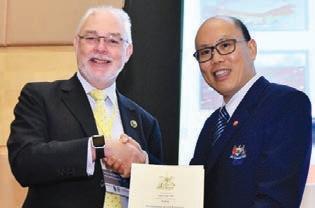
workforce, connecting a diverse group of talent with the career possibilities and opportunities they need to become industry leaders. The partnership between ICE and IEM will
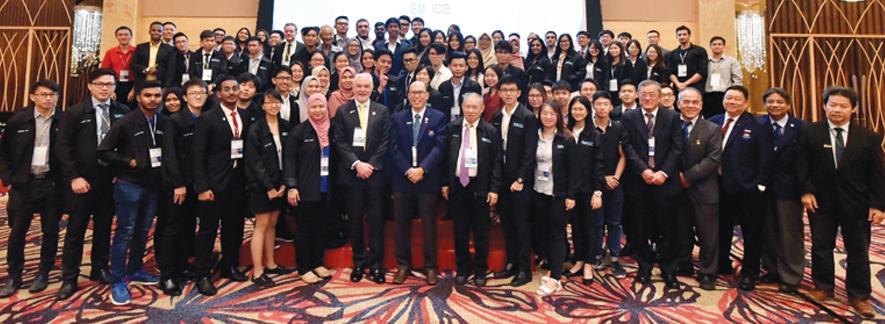
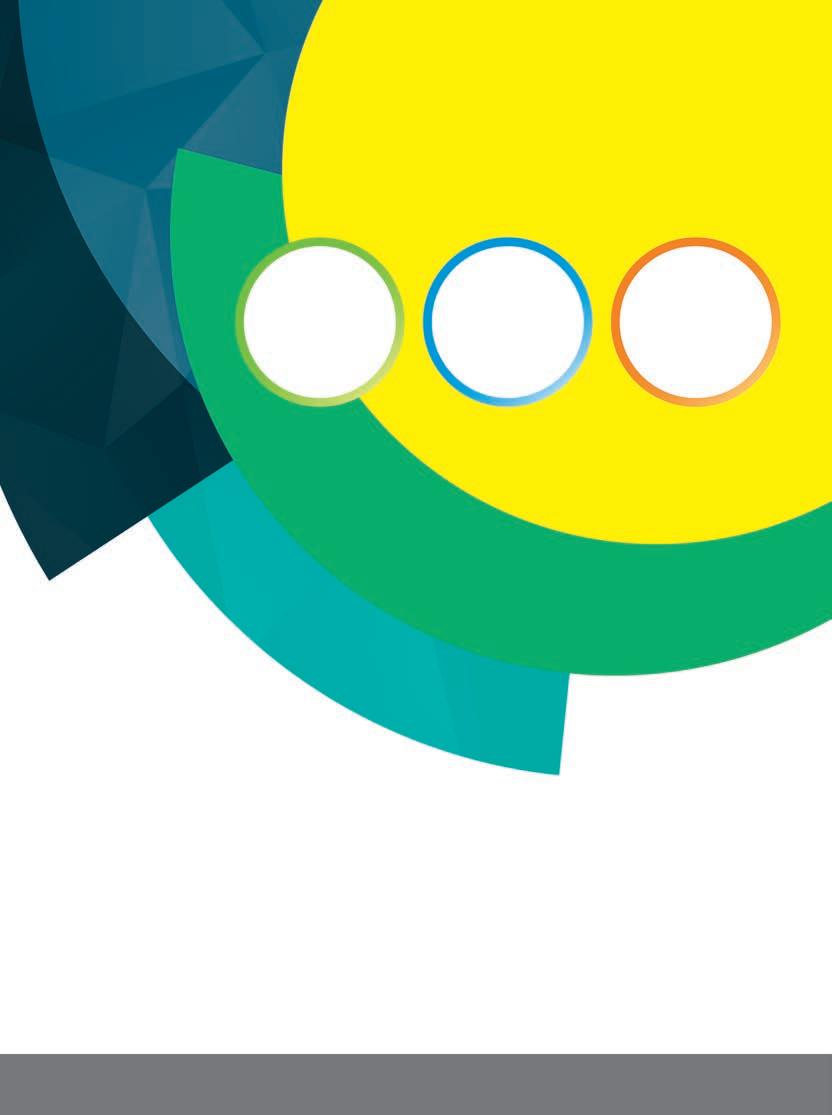
offer guidance, support and industry foresight for budding engineers. ICE and IEM have had an Agreement of Cooperation (AOC) since 2000. ICE is a global Engineering Benchmark for Civil Engineers and IEM is a leading regional MultiEngineering Institution that provides secretariat services for many regional engineering organisations.
ICE has had a Country Representative from Malaysia since the 1960s and current CR is Ir. Dr Tan Yean Guan. There are also five ICE Student Chapters at the following universities: UNITEN, UNMC, UTAR, UM and UCSI.
The conference was the first of its kind, in which ICE and IEM joined forces to set new directions for future engineers in dealing with the digital world. There were eight prominent speakers: ICE President Professor Tim Broyd, Mark Enzer (Chief Technical Officer, Mott MacDonald, representing the UK’s major infrastructure client organisations), Simon Vaux (Director Digital Engineering, Transport for NSW), Er. Poh Seng Tiok (Director, Planning & Design, Mass Rapid Transit Corporation, Malaysia), Ir. Dr Tan Chee Fai (Practising Mechanical and Manufacturing Consultant), Brian Higgins JP (Business Development Manager, EMEA UK), Dr Khor Cheng Seong (Associate Professor, Xiamen University Malaysia, specialising in mathematical modelling, analytics and optimisation) and Ir. Dr Leong Wai Yie (CEO, SmartBrain Sdn. Bhd., specialising in big data analysis, medical signal processing and telecommunications).

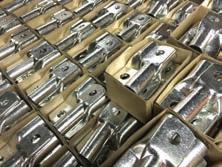
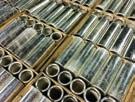

The conference covered ICE-Led Project 13, The Future of Industry: Developing a Strategy for Smart Infrastructure Transformation, Transport for NSW Digital Engineering Strategy, Advances in Engineering Technology and Application in KVMRT Line 2, Emerging Technology and The Need for “Forever Learning”, Security Skills and the Need to Build Resilience to Cyber Threats, Incorporating the Systems Approach in Engineering Education Using Modelling and Simulation and Developing the Pie for Industry 4.0.
IEM President Ir. Dr Tan Yean Chin officiated at the opening of the conference and delivered a welcome address. Prof. Broyd also conferred the ICE Fellow (FICE) on Ir. Dr Tan for his contributions and achievements in Civil Engineering.
In conjunction with the conference, a dinner was held in honour of Prof. Tim Broyd who delivered his Presidential Lecture and conferred FICE on four people, including Dato’ Sani Abdullah and Er. Poh Seng Tiok. He also presented mementos and certificates of appreciation to the main sponsors, Past ICE Country Representatives for Malaysia, Ir. Dr Ting Wen Hui and Ir. Dr Ooi Teik Aun and UTAR President Dato’ Prof. Ir. Chuah Hean Teik, UNITEN Vice Chancellor Dato’ Prof. Ir. Dr Kamal Nasharuddin as well as advisors of the ICE Student Chapters.
Congratulations to Vice President, Ir. Prof. Dr Norlida binti Buniyamin for being awarded Pingat Perkhidmatan Cemerlang (PPC), by the Ministry of Higher Education (MoHE) Year 2016 on 30 October 2017.
Various cable lugs and links are imported into Malaysia but these connectors have been found to be inferior as they differ in dimensions and material specifications.
To prevent widespread usage of inferior connectors, Malaysian Standards have been developed to standardize the dimensions of connectors and crimping dies.
Today there are five publications related to connectors and these standards can now enable owners, engineers and end-users to
Get in touch with us to learn about the standards, or visit www.conwayterminals.com/ms
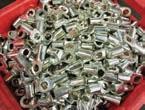


reported by ASEAN ENGINEERS REGISTER (AER)

At the invitation of Pertubuhan Ukur, Jurutera dan Akitek (PUJA) Engineering Division, Brunei Darussalam, Ir. Ellias bin Saidin, the Head Commissioner of ASEAN Engineers Register (AER), flew to Brunei on 20 May, 2017, to give a talk on “The Challenges on the Mobility of Engineers in ASEAN and Beyond”.
The talk was one of three held during the morning session at the Ministry of Development Training Centre in Bandar Seri Begawan; the other two talks were on “Challenges in Construction of the Ulu Tutong Dam” and “Sustainable Construction: Use of Bamboo”.
Officiating at the opening in the morning was Dr Dayang Nor Imtihan binti Hj. Abdul Razak, Permanent Secretary (Technical and Professional), Ministry of Development Brunei. Over 60 people, including architects and surveyors as well as PUJA members comprising engineers, architects and surveyors, attended.
In his presentation, Ir. Ellias provided some background on the formation of ASEAN Federation of Engineering Organisations (AFEO) and the AER. He also shared information on the potential for business among ASEAN member nations which have a combined population of 600 million people, the 3rd largest population grouping in the world, after China and India.
Then he spoke on current international accords and agreements on the accreditation and competency, describing some of the commonality and differences between the requirements and prerequisites of the groupings.
In the standardisation of competency, which will lead to the mobility of engineers across international borders, the major organisations leading the way are:
1. The International Engineering Alliance (IEA)
2. The European Federation of National Engineering Associations (FEANI).
Within ASEAN, the engineering regulatory bodies of member countries
are not common in the membership of the accords described above. This mobility within the context of the “Asean Mutual Recognition Arrangement On Engineering Services”, signed in Kuala Lumpur on 9 December, 2005, may pose some challenges due to the accreditation within the accords issue.
At a meeting in Manila on 23 November, 1998, the AFEO Governing Board agreed to the formation of the ASEAN Engineers Register (AER) with the AER Secretariat set up on 3 September, 2002. Its objectives were to promote the recognition of ASEAN engineering team, to safeguard and promote the professional interest of engineers, engineering technologists and technicians, to promote cultural and professional links among members of the engineering profession within ASEAN, to enhance the wealth of ASEAN countries, to provide sufficient data regarding individual engineers, engineering technologists and technicians for the benefit of prospective employers and to encourage a continuous updating of the quality of engineers, engineering technologists and technicians by setting, monitoring and reviewing standards.
The event started with the reception committee at the airport, followed by a sumptuous dinner at the airport mall with a group of PUJA engineers led by Dyg Alice Lim SK.
Finally, members and the committee of PUJA hosted a farewell lunch at the airport lounge restaurant, with VIP Dr Dayang Nor Imtihan in attendance.
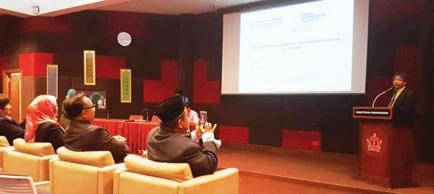
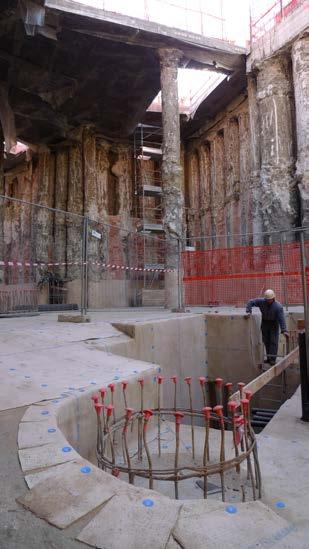
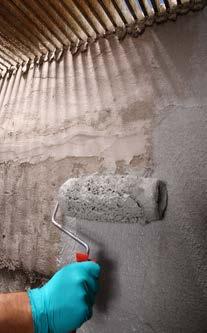
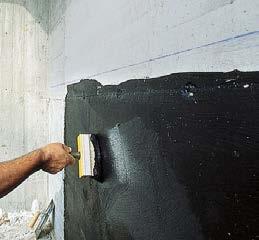
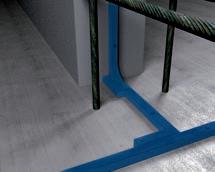
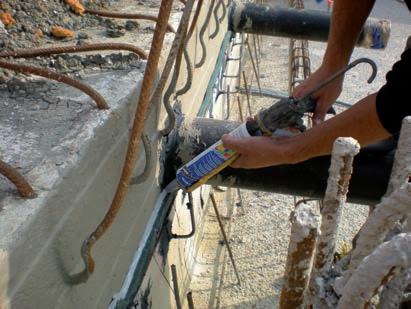
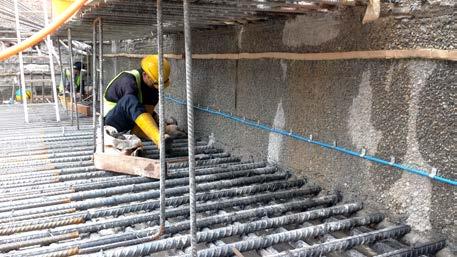
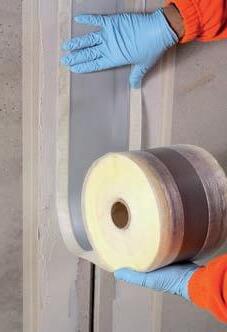
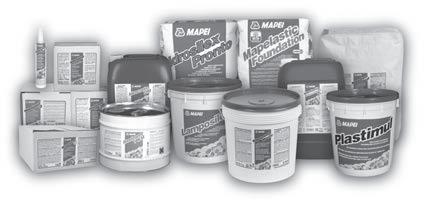














reported by

In the quest to meet deadlines, construction projects are often beset with challenges such as unreliable schedules and cost, poor quality, planning errors or inaccurate/ incomplete drawings and the lack of cooperation from the various stakeholders.
Effective communication is the key to meeting deadlines. The future of the construction industry is digital and built on a holistic approach that connects all stakeholders. Today, a sustainable framework in a project must be supported by a robust digitalisation plan such as Building Information Modelling (BIM) which can no longer be viewed just as a nice feature for glorification only.
To introduce BIM to IEM members, the Urban Engineering Development Special Interest Group (UEDSIG) and Civil & Structural Engineering Technical Division (CSETD) jointly organised a talk on 7 September, 2017. The speakers were Ir. Sharifah Azlina Raja Kamal Pasmah (Chief Operating Officer of HSS Engineering Sdn. Bhd. and Chief Executive Officer of BIM Global Ventures Sdn. Bhd.) and Puan Norimah Othman (Manager of BIM Global Ventures Sdn. Bhd).
The talk started with a definition of the BIM process in the lifecycle of a construction project, from its inception and design to the demolition or de-construction of the asset. The benefits highlighted included its role as the key driver for building sustainability and for supporting green initiatives.
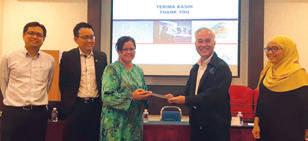
The talk also defined the levels of BIM sophistication (Levels 0 to 3), the various BIM dimensions (3D, 4D, 5D, etc.), clash detection & resolution processes and simulation capability.
Also discussed were BIM applications such as space management, asset information management, facility management and tracking asset performance throughout its lifecycle – all in the domain of a built environment. Ir. Sharifah Azlina then touched on the scepticism that came with the idea of transitioning information from AutoCAD to BIM. She pointed out that, uncertainty aside, as with any change from 2D to 3D AutoCad and from there to BIM, a user would run into some challenges along the way, but knowing the difficulties ahead would help one learn from mistakes.
In the long run, a user will be glad to have made the move. A fundamental part of BIM is the ability to check and ensure appropriate specifications are built in accordance with the contractual, code and standard requirements. It also links up reference bid and design documents to construction for verification purposes and a competitive bid can be provided if BIM is adopted as a project delivery tool.
Drawing on her experiences in Cyberjaya Hospital and Banyan Tree Condominium projects, Puan Norimah Othman discussed BIM’s curvature capability in avoiding clashes and providing constructability checks. She said the development and implementation of a robust BIM is not quite as straightforward, because it requires an understanding of the entire design and construction processes. However, more effort must be made to raise the awareness and benefits of BIM because it ensures construction budget is spent in the most efficient way. All in all, the additional effort on BIM ensures the design and construction processes will produce a fit-for-purpose project, meeting the client’s intended objectives.
Judging from the enthusiastic questions raised from the floor at the end of the presentation, the talk was a huge success.






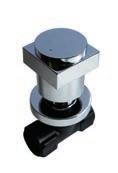
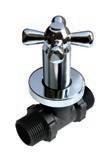
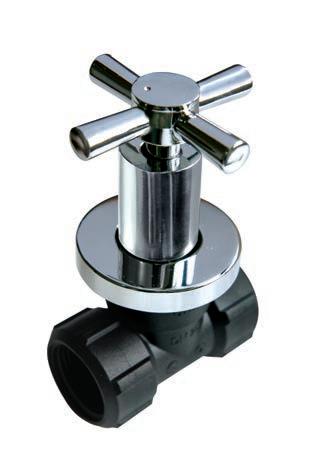










reported by

Ahigh-speed rail link between Kuala Lumpur and Singapore was first proposed in the late 1990s but, due to high costs, the proposal was shelved. But the plan was not forgotten and recently, it was announced that the KLSingapore High Speed Rail (HSR) project would be revived..
At a meeting in Singapore on 19 February, 2013, between the Republic’s Prime Minister Lee Hsien Loong and Malaysia's Prime Minister Najib Razak, the two countries officially agreed to build a high-speed rail link between KL and Singapore by 2020.
It would be a top strategic infrastructure project for which planning began in 2010 with completion scheduled for 2026; it would entail a rail network length of 350km and trains would be capable of speeds of up to 320km per hour.
The need to educate ourselves on the expansive field of Rail Engineering became very apparent with the evolution that the HSR project will bring to land transportation.
In line with this, the Engineering Education Technical Division of IEM (E2TD), in collaboration with the Institution of Mechanical Engineers Malaysia Branch (IMechE) and Engineers Australia Malaysia Chapter (EAMC), organised a CPD talk series titled “High Speed Railway – Educate Ourselves on Rail Engineering” on 5 October, 2017, at Wisma IEM. The 88 participants came from various backgrounds but they had one common objective – to get an insight into rail engineering and its common practices.
The talk was chaired by Professor Dr Ir. Vinesh Thiruchelvam, the advisor to E2TD. The first two speakers, Ms. Winnie Wong and Mr. Stephane Mortier, were from MyHSR Corp. Sdn. Bhd. which had been entrusted with delivering the KL-Singapore HSR project through to completion. They were very detailed in their introduction of the project background, the structure of the project, the chronology of events that led to signing of the bilateral agreement in 2016 and the progress of the project so far. The discussions on the challenges and work opportunities attracted so much interest from the participants that the emcee had a tough time drawing the session to a close for the lunch break.
In the afternoon, the seminar continued with Mr. Thomas Baake (E-MAS Sdn. Bhd.) and Ir. Dr Alvin Yap (Asia Pacific University) who spoke on the Railway Maintenance System of the KLIA Express (ERL Maintenance). The session by Mr. Baake was very technical and touched on details of rail maintenance that would only be known to rail engineers in the company. Ir. Dr Alvin spoke about a project to harvest energy from the wind induced by a moving train. This is in line with efforts by the Malaysian government to enhance the capability for innovation in the development of green technology and to promote sustainability in business practices under the National Green Technology Policy. The project is a collaboration between Asia Pacific University (APU) and E-MAS Sdn. Bhd.
The general public may have some knowledge of the MRT system and even travelled aboard the train coaches. Ir. Leo Mak Sek Man (Director of Systems, MMC-Gamuda) talked about the similarities and differences between the MRT and high speed rail systems. He discussed planning, design, technical challenges, infrastructure requirements, testing, commissioning and passenger service operations. All these gave participants the opportunity to grasp the full range of railway technologies, from monorail to high speed rail.
For the final session, Mr. Thomas Dorfner (VP Asia Pacific, Getzner) gave a technical brief on vibration isolation for railway systems using technologically advanced elastomers. The importance of elasticity in railway superstructures may not have been immediately apparent to those without rail background but as Mr. Dorfner discussed the various case studies in depth, it was clear that without elasticity, it would be impossible to guarantee the safety of a locomotive travelling at any speed, what more at speeds exceeding 350km per hour.
The seminar was planned as an interactive, Q&A session to allow participants to seek clarification or information directly from the speakers. The session ended at 4.30 p.m. but many participants continued to have private discussions with the speakers during tea time. It was very evident that the objective of the seminar had been achieved.

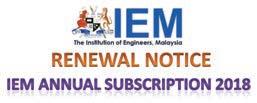
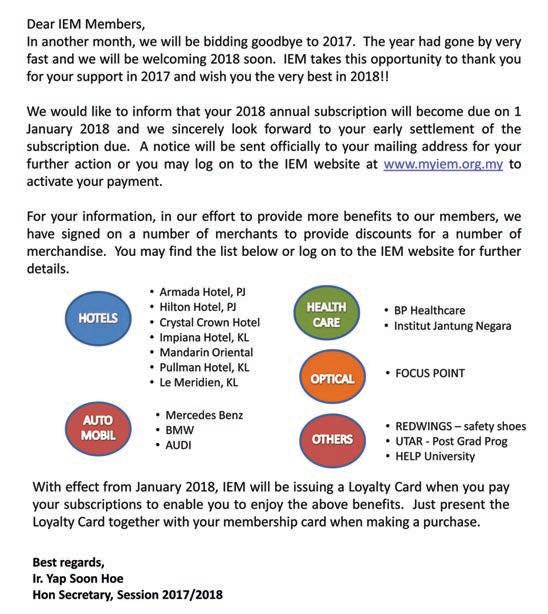

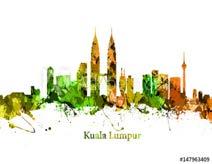

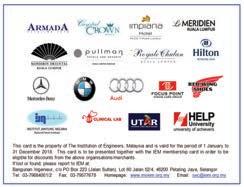
Publisher: The Institution of
Explore our full set of Professional and Integrated PUBLISHING MANAGEMENT SERVICES:
» Project Management
» Creative Management
» Ad Space Management
» Mailing Management
» Print Management
• Annual Reports
• Booklets • Brochures
• Buntings • Business Cards
• CD / DVD Replications
• Calendars • Cards & Invitations
• Certificates • Custom Printings
• Envelopes • Folders
• NCR Bill Books • Notepads
• Leaflets • Letterheads
• Paper Bags • Posters
• Stickers • Others
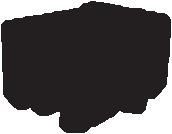

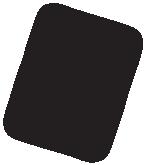
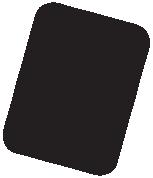
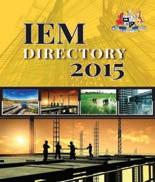
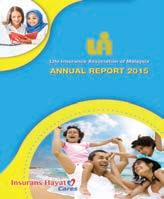
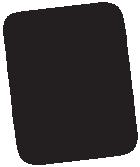
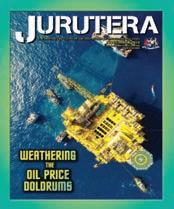
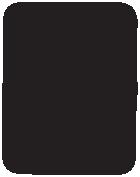
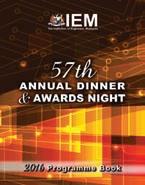
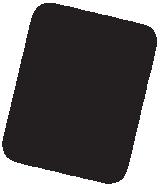
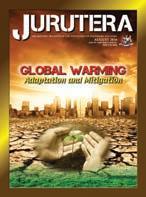
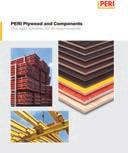






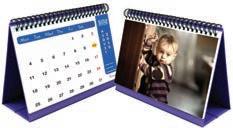

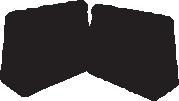
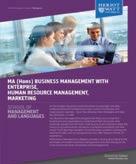

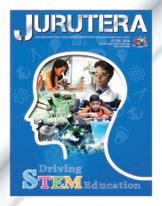
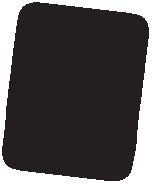














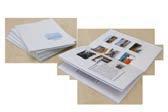
Dimension Publishing Sdn Bhd (449732-T) Level 18-01-03, PJX-HM Shah Tower, No. 16A, Persiaran Barat, 46050 Petaling Jaya, Selangor Darul Ehsan, Malaysia. Tel: +603 7493 1049 Fax: +603 7493 1047 E-mail: info@dimensionpublishing.com

Esharing his experiences with others through his photographs and writing.
ven before the break of dawn, the jetty in Sibu was as busy as a hive of bees. My wife and I joined the queue in front of the ticket counter but were sorely disappointed when told that tickets for the 5.45 ferry for Kapit was sold out; we would have to settle for the second departure at 6.15.
The previous afternoon, an officer of the ferry company had told me that, with the continued lowering of the water level upstream because of the dry spell, the 10.30 ferry this morning from Kapit to Belaga would be the last until the rains came again. As we had to get to Belaga to continue our journey from there, our original plan to stay a night in Kapit could not be followed, so a departure that’s half an hour earlier would have given me a little more time to take in the sights of Kapit.
on the river banks every now and then. There were also individual houses and heaps of timber logs waiting to be shipped away, a clear indication of the once rampant logging activities in Sarawak. The ferry made a number of stops to unload passengers and pick up new ones, as well as to deliver goods. Exactly 3 hours later, the ferry finally docked at the jetty in Kapit, 126km upstream of Sibu.
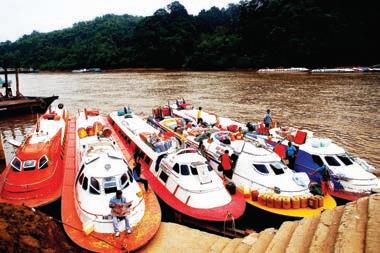
Sg. Rejang is the longest river in Malaysia. Originating from the mountains at the Kalimantan border, it flows 700km across Sarawak to the South China Sea at Sibu. There are many settlements on both sides of the river and the fuselage-like ferries are the only means of transport for most of the people living there.
Our ferry departed on time. The river was calm. Longhouses appeared
After buying our tickets for Belaga and settling my wife and our luggage aboard the waiting ferry, I made a dash for the main attraction in Kapit – Fort Sylvia. Luckily this all-timber building is just a short walking distance from the jetty.
Built by Charles Brooke, the second White Rajah of Sarawak in 1880, the fort is rather small and unimpressive
by today’s standards. Yet it witnessed an important chapter in the history of Sarawak. A memorial in front of the building records that on 16 November, 1924, a ceremony was held in front of the fort in which the headmen of the Kayan, Kenyah, Kajang and Sea Dayak tribes living along several rivers, swore that they would henceforth lay down their blowpipes and knives and stop the practice of head-hunting, or they would die like the pig which was slaughtered as part of the ceremony. This was witnessed by the White Rajah, senior army officers of the Dutch East Indies and other high government officials.
The ferry departed at 10.30 as scheduled. With many stops to make and rapids along the way, it took almost 6 hours to cover the distance of 155km to Belaga. This small town is the furthest upriver along Sg. Rejang that one can reach by regular ferry service.
I first visited Belaga in September 2004 as a participant in IEM’s technical visit to Bakun Hydroelectric Dam, then under construction some 60km further upstream on Sg. Balui, one of Sg. Rejang’s tributaries.
From Belaga, we would be proceeding to Bintulu by road to continue our exploration of Sarawak.
Yes! I would like to be a subscriber of The Institution of Engineers, Malaysia’s publications
Name: _________________________________________________________________________________________________________
Mailing Address: _________________________________________________________________________________________________
Country: ________________________
Company/Institution: ______________________________________________________________________________________________
Title: ____________________________________________________________________________________________________
Telephone No: _________________________ Fax: _________________________ Email: _________________________________
Please commence my subscription from: _________________________(month/year) Signature: _______________________________
To start your subscription of IEM’s publications, complete this form and mail it back to the address below. For faster processing, fax it to: +603 7493 1047. Thank you.
What is your primary job title?
Corporate Management (including chairman, president, proprietor, partner, director, vice president, general manager, division manager, import/export manager, other corporate title)
Management (including project/contract/equipment/service/transport district manager, clerk of works, other technical or operating manager)
Engineering/Design (including chief engineer, chief designer, civil/ highway/mechanical/planning engineer, other engineering/design title)
Buying/Purchasing (including chief buyer, buyer, purchasing officer, other buying/purchasing title)
Titles allied to the field (architect, consultant, surveyor, research and development professor, lecturer, supervisor, superintendent, inspector or other allied title)
Others (please specify) ____________________________
What type of organisation do you work in? (Tick one box only)
Contractor
Sub-contractor specialist
Design and build contractor
Consulting engineering/architectural/quantity surveying practice
Mining/quarrying/aggregate production company
Petroleum producer
International/national authorities
National/regional/local government
Public utilities (electricity, gas, water, deck and harbour, other)
Manufacturer
Distributor/importer/agent
Construction department of large industrial/Commercial concern
Association/education establishment/research
Construction equipment hire/rental company
Project/construction management consultancy
Others (please specify) _______________________________
What are the main activities of your organisation? (Tick all that apply)
Constructions of:
Roads/bridges
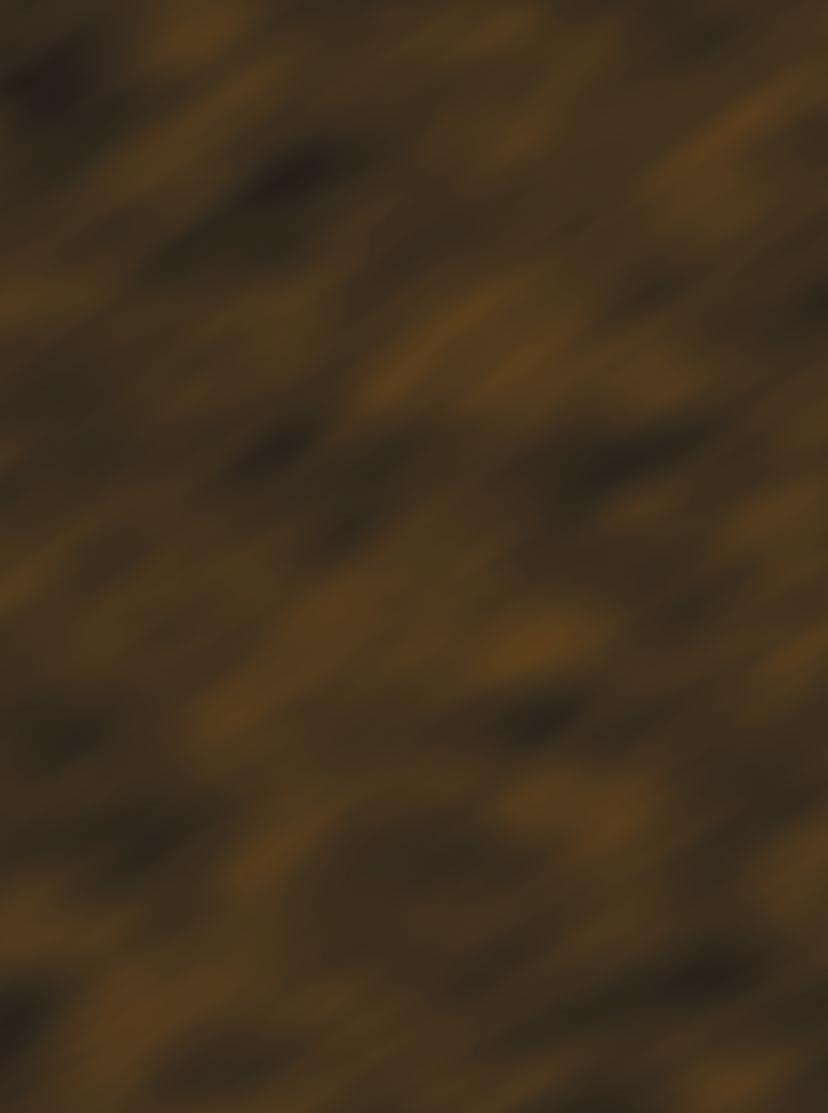
Manufacturer of:
Construction equipment
Dams/reservoirs/irrigation Cement
Harbours/offshore structures Other construction materials
Foundations/tunnels
Distribution Pipelines/refineries Construction equipment
Structures/steel work
Construction materials
Building (commercial, industrial) Hire/rental of construction equipment
Housing Design
Construction management Earth-moving/open cast mining
Deep mining Aggregate production
Others (Please specify) _________________________________________
Rate (Please tick)
RM381.60 - 12 issues of JURUTERA
RM89.04 - 2 issues IEM Journal (Half-yearly)
* Please note that the above prices are inclusive of 6% GST
Terms and Conditions:
1) The subscription is to be prepaid.
2) Please make cheque payable to Dimension Publishing Sdn. Bhd.
3) Subscriptions are not refundable.
4) Magazine/s will be sent to the mailing address given.
5) Students are entitled for a 20% discount from the above subscription rate.
6) Students must submit a photocopy of the student identification card together with the payment.
7) The above rate is inclusive of delivery charges and applicable in Malaysia only.
8) Additional delivery charges will apply to overseas subscribers.
For subscription enquiries, please contact +603-7493 1049 or email to info@dimensionpublishing.com
Kepada Semua Ahli,
Tarikh: 7 November 2017
Berikut adalah senarai calon yang layak untuk menduduki Temuduga Profesional bagi tahun 2017.
Mengikut Undang-Undang Kecil IEM, Seksyen 3.8, nama-nama seperti tersenarai berikut diterbitkan sebagai calon-calon yang layak untuk menjadi Ahli Institusi, dengan syarat bahawa mereka lulus Temuduga Profesional tahun 2017.
Sekiranya terdapat Ahli Korporat yang mempunyai bantahan terhadap mana-mana calon yang didapati tidak sesuai untuk menduduki Temuduga Profesional, surat bantahan boleh dikemukakan kepada Setiausaha Kehormat, IEM. Surat bantahan hendaklah dikemukakan sebulan dari tarikh penerbitan dikeluarkan.
Ir. Yap Soon Hoe Setiausaha Kehormat, IEM
PERMOHONAN BARU
Nama Kelayakan
KEJURUTERAAN AWAM
AMIR ASROL BIN AHMAD BANGI BE HONS (UTHM) (CIVIL, 2006)
ASWARD INDRA FIRHAD BIN
ABDUL AZIZ BE HONS (UTM) (CIVIL, 2007)
AZHAR KAMAL BIN ZAHIR BE HONS (UiTM) (CIVIL, 2007)
HASRUL BIN IBRAHIM BE HONS (UTM) (CIVIL, 2010) ME (UTM) (CIVIL-GEOTECHNICS, 2014)
HELMI AIZUDIN BIN ABDULLAH BE HONS (UPM) (CIVIL, 2006)
KALAM BIN MOHD NOR BE HONS (UTHM) (CIVIL, 2005)
KHAIRIL HAFIZ BIN YAHYA BE HONS (UiTM) (CIVIL, 2006)
KHAIRUL AMIR BIN ISAHAK BE HONS (AKITA) (CIVIL, 2001) ME (AKITA) (CIVIL & ENVIRONMENTAL, 2004)
MOHAMAD SOBRI BIN MD DESA BE HONS (UPM) (CIVIL, 2000)
MOHD AL AZHAR BIN ALI BE HONS (UiTM) (CIVIL, 2008)
MOHD FARIZ BIN MANSORUDIN BE HONS (UiTM) (CIVIL, 2006)
MOHD FIRDAUS BIN AB AZIZ BE HONS (UTHM) (CONSTRUCTION, 2006)
MUNIRAH BINTI MOHMAD BE HONS (UTM) (CIVIL, 2010) ME (UTM) (CIVIL-STRUCTURAL, 2012)
NIK MAT B. UDIN BE HONS (UTM) (CIVIL, 2006)
NIK NAZLINA BINTI NIK MAT ROMLI BE HONS (UTM) (CIVIL, 2000)
NOOR AINI BINTI ABDUL KADIR BE HONS (UiTM) (CIVIL, 2011)
NOR FAZLINA BINTI ISMAIL BE HONS (UTHM) (CIVIL, 2007)
RAJA ALIAS BIN RAJA AWANG BE HONS (UTM) (CIVIL, 2008)
RAZALI BIN MOHD SHAILI BE HONS (USM) (CIVIL, 2006)
ROSNAN BIN HUSSIN BE HONS (UTM) (CIVIL, 1994)
SAFFUAN B BOHARI @ BAHARI BE HONS (UTM) (CIVIL, 2013)
SERIBAIYAH BINTI ARDANI BSc (SALFORD) (CIVIL, 1987)
WARDATUN AHMAR BINTI ABDUL MANAN BE HONS (UTM) (CIVIL, 2005)
DULIN KANG BE HONS (PLYMOUTH) (STRUCTURAL, 2002)
KEJURUTERAAN BIO MEDIKAL
AMIRAH BINTI ABD RAHMAN BE HONS (MULTIMEDIA) (ELECTRONICS, 2007)
KEJURUTERAAN ELEKTRIKAL
AEZUWAN BIN AZIZ BE HONS (UiTM) (ELECTRICAL, 2006)
AMALINA BINTI TAIB BE HONS (UiTM) (ELECTRICAL, 2003)
JAHARIAH BTE SAMPE BE HONS (UKM) (ELECTICAL, ELECTRONIC & SYSTEM, 1996)
KAMARUZAMAN BIN MD NASIR BE HONS (UiTM) (ELECTRICAL, 2008)
KHAIRUL ANUAR BIN GHAFAR BE HONS (UNITEN) (ELECTRICAL POWER, 2009)
KHAIRUL ANUAR BIN GHAFAR BE HONS (UNITEN) (ELECTRICAL POWER, 2009)
MOHAMMAD TARMIZI BIN ISMAIL BE HONS (UiTM) (ELECTRICAL, 2004)
MOHD FAIZAL BIN OTHMAN BE HONS (UiTM) (ELECTRICAL, 2005)
MOHD FAKHRUL BIN ABDUL RASID BE HONS (UNITEN) (ELECTRICAL POWER, 2011)
MOHD MUZAMMIL BIN RAMAT BE HONS (UTM) (ELECTRICAL, 2008)
MUHAMAD FAIZAL BIN ABD AZIZ BE HONS (UniMAP) (ELECTRICAL SYSTEM, 2007)
MUHAMAD ZAIDI BIN MAMAT BE HONS (UTM) (ELECTRICAL, 2008)
MUHAMMAD NURHAFIZ BIN
HAIRUDDIN BE HONS (UNITEN) (ELECTRICAL POWER, 2012)
NOORAINI BINTI IBRAHIM BSc (MEMPHIS) (ELECTRICAL, 1995)
NOR AZLINA BINTI KASIM BE HONS (USM) (ELECTRICAL & ELECTRONIC, 2003)
NOR JAZAIDI BIN ALIL @ ATIL BE HONS (UTM) (ELECTRICAL, 2008)
NORAEIN BIN LIMAN BE HONS (UKM) (ELECTRICAL & ELECTRONIC, 2008)
PUA WEE SIN BE HONS (UiTM) (ELECTRICAL, 2006)
SARIZAN BIN ILIAS BE HONS (UiTM) (ELECTRICAL, 2006)
MOHD. IQBAL BIN RIDWAN BSc (KEIO) (ELECTRICAL & ELECTRONIC, 2005)
KEJURUTERAAN ELEKTRONIK
AMIRAH BINTI ABD RAHMAN BE HONS (MULTIMEDIA) (ELECTRONICS, 2007)
MOHD RUDZUAN BIN MOHD NOR BE HONS (HIROSHIMA) (ELECTRICAL & INDUSTRIAL, 1998)
NURUL AZLINA BT ABD RAHMAN BE HONS (UKM) (ELECTRICAL, ELECTRONIC & SYSTEMS, 2001)
KEJURUTERAAN MEKANIKAL
CHOOI WAI MUN BE HONS (UNITEN) (MECHANICAL, 2002)
FARDLY BIN MOHD NASIB BE HONS (UiTM) (MECHANICAL, 2007)
MOHD AFIZ BIN MOHD FADZI BE HONS (UNITEN) (MECHANICAL, 2003)
MOHD HASSAN BIN AHMAD BE HONS (UKM) (MECHANICAL & MATERIALS, 1993)
NORAKMALHIDAYAH BINTI
EMBONG BE HONS (UTP) (MECHANICAL, 2007)
TAURAN ZAIDI BIN AHMAD ZAIDI BSc (IOWA) (MECHANICAL, 1985) MSc (BUILDING SERVICES, 1997)
TOH CHIH KANG BE HONS (UNITEN) (MECHANICAL, 2008)
ZAINUDDIN BIN AWANG LONG BSc (EVANSVILLE) (MECHANICAL, 1992)
KEJURUTERAAN SUMBER MINERAL
MOHD SHAH AFFENDE BIN
KAMARUDDIN BE HONS (USM) (MINERAL RESOURCES, 2007)
PERPINDAHAN AHLI
No. Ahli Nama Kelayakan
KEJURUTERAAN AWAM
50674 CHAN KHUNG LEI BE HONS (UNISEL) (CIVIL, 2008)
41444 CHANG SHING KEONG BE HONS (UPM) (CIVIL, 2011)
66725 HASNI BIN ZAINUDIN BE HONS (UTM) (CIVIL, 2013)
56548 LAU WENG KIT BE HONS (UTHM) (CIVIL, 2008)
26625 MOHD FARIZ BIN MANSORUDIN BE HONS (UiTM) (CIVIL, 2006)
70443 MOHD IDZUAN MAULA ABD RAHMAN BE HONS (UTM) (CIVIL, 2012)
72180 MOHD KHALIL BIN OTHMAN BE HONS (UTHM) (CIVIL, 2006)
93907 MUHAMMAD NASHRIQ FARHAN BIN SUPANDI BE HONS (UTM) (CIVIL, 2007)
33188 NUR HIZARUDDIN BIN CHE AJID BE HONS (UiTM) (CIVIL, 2010)
24068 ONG TEIK JIN BE HONS (UM) (CIVIL, 2006)
47844 OOI LER XUEN BE HONS (USM) (CIVIL, 2012)
30529 PARNAM SINGH A/L MEHAR SINGH BE HONS (BIRLA INSTITUTE OF TECHNOLOGY SCIENCE) (CIVIL, 1985) MSc (BELFAST) (CIVIL, 1989)
28942 RAFIEE BIN ABDUL RAZAK BE HONS (UPM) (CIVIL, 2007)
74452 RINI ASNIDA BINTI ABDULLAH BE HONS (UTM) (CIVIL, 2001) ME (UTM) (CIVIL-GEOTECHNICAL, 2006) PhD (LEEDS) (2012)
25683 SAKINAH BINTI NOORDIN BE HONS (UKM) (CIVIL & ENVIROMENTAL, 2002) MSc (UiTM) (WATER RESOURCES, 2009)
78896 SHAHRUL NIZA BIN MOKHATAR BE HONS (UTHM) (CIVIL, 2006) ME (UTM) (CIVILSTRUCTURE, 2009) PhD (KYUSHU) (2013)
24194 SIM LEE GAIK BE HONS (UTHM) (CIVIL, 2002) ME (UTM) (CIVILENVIRONMENTAL MANAGEMENT, 2006)
32116 SOH TEK PENG BE HONS (USM) (CIVIL, 2011)
22161 SUHAILI BINTI HJ SUBOH BE HONS (UPM) (CIVIL, 2004) ME (UPM) (HIGHWAY & TRANSPORT, 2011)
70444 SYAZANA BINTI RAMLI BE HONS (UTM) (CIVIL, 2012)
78982 TAN CHAR AI BE HONS (UTP) (CIVIL, 2005)
52306 WAN MUHAMMAD FAISYAL BIN MOHD NOOR BE HONS (UiTM) (CIVIL, 2011)
57611 LIEW CHIT WAI BE HONS (UTM) (CIVIL, 2013)
51825 LIM JUIN KHYE BE HONS (UTHM) (CIVIL, 2013)
23886 PALANISAMY THANJAGOUNDAN BE HONS (UTM) (CONSTRUCTION MANAGEMENT, 2001)
KEJURUTERAAN ELEKTRIKAL
48783 AAIZUDDIN-HUSSAINI BIN NOH BE HONS (UTHM) (ELECTRICAL, 2013)
80547 AMIR ANWAR BIN SHABUDIN BE HONS (UNITEN) (ELECTRICAL POWER, 2012)
70627 FARID SHAZWAN BIN MOHD JAFFAR BE HONS (UiTM) (ELECTRICAL, 2011)
37270 IDERIS BIN HADZIR BE HONS (UTM) (ELECTRICAL, 2004)
49546 LIEW TECK POH BE HONS (UTAR) (ELECTRICAL & ELECTRONIC, 2011)
28973 LING TEIK WIN BE HONS (UTM) (ELECTRICAL-MECHATRONICS, 2006)
38598 MARCUS CHEU TECK SEN BE HONS (CANTERBURY) (ELECTRICAL & ELECTRONIC, 2008)
86187 MELVIN NISCHOL SINGARAM BE HONS (WESTERN AUSTRALIA) (ELECTRICAL, 1995)
25369 MOHD AZWAN BIN AHMAD BE HONS (UiTM) (ELECTRICAL, 2006)
78483 MOHD YUSRI BIN SARDAR ALI BE HONS (UniMAP) (ELECTRICAL SYSTEM, 2012) 58674 MOHD ZAIM BIN MOHD NAZARI BE HONS (UTM) (ELECTRICALINSTRUMENTATION & CONTROL, 2009)
70385 MUHAMMAD AZFAR BIN
MAHAMAD ROHANI BE HONS (UiTM) (ELECTRICAL, 2013)
64781 NG DIHUI BE HONS (UNITEN) (ELECTRICAL POWER, 2012)
36946 NISHAL A/L SURESHCHANDRA BE HONS (UNITEN) (ELECTRICAL, 2010)
75278 NOFRI YENITA BINTI DAHLAN BE HONS (UNITEN) (ELECTRICAL POWER, 2002) MSc (UMIST) (ELECTRICAL POWER, 2003) PhD (MANCHESTER) (2011)
47544
88768
51673
NORAZLAN BIN JAAFAR BE HONS (UTM) (ELECTRICAL, 2004)
SARZAMINOR BIN BUKAR BE HONS (UniMAP) (ELECTRICAL SYSTEM POWER, 2014)
SURIAMURTHY A/L MALAYANDY BE HONS (UNITEN) (ELECTRICAL & ELECTRONIC, 2008)
54222 TAN KOK HENG BE HONS (UPM) (ELECTRICAL & ELECTRONICS, 2011)
85922
85922
47609
TAN WEI LUN BE HONS (UNIMAS) (ELECTRONIC & TELECOMMUNICATION, 2009) CONVERSION (UNITEN) (2016)
TAN WEI LUN BE HONS (UNIMAS) (ELECTRONIC & TELECOMMUNICATION, 2009)
TEOH BOON KHIM BE HONS (MALAYA) (ELECTRICAL, 2009)
41817 AHMAD SAFWAN BIN ZULKAFLI BE HONS (UTeM) (TELECOMMUNICATIONS ELECTRONIC, 2010) CONVERSION (UNITEN) (2014)
KEJURUTERAAN ELEKTRONIK
92362 AHMAD SABIRIN BIN ZOOLFAKAR BE HONS (UM) (ELECTRICAL, 2001) MSc (LIVERPOOL) (ELECTRONIC SYSTEMS & TELECOMMUNICATIONS, 2003) PhD (RMIT) (2014)
89539 WAN NUR ARINA BINTI WAN MOHD NOR BE HONS (NEW SOUTH WALES) (ELECTRICAL & ELECTRONIC, 2014)
KEJURUTERAAN MEKANIKAL
94299 AHMAD BIN DAENG BE HONS (UTM) (MECHANICALMANUFACTURING, 2004)
38076 CHEN KIN SEONG BE HONS (UTHM) (MANUFACTURING & PRODUCTION, 2007)
45320 JOHNNY BOK CHOON WENG BE HONS (UNIMAS) (MECHANICAL, 2010)
30999 KHOR JO ANNE BE HONS (UNIMAS) (MECHANICAL & MANUFACTURING, 2010)
24483 MAZLAN BIN A MAJID BE HONS (UTM) (MECHANICAL, 2002)
34295 MD SYAHRIZAL IZWAN BIN MD. YUSOFF BE HONS (IIUM) (MECHANICAL, 2006)
57535 MOHD HAFIZ BIN MOSLIM BE HONS (UTM) (MECHANICAL, 2008)
35851 SHAHIFUDDIN BIN KHAMIS @ ABD HAMID BE HONS (UTM) (MECHANICAL-MARINE TECHNOLOGY, 2011)
59869 SYAMSUL ARIFFIN BIN KAMARUDIN BE HONS (UiTM) (MECHANICAL, 2008)
37072 TAN KIAN KOK BE HONS (MALAYA) (MECHANICAL, 2007)
37605 TAN ZAO QI BE HONS (MALAYA) (MECHANICAL, 2010)
23235 KUEH MING CHEE BSc (MISSOURI) (MECHANICAL, 1998)
87072 YUPITER HARANGAN PRASADA MANURUNG BE HONS (GERMANY) (MECHANICAL, 1998) MSc (OTTO-VON, GERMANY) (PROCESS & SYSTEMS, 1999) PhD (OTTO-VON, GERMANY) (2005)
KEJURUTERAAN KIMIA 43818 LIM FONG NEE BE HONS (MALAYA) (CHEMICAL, 2008)
KEJURUTERAAN STRUKTUR
78982 TAN CHAR AI BE HONS (UTP) (CIVIL, 2005)
KEJURUTERAAN PENGANGKUTAN 46756 SANDRA WONG CHANG YAU BE HONS (UNITEN) (CIVIL, 2005)
PERMOHONAN BARU/PEMINDAHAN MENJADI AHLI KORPORAT No. Ahli Nama Kelayakan
KEJURUTERAAN AWAM 46756 SANDRA WONG CHANG YAU BE HONS (UNITEN) (CIVIL, 2005)
KEJURUTERAAN PEMBUATAN 66402 MOHAMMAD YEAKUB ALI BSc (DHAKA) (MECHANICAL, 1992) ME (ASIAN INS. OF TECH.) (MANUFACTURING SYSTEMS, 1997) PhD (NANYANG) (2002)
KEJURUTERAAN MEKANIKAL 80199 TAN YONG CHAI BE HONS (PORTSMOUTH) (MECHANICAL, 2000)
KEJURUTERAAN ELEKTRIKAL FADLI HAFIZ BIN AHMAD RUSDI BE HONS (UniMAP) (ELECTRICAL SYSTEM, 2007) ME (UTM) (ELECTRICAL-POWER, 2015)

New applications for Conventional PI must reach IEM Secretariat by 12.00 noon on 30 December 2017
New Application for Conventional PI –not acceptable from 1 January 2018
1 July 2018 – Full Switch-over to Enhanced PI
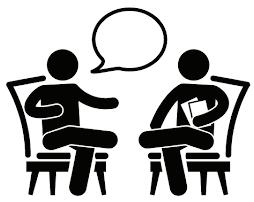
Re-sit Candidates under Conventional PI – no longer accepted by IEM from 31 December 2019
Persidangan Majlis IEM yang ke-409 pada 16 Oktober 2017 telah meluluskan sebanyak 1997 ahli untuk permohonan baru dan permindahan ahli. Berikut adalah senarai ahli mengikut disiplin kejuruteraan:
Senarai nama ahli dan kelayakan adalah seperti di bawah. Institusi mengucapkan tahniah kepada ahli yang telah berjaya. Ir. Yap Soon Hoe
Setiausaha Kehormat, Institusi Jurutera Malaysia, Sesi 2017/2018
PERMINDAHAN AHLI KEPADA AHLI FELLOW
No. Ahli Nama Kelayakan
KEJURUTERAAN AWAM
3375 LIEW MUN HON BE HONS (MELBOURNE) (CIVIL, 1998) ME (RMIT) (ENGINEERING MGMT, 2000) PHD (AMERICAN UNI OF HAWAII) (2003)
20681 ONG EK LEONG, DOMINIC BE HONS (WESTERN AUST) (CIVIL, 1999) PHD (NUS) (2005)
KEJURUTERAAN ELEKTRIKAL
16395 LIM PAY CHUAN, PAUL BSC (MISSISSIPPI) (ELECTRICAL, 1993)
KEJURUTERAAN MEKANIKAL
19410 MOHAMMAD SHAHRIL BIN OSMAN BE HONS (LOUGHBOROUGH) (MECHANICAL, 1998) PHD (LOUGHBOROUGH) (MECHANICAL & MANUFACTURING, 2002)
PERMINDAHAN AHLI KEPADA AHLI KORPORAT
No. Ahli Nama Kelayakan
KEJURUTERAAN AEROANGKASA
61935 NORILMI AMILIA BT ISMAIL BE HONS (USM) (AEROANGKASA, 2004)
KEJURUTERAAN AWAM
38571 ATIQAH BINTI ZAINAL BE HONS (UTM) (CIVIL, 2011)
86588 BEH CHAI TERNG * BE HONS (NTU) (CIVIL, 2007)
47953 CHEONG WEI HAO BE HONS (UTAR) (CIVIL, 2011)
42490 FONG KIM SUN BE HONS (UTM) (CIVIL, 2000)
57074 GOO KENG JIN BE HONS (UKM) (CIVIL & ENVIRONMENTAL, 2005)
58631 HOW WIL MIN BE HONS (MONASH) (CIVIL, 2007)
17232 HUSSAIN BIN OMAR BE HONS (UTM) (CIVIL, 1990)
44609 KIEW KEOK KHING BE HONS (UKM) (CIVIL & ENVIRONMENTAL, 2006)
84927 LEONG WEN KAM BE HONS (UNITEN) (CIVIL, 2006) MSC (NANYANG TECHNOLOGICAL) (CIVIL, 2008)
25436 LIM CHIN SHIN BE HONS (MALAYA) (CIVIL, 2004)
48868 LIM GEE ZHIONG BE HONS (UNIMAS) (CIVIL, 2009)
24297 LOUIS HO YENG GEE BE HONS (UKM) (CIVIL & STRUCTURAL, 2005) ME (UPM) (STRUCTURAL & CONSTRUCTIONS, 2013)
52526 MOHD FAIZ BIN MOHAMMAD ZAKI BE HONS (UTM) (CIVIL, 2010) ME (UTM) (CIVILGEOTECHNICS, 2012)
52479 MOHD MUHIDIN BIN FAHARUDDIN BSC (CALIFORNIA) (CIVIL, 1989)
49222 NG WEI CHONG BE HONS (MALAYA) (CIVIL, 2008)
89629 NORDIANA AYU BINTI ABU ZARIN * BE HONS (USM) (CIVIL, 2002)
49983 ROSANNAH BOLHASSAN ME HONS (IMPERIAL COLLEGE LONDON) (CIVIL, 2010)
16134 SAZALI BIN HARUN BSC (WISCONSINMILWAUKEE) (CIVIL, 1988)
42643 SHARIL AMRAN BIN AMIR MOHAMED BE HONS (UTM) (CIVIL, 2010)
18712 STALE ANAK BURI BSC HONS (WALES SWANSEA) (CIVIL, 1980)
81312 TAN CHYI FUH ME BE (LEEDS) (CIVIL & STRUCTURAL, 2012)
32076 TAN KAI HONG BE HONS (USM) (CIVIL, 2011)
28284 TEH CHEU MENG * BE HONS (USM) (CIVIL, 2009)
43181 TING EE CHUEN BE HONS (UNITEN) (CIVIL, 2006)
44508 ZAKIAH BINTI RAZAK BE HONS (UITM) (CIVIL, 2011)
KEJURUTERAAN BAHAN
61150 CHOO JERN YUE, EDWIN BE (IMPERIAL COLLEGE LONDON) (MATERIALS SCIENCE & ENGINEERING, 2004)
40703 FAROUQ BIN AHMAT BE HONS (IIUM) (MATERIAL, 2012)
KEJURUTERAAN ELEKTRIKAL
88292 AZMIR BIN MOHD YUSOFF BE HONS (UTEM) (CONTROL, INSTRUMENTATION & AUTOMATION, 2007)
48855 AZREENA BINTI SAADIN BE HONS (UITM) (ELECTRICAL, 2002)
38602 BALBIR SHAH @ MOHD FADDULLAH BE HONS (UITM) (ELECTRICAL, 2008) CONVERSION (UNITEN) (2013)
50696 CARLOS JUNG YAN BE HONS (MULTIMEDIA) (ELECTRONICS, 2008)
51309 CHAN JIUNN YEEP BE HONS (MALAYA) (ELECTRICAL, 2009) ME (MALAYA) (POWER SYSTEM, 2013)
61147 CHENG WENG SIONG BE HONS (MONASH) (ELECTRICAL & COMPUTER SYSTEMS, 2008)
42514 DEVENDRA KUMAR KALIAPPAN BE HONS (UNITEN) (ELECTRICAL POWER, 2008)
80727 KONG SHYANG YAU BE HONS (UNITEN) (ELECTRICAL POWER, 2006)
58655 LEONG TZIN SIANG BE HONS (MONASH) (ELECTRICAL & COMPUTER SYSTEMS, 2010)
34101 MD AZWAN BIN MD YASIN BE HONS (UITM) (ELECTRICAL, 2010)
38329 MD HAJUPERI BIN MD ALI BE HONS (USM) (ELECTRICAL, 2006)
78422 MOHD ALFITRI BIN ZAILAN BE HONS (UNIMAP) (ELECTRICAL SYSTEMS, 2010)
70265 MOHD FAIRUS KHAFIZ BIN KHALID BE HONS (UKM) (ELECTRICAL & ELECTRONIC, 2006)
41113 MOHD FIRDAUS BIN
JALALUDDIN BE HONS (UNITEN) (ELECTRICAL POWER, 2009)
51249 MOHD LUQMANUL HAKIM BIN YAHYA BE HONS (UTM) (ELECTRICAL, 2009)
79028 MUHAMMAD SAUFI BIN KAMARUDIN BE HONS (UTM) (ELECTRICAL, 2003) ME (UTM) (ELECTRICALPOWER, 2005)
32735 NASYRAH BINTI YAACOB BE HONS (UTM) (ELECTRICALELECTRONICS, 2009)
81489 OTHMAN BIN MOHINDO BE HONS (UPM) (ELECTRICAL & ELECTRONICS, 2003)
40197 PARVEEN KAUR MALHI A/P HARJEET SINGH BE HONS (UTM) (ELECTRICAL, 2012)
29822 RAHIMI BIN BAHAROM BE HONS (UITM) (ELECTRICAL, 2003) MSC (UITM) (ELECTRICAL, 2009)
51699 SUDALLI BIN
SABTUAHIM BE HONS (UMS) (ELECTRICAL & ELECTRONIC, 2009)
19391 TAN HANG KIAK BSC (MISSISSIPPI STATE) (ELECTRICAL, 1997)
72639 TAN YU QUAN * BE HON (RMIT) (ELECTRICAL, 2011)
26428 TUNKU MUHAMMAD NIZAR BIN TUNKU MANSUR BE HONS (UTP) (ELECTRICAL & ELECTRONICS, 2003) MESC (CURTIN) (2009)
36195 VOON YANN PENG BE HONS (UTM) (ELECTRICAL, 2012)
KEJURUTERAAN ELEKTRONIK
45796 ABD. KADIR BIN MAHAMAD BSC (UTM) (ELECTRICAL, 2002)
54210 GO YUN II BE HONS (UTM) (ELECTRICALTELECOMMUNICATIONS, 2002) MSC (UPM) (COMMUNICATIONS & NETWORK, 2005) PHD (MALAYA) (2014)
75279 HABIBAH BINTI HASHIM BSC (NOTTINGHAM) (ELECTRICAL, 1983) MSC (CNAA-TEESSIDE) (COMPUTER-AIDED, 1986) PHD (UNITEN) (INFORMATION & COMMUNICATION TECHNOLOGY, 2007)
61989 HAZRUL BIN MOHAMED BASRI DIPL-D'ING (BELFORTMONTBELIARD) (2008) ME (BELFORT-MONTBELIARD) (2010)
51728 HUZEIN FAHMI BIN HAWARI BE HONS (USM) (ELECTRICAL & ELECTRONIC, 1999) ME (UTM) (ELECTRICALELECTRONICS & TELECOMMUNICATIONS, 2008) PHD (UNIMAP) (2015)
70424 IRRAIVAN ELAMVAZUTHI* BE HONS (UTM) (ELECTRONIC, 1989) PHD (SHEFFIELD) (ELECTRONIC, 2002)
64784 MAYA BINTI
ABDULLAH MAAMUOM ME HONS (SOUTHAMPTON) (ELECTRONIC, 2009) MSC (UTM) (BIOMEDICAL, 2016)
90108 MOHD NASIR BIN TAIB BE (TASMANIA) (ELECTRICAL, 1988) MSC (SHEFFIELD) (1993) PHD (UMIST) (1997)
20377 MOHD RIZAL BIN ARSHAD BE HONS (LIVERPOOL) (MEDICAL ELECTRONICS & INSTRUMENTATION, 1994) MSC (SALFORD) (ELECTRONIC CONTROL, 1996) PHD (LIVERPOOL) (1999)
79370 NINA KORLINA BINTI MADZHI BE HONS (UITM) (ELECTRICAL, 1999) PHD (UITM) (2012)
64607 NUR JULIA NAZIM BINTI BULYA NAZIM BE HONS (UTM) (ELECTRICALTELECOMMUNICATIONS, 2003)
KEJURUTERAAN KIMIA
24207 FITROTULHAYAT BINTI RODZI BE HONS (UKM) (CHEMICAL & PROCESS, 2000) MBA (IIUM) (CONSTRUCTION BUSINESS, 2007)
24787 NGU LOCK HEI BE HONS (CHEMICAL, 2001)
KEJURUTERAAN MEKANIKAL
38068 AHMAD AZAHARI BIN MOHMMAD BE HONS (UTM) (MECHANICAL, MARINE TECHNOLOGY, 2007)
49969 AZRUL ASWAD BIN MD ADNAN BSC (HANYANG) (MECHANICAL, 2007)
54336 BEH JOO LEONG BE HONS (MULTIMEDIA) (MECHANICAL, 2011)
45800 LOW CHENG YEE BE HONS (UTM) (MECHANICAL, 2012) MSC (LONDON) (MECHATRONICS, 2004) PHD (PADERBORN) (2009)
25702 MOHD KHAIRULFATIN BIN ZULHAIMI BE HONS (UTM) (MECHANICAL-MATERIALS, 2008)
81273 MOHD NASIR BIN MOHD ISA BE HONS (SUNDERLAND) (MECHANICAL, 2012) ME (UPM) (MANUFACTURING SYSTEMS, 2013)
53770 MUHAMMAD FARIZI BIN SAULIUS BE HONS (UNITEN) (MECHANICAL, 2011)
25463 RAMZANUL AZHIM BIN BORHAN * BE HONS (MINNESOTA) (MECHANICAL, 2003)
29649 SAMSULHADI BIN MOHAMMAD SHABANI BE HONS (USM) (MECHANICAL, 1999)
58687 SIVAPRAKASH A/L MUNIANDI BE HONS (UNITEN) (MECHANICAL, 2004)
28006 YEOH SU HONG BE HONS (JAMES COOK) (MECHANICAL, 2005)
KEJURUTERAAN PEMBINAAN
64777 YEW BOON KENT BE HONS (PORTSMOUTH) (CIVIL, 2010)
KEJURUTERAAN PEMBUATAN
26041 ASNUL HADI BIN AHMAD BE HONS (UTEM) (MANUFACTURING, 2006) ME (UPM) (MANUFACTURING SYSTEMS, 2009)
43839 MOHD FATHULLAH BIN GHAZLI @ GHAZALI BE HONS (UIA) (MECHANICAL, 2006) MSC (COVENTRY) (2007) PHD (BRUNEL) (2016)
KEJURUTERAAN PERTANIAN
36650 MOHAMAD HAIRIE BIN MASROON BE HONS (UPM) (BIOLOGICAL & AGRICULTURAL, 2007)
KEJURUTERAAN PETROLEUM
36650 MOHAMAD HAIRIE BIN MASROON BE HONS (UPM) (BIOLOGICAL & AGRICULTURAL, 2007)
KEJURUTERAAN SUMBER AIR
80784 SITI FATIN BINTI MOHD. RAZALI BE HONS (UTM) (CIVIL, 2006) PHD (WESTERN AUSTRALIA) (2011)
KEJURUTERAAN SUMBER MINERAL
49585 MOHD HAFIZU BIN MOHD MUSTAPHA BE HONS (USM) (MINERAL RESOURCES, 2006)
PERMOHONAN MENJADI AHLI KORPORAT No. Ahli Nama
KEJURUTERAAN AWAM ANDING ANAK UNCHI BE HONS (UITM) (CIVIL, 1996) MSC (CURTIN) (PROJECT MANAGEMENT, 2013)
AW SER KANG BE HONS (ADELAIDE) (CIVIL & STRUCTURAL, 2004)
CHUA LEE HWA BE HONS (UTM) (CIVIL, 2001) ME (UTM) (CIVIL - CIVIL & ENVIRONMENTAL, 2003)
ERNEST LAI HENG WEI BE HONS (SURREY) (CIVIL, 2003) MSC (SURREY) (2004)
FAIZUL IZUAN BIN SHAIMI BE HONS (UITM) (CIVIL, 2005)
HANAN BIN ELIAS BE HONS (MALAYA) (CIVIL, 1984) MBA (OPEN UNIVERSITY) (BUILDING & FACILITY MANEGEMENT, 2015)
LAI LI LING BE HONS (UTM) (CIVIL, 2007)
LIEW KUET FAH BE HONS (UTM) (CIVIL, 2002) ME (UTM) (HYDRAULICS & HYDROLOGY, 2006)
MAZMAN BIN MOHAMAD BE HONS (USM) (CIVIL, 2006) MSC (USM) (ENVIRONMENTAL, 2007)
MEOR ABDUL AZIZ BIN OSMAN BSC (STRATHCLYDE) (CIVIL, 1982)
MOHAMED IZHAM BIN
HAMZAH BSC (ALBERTA) (CIVIL, 1991)
MOHD SUHAIRI BIN RAMLI BE HONS (UITM) (CIVIL, 2006)
MUHAMAD SAFWAN BIN
PUTEH @ SHAARI BE HONS (UITM) (CIVIL, 2006)
MUSTAZA BIN ZAWAWI BE HONS (UTM) (CIVIL, 2000)
NG CHEE HIONG BE HONS (UMS) (CIVIL, 1999) MSC (UMS) (CIVIL, 2005) PHD (UMS) (2010)
NORAZZLINA BINTI M. SA'DON BE HONS (UNIMAS) (CIVIL, 2000) MSC (CARDIFF) (CIVIL, 2003) PHD (AUCKLAND) (2010)
ROSILAWATI BTE MAZLAN BE HONS (UTM) (CIVIL, 2003)
TONG LING SIEW BE HONS (LIVERPOOL) (CIVIL, 2002) PHD (LIVERPOOL) (2007)
VICTOR LIEW MAJADIL BE (CITY-LONDON) (CIVIL, 2000)
YUSSAIME BIN AHMAD YUSUF BE HONS (UITM) (CIVIL, 2006)
KEJURUTERAAN ELEKTRIKAL
CHE KAMARIAH BINTI CHE ISA BE HONS (UTM) (ELECTRICAL, 2002)
CHIA KA LUK BE HONS (UPM) (ELECTRICAL & ELECTRONICS, 2002)
HASNOOR KHUZAIRAH BINTI HASIM BE HONS (UITM) (ELECTRICAL, 2010)
HIDZAR RADZI BIN MOHD HUSIN BE HONS (UITM) (ELECTRICAL, 2008)
IZHAM BIN ZAINAL ABIDIN BE HONS (SOUTHAMPTON) (ELECTRICAL, 1997) PHD (STRATHCLYDE) (2002)
KAMARUS ZAMAN BIN AHMAD BE HONS (UTM) (ELECTRICAL, 2007)
MAISARAH BINTI MAHAMUD SAYUTI BE HONS (UNITEN) (ELECTRICAL & ELECTRONICS, 2009)
MOHAMAD AZMI BIN MD SHAHIT BE HONS (MALAYA) (ELECTRICAL, 2011)
MOHD FARIZ BIN BACHOK BE HONS (UITM) (ELECTRICAL, 2005)
MOHD FIRDAUS B. MOHD FAUZI BE HONS (UITM) (ELECTRICAL, 2009)
MOHD HALIMI BIN MUHAMED WAHAB BE HONS (USM) (ELECTRICAL, 2008)
MOHD MUZHAR BIN AHMAD TAJUDDIN BE HONS (UITM) (ELECTRICAL, 2002)
MOHD RIZA ZALMEE BIN
MOHD GHAZALI BE HONS (UNITEN) (ELECTRICAL POWER, 2007)
MOHD RIZAL BIN JOHARI BE HONS (UTM) (ELECTRICAL, 2007)
MOHD SYAWAL NIZAM BIN
SHARIFUDIN BE HONS (UITM) (ELECTRICAL, 2007) CONVERSION (UNITEN) (2012)
MOHD YUSMANIZAM BIN
MOHD YUSOF BE HONS (UKM) (ELECTRICAL, ELECTRONIC & SYSTEMS, 1999) MSC (MANCHESTER) (ELECTRICAL POWER SYSTEMS, 2009)
MOHD ZULFAHMI BIN WAHAB BE HONS (UNITEN) (ELECTRICAL, 2010) ME (UNITEN) (ELECTRICAL, 2013)
MUHAMMAD NURSYAM BIN SAPEE BE HONS (UMP) (INDUSTRIAL ELECTRONIC, 2008)
MUHAMMAD ZULKHAIRI BIN
ABDUL GHANI BE HONS (UITM) (ELECTRICAL, 2005)
NIK MOHD HAZMAN BIN
CHE HASAN BE HONS (UKM) (ELECTRICAL, ELECTRONIC & SYSTEMS, 2004)
NOOR AMALIA BINTI IBRAHIM BE HONS (UNITEN) (ELECTRICAL & ELECTRONIC, 2009)
NOOR ASIKIN BINTI ARIFIN BE HONS (MALAYA) (ELECTRICAL, 2010)
NURMADINA BINTI YUSOH BE HONS (UKM) (ELECTRICAL & ELECTRONIC, 2005)
SHAMSUL AZIZI BIN
SHAHUDIN BE HONS (UTM) (ELECTRICAL, 2005)
TAN WENG SENG BE HONS (USM) (ELECTRICAL, 2008)
KEJURUTERAAN ELEKTRONIK
FAKHRUL ZAMAN BIN
ROKHANI BE HONS (UTM) (ELECTRICALMECHATRONICS, 2002) MSC (MINNESOTA) (ELECTRICAL, 2004) PHD (MINNESOTA) (2008)
NG KOK MUN BE HONS (UTHM) (ELECTRICAL, 2002)
NIK MOHD ZAITUL AKMAL
BIN MUSTAPHA BE HONS (UTM) (MICROELECTRONIC, 1998)
SUADI BIN WAHAB BE HONS (UMS) (ELECTRICAL & ELECTRONIC, 2000)
SULAIMAN WADI BIN
HARUN BE (NAGAOKA) (ELECTRICAL & ELECTRONIC SYSTEMS, 1996) MSC (MALAYA) (2001) PHD (MALAYA) (2004)
YEOH KEAT HOE BE HONS (UTM) (ELECTRICALINTRUMENTATION AND CONTROL, 2005) ME (MULTIMEDIA UNIVERSITY) (MICROELECTRONICS, 2010) PHD (UM) (2014)
KEJURUTERAAN ELEKTRONIK
LOW TEONG BENG BSC (KENTUCKY) (ELECTRICAL, 1995)
KEJURUTERAAN KAWALAN & INSTRUMENTASI
LOW TEONG BENG BSC (KENTUCKY) (ELECTRICAL, 1995)
KEJURUTERAAN KIMIA
CHUA BOON HOW BE HONS (UTP) (CHEMICAL, 2010)
LIM LEE FONG BE HONS (UTP) (CHEMICAL, 2003) MSC (BIRMINGHAM) (BIOCHEMICAL, 2004)
NG HAN TECK BE HONS (UTM) (CHEMICAL, 2000)
KEJURUTERAAN LEBUHRAYA
RATNASAMY MUNIANDY BSC (SOUTH DAKOTA) (CIVIL, 1991) MSC (SOUTH DAKOTA) (1993) PHD (UPM) (2004)
KEJURUTERAAN MEKANIKAL
EDMENT FASHAH BIN
AHAMAD BE HONS (UITM) (MECHANICAL, 2008)
HASANUDDIN BIN MOHD
IBRAHIM DIPL-ING(FH-OFFENBURG, GERMANY) (MECHANICAL & TECHNOLOGY, 2009)
JILAN ANAK JENGGI BE HONS (LONDON) (MECHANICAL, 1990)
JUSTIN CHAN TUCK LEONG BE HONS (UNITEN) (MECHANICAL, 2010) MSC (UTM) (ENGINEERING BUSINESS MANAGEMENT, 2016)
KHAIRIL ANWAR BIN ABU
KASSIM BE HONS (OKAYAMA) (MECHANICAL, 2000) ME (UPM) (ENGINEERING MANAGEMENT, 2008)
MD FUAD SHAH BIN
KOSLAN BE HONS (UTM) (MECHANICAL-AERONAUTICS, 2001) ME (UTM) (MECHANICAL, 2006)
MOHD NUH BIN MISKAN BE HONS (UITM) (MECHANICAL, 2005)
MUHAMMAD FADHLI BIN
SHUHAIMI BE HONS (UTM) (MECHANICAL-INDUSTRIAL, 2008)
NIK NAZRI BIN NIK GHAZALI BE HONS (BRADFORD) (MECHANICAL, 1996)
NORHAYATI BINTI MAT WAJID BE HONS (PORTSMOUTH) (MECHANICAL, 1997) ME (ROYAL MELBOURNE, INST OF TECH) (SUSTAINABLE ENGERGY, 2009)
PATRICK SIAW TING
CHIANG BE HONS (MALAYA) (MECHANICAL, 1999)
TOK CHYE HOCK BE HONS (UTM) (MECHANICAL-AUTOMOTIVE) (2006)
VASANTHATHIBAN A/L PERIASAMY BSC (WICHITA) (MECHANICAL, 2012)
ZURADZMAN BIN MOHAMAD RAZLAN BE (YAMAGATA) (MECHANICAL, 1993)
KEJURUTERAAN PENGANGKUTAN
NUR IZZI BIN MD. YUSOFF BE HONS (UKM) (CIVIL & STRUCTURAL, 2002) ME (UTM) (CIVIL-TRANSPORT & HIGHWAY, 2006) PHD (NOTTINGHAM) (2012)
KEJURUTERAAN STRUKTUR
ABDUL RAZAK BIN ABDUL
KARIM BE HONS (UNIMAS) (CIVIL, 2000) MSC (CARDIFF) (STRUCTURAL, 2003) PHD (AUCKLAND) (2010)
TAN LEE PENG BE HONS (UNITEN) (CIVIL, 2008)
KEJURUTERAAN TELEKOMUNIKASI
MOHD ZAIDFIQRI BIN HARUN BE HONS (MALAYA) (TELECOMMUNICATION, 2010)
RAJA ZAIMAS ROSDIN BINTI
RAJA ROSDIN BE HONS (MALAYA) (TELECOMMUNICATION, 2011) MSC (MALAYA) (2015)
WONG SHEN YUONG BE HONS (UNITEN) (ELECTRICAL & ELECTRONICS, 2010) ME (UNITEN) (ELECTRICAL, 2011) PHD (UNITEN) (2015)
ZULZILAWATI BINTI JUSOH BE HONS (MALAYA) (TELECOMMUNICATION, 2002) MSC (MALAYA) (2008) PHD (MALAYA) (2015)
PEMINDAHAN KEPADA ‘COMPANION’
No. Ahli Nama Kelayakan
KEJURUTERAAN AWAM
14889 CHOO KWONG HENG B.E.(UPM)(CIVIL, 1989)
KEJURUTERAAN ELEKTRONIK
23268 PU CHUAN HSIAN
B.E.HONS.(THE NOTTINGHAM TRENT UNI.) (ELECTRONIC & COMPUTING, 2001) M.E.(MMU) (TELECOMMUNICATIONS, 2005)
PERMOHONAN MENJADI AHLI ‘COMPANION’ No. Ahli Nama Kelayakan
KEJURUTERAAN ALAM SEKITAR
93772 HO LEE LEE
KEJURUTERAAN AWAM
93769 AHMAD MUZRI ABDULLAH SATAR
93771 AZAM SYARIFF BIN ZAHAR
93537 DR UBAGARAM JOHNSON ALENGARAM
93534 MASYMUL AZAM BIN ISHAK
93778 MOHD NOREZMI BIN MD ZIN
93770 RAFIDAH BINTI ITHNIN
B.E.HONS.(MALAYA) (ENVIRONMENTAL, 1999) M.E.(UNIMAS) (ENVIRONMENTAL, 2011)
B.E.HONS.(UTM)(CIVIL, 2002)
B.E.(NAGOYA INST. OF TECH.) (ARCHITECTURE & CIVIL, 2002)
B.E.(UNI. OF MADRAS) (CIVIL, 1985)
M.E.(BHARATHIAR UNI.) (CIVIL-STRUCTURAL, 1993) PART II (E.C)(1999) PHD.(MALAYA)(2009)
B.E.HONS.(UTM)(CIVIL, 2002)
B.E.HONS.(UTM)(CIVIL, 2004)
B.E.HONS.(UITM)(CIVIL, 2007)
KEJURUTERAAN ELEKTRONIK
93774 AZNILINDA BINTI ZAINODIN@ ZAINUDDIN
B.E.HONS.(UITM) (ELECTRICAL, 2004)
M.E.(UITM)(ELECTRICAL, 2014)
93887 DR NORFISHAH BINTI AB WAHAB ADV. DIPL.(ITM) (ELECTRICAL, 1992)
M.SC.(UITM) (TELECOMMUNICATION & INFORMATION, 2008)
PHD.(UITM)(ELECTRICAL, 2015)
93535 MURALI A/L KUPPAN
KEJURUTERAAN KIMIA
93885 BALAJI RAGHUNATHAN
93886 MARDHIYAH BINTI MOHD BAKIR
93773 MOHAMAD FIRDAUS BIN ZAINAL B.E.HONS.(MMU) (MECHANICAL, 2008) M.SC.(UKM)(INDUSTRIAL & TECHNOLOGY MANAGEMENT, 2014)
93536 MOHD HAZLEE BIN HAMID B.E.HONS.(UTP) (MECHANICAL, 2002)
93777 NOR AZMAN BIN SAAID B.SC.(UNI. OF ABERDEEN) (ENGINEERING, 1996)
93776 NURSUHANA BINTI ALAUDDIN B.E.(NAGOYA INST. OF TECH.) (MECHANICAL, 2004)
PEMINDAHAN KEPADA AHLI SISWAZAH No. Ahli Nama Kelayakan
KEJURUTERAAN ALAM SEKITAR
69595 CHAI CHARANG CHEW, CLEMENT
B.E.HONS.(UTAR KAMPAR) (ENVIRONMENTAL, 2017)
69596 CHEH KIT CHUN B.E.HONS.(UTAR KAMPAR) (ENVIRONMENTAL, 2017)
68442 LEE CHEAN BANG B.E.HONS.(UTAR KAMPAR) (ENVIRONMENTAL, 2017)
69601 LIM WAN CHING B.E.HONS.(UTAR KAMPAR) (ENVIRONMENTAL, 2017)
89423 SANGESWARY A/P HARI KHARAN B.E.HONS.(UTAR KAMPAR) (ENVIRONMENTAL, 2017)
72531 SEAH KAY SENG B.E.HONS.(UTAR KAMPAR) (ENVIRONMENTAL, 2017)
KEJURUTERAAN AWAM
41682 MASLINDA BINTI DAUD B.E.(UMP)(CIVIL, 2012)
43434 TANG ZING WEI B.E.HONS.(CURTIN UNI. OF TECH.)(CIVIL & CONSTRUCTION, 2012)
66175 CHONG YEE LING B.E.HONS.(IUKL)(CIVIL, 2015)
71602 LEE KOK YONG B.E.HONS.(IUKL)(CIVIL, 2015)
81384 LEE SOON WEI B.E.HONS.(IUKL)(CIVIL, 2016)
81385 MAHISHVARAN A/L DHARMANANDA B.E.HONS.(IUKL)(CIVIL, 2016)
71597 MUHAMMAD RUZAINI BIN MD.RUSLAN B.E.HONS.(IUKL)(CIVIL, 2016)
31188 CHEN FUN CHONG B.E.HONS.(MALAYA)(CIVIL, 2009)
88458 SANDESH SINGH BHATT B.E.HONS.(SEGI)(CIVIL, 2016)
52238 WONG TUNG YEW, STEVEN B.E.HONS.(SWINBURNE UNI. OF TECHNOLOGY)(CIVIL, 2011)
21173 REDZUAN BIN MD YUNUS B.E.HONS.(UITM)(CIVIL, 2003)
33270 MOHAMAD HAFIZZUDIN BIN NORDIN
B.E.HONS.(UITM)(CIVIL, 2009)
33207 MOHD FAWWAZ NAJMI BIN MOHD FUZI B.E.HONS.(UITM)(CIVIL, 2010) M.E.(MALAYA)(SAFETY, HEALTH & ENVIRONMENT, 2014)
33188 NUR HIZARUDDIN BIN CHE AJID B.E.HONS.(UITM)(CIVIL, 2010) M.E.(UTM)(CIVILTRANSPORTATION & HIGHWAY, 2012)
44214 EDDY ROHAIZAT BIN ABD HAMID B.E.HONS.(UITM)(CIVIL, 2011)
44243 IZZUL BADRI BIN MUHAMAD B.E.HONS.(UITM)(CIVIL, 2011)
44433 NORAFIZAH BINTI ABD RAHMAN B.E.HONS.(UITM)(CIVIL, 2011) M.SC.(UITM)(CIVILGEOTECHNIQUE, 2012)
69068 MUHAMMAD RIDZWAN B. AZMAN B.E.HONS.(UITM)(CIVIL, 2017)
56668 MOHAMED AZAM ISAM BIN ISA B.E.HONS.(UITM)(CIVILINSFRASTRUCTURE, 2014)
72913 EWE KEE YIN B.E.HONS.(UKM)(CIVIL & ENVIRONMENTAL, 2016)
41740 CHEE KHONG SIONG B.E.HONS.(UKM)(CIVIL & STRUCTURAL, 2011) M.E.(UTM)(CIVILGEOTECHNIC, 2015)
B.E.HONS.(UTM)(ELECTRICALELECTRONICS, 2001)
B.E.HONS.(UTP)(CHEMICAL, 2003)
B.E.HONS.(USM)(CHEMICAL, 1999)
KEJURUTERAAN MEKANIKAL
93775 CHEAH YEOU SENG
B.E.HONS.(UNITEN) (MECHANICAL, 2006)
93538 FARIZAH ABDUL MANAP B.E.HONS.(UNITEN) (MECHANICAL, 2009)
M.E.M.(UNITEN) (ENGINEERING MANAGEMENT, 2011)
47245 NURUL HANI BINTI MARDI B.E.HONS.(UKM-UNI. DUISBURG ESSEN) (CIVIL, 2012) M.E.(UNITEN)(CIVIL, 2015)
81559 TAN CHIN GIAP B.E.HONS.(UMP)(CIVIL, 2016)
66156 AMIR B. ABAS B.E.HONS.(UNI. OF ADELAIDE) (CIVIL & STRUCTURAL, 2017)
42380 WONG XUAN YUAN B.E.HONS.(UNIMAS) (CIVIL, 2013) M.E.(UNIMAS)(CIVIL, 2015)
29899 CHAI TZE CHIN, CYRIL B.E.HONS.(USM)(CIVIL, 2010)
80377 CHEN JUN KIAT B.E.HONS.(UTAR SG LONG) (CIVIL, 2017)
80366 CHENG KAI JIAN B.E.HONS.(UTAR SG LONG) (CIVIL, 2017)
80357 GAN KANG CHAN B.E.HONS.(UTAR SG LONG) (CIVIL, 2017)
80335 LEE JOO YEE
72323 LIM BENG SERNG
80321 LIM DAO YONG
77985 LIM KEK WENG
66337 LOH LEONG TATT
80317 LOW WEI JIAN
80279 TAN CHUANG MING
72330 TAN WEN JIA
53434 CHONG JADE CHEUN
42665 CHAN YAW YEE
61462 AMIR ASYRAF B. AZAULMAY
61507 HEM WEN PING
54790 LEE YONG KIANG
80207 CHAN CHENG LEONG
38580 FARIDZUL BIN MOHAMMAD FADZIL
38584 HERMANIZAH BINTI SA'ADON
54391 MOHD IZAAN BIN GHAZALI
70963 MOHAMED ILYAS BIN MOHAMED HANIFFA
47903 DR CHAI KOH SIONG
B.E.HONS.(UTAR SG LONG) (CIVIL, 2017)
B.E.HONS.(UTAR SG LONG) (CIVIL, 2017)
B.E.HONS.(UTAR SG LONG) (CIVIL, 2017)
B.E.HONS.(UTAR SG LONG) (CIVIL, 2017)
B.E.HONS.(UTAR SG LONG) (CIVIL, 2017)
B.E.HONS.(UTAR SG LONG) (CIVIL, 2017)
B.E.HONS.(UTAR SG LONG) (CIVIL, 2017)
B.E.HONS.(UTAR SG LONG) (CIVIL, 2017)
B.E.HONS.(UTAR)(CIVIL, 2013)
B.E.HONS.(UTHM)(CIVIL, 2011)
B.E.HONS.(UTHM)(CIVIL, 2014)
B.E.HONS.(UTHM)(CIVIL, 2014)
B.E.HONS.(UTHM)(CIVIL, 2016)
B.E.HONS.(UTM SPACE) (CIVIL, 2016)
B.E.HONS.(UTM)(CIVIL, 2010)
B.E.HONS.(UTM)(CIVIL, 2010)
B.E.HONS.(UTM)(CIVIL, 2012)
M.E.(UTM)(CIVIL-STRUCTURE, 2014)
B.E.HONS.(UTM)(CIVIL, 2014)
M.E.HONS.(UNI OF NOTTINGHAM)(CIVIL, 2011)
PHD.(UNI OF NOTTINGHAM) (2016)
KEJURUTERAAN ELEKTRIKAL
72676 MUHAMMAD JAMILUL NA'IM BIN MOKHTAR
40851 LAHARAJA BIN LAHADI
49187 VASUDEVAN A/L PRABHAKARAN
B.E.HONS.(UKM)(ELECTRICAL & ELECTRONIC, 2015)
B.E.HONS.(UMP) (ELECTRICAL-POWER SYSTEM, 2010)
B.E.HONS.(UNITEN) (ELECTRICAL POWER, 2014)
37426 TUNG SOON SENG B.E.HONS.(UTAR) (ELECTRICAL & ELECTRONIC, 2009)
57285 CHONG YEW HONG B.E.HONS.(UTHM) (ELECTRONIC, 2015)
KEJURUTERAAN ELEKTRONIK
66508 TEO YOW CHUAN B.E.HONS.(MMU) (ELECTRONICSTELECOMMUNICATIONS, 2016)
KEJURUTERAAN KIMIA
48567 MUHD AMIN BIN MOHAMAD B.E.HONS.(CURTIN UNI. OF TECH.)(CHEMICAL, 2012)
66060 KHAW WEI CHUEN B.E.HONS.(TAYLOR'S) (CHEMICAL, 2017)
42833 MUHAMMAD FADZLI BIN MASNAN B.E.HONS.(UITM)(CHEMICAL & PROCESS, 2011)
73197 TAN YONG CHAI B.E.HONS.(UMP)(CHEMICAL, 2015)
45884 NURUL DARSANI BINTI AMAT DARBIS
B.E.HONS.(USM)(CHEMICAL, 2013)
72556 CHONG WAI LUN B.E.HONS.(UTAR KAMPAR) (PETROCHEMICAL, 2017)
61870 LAI WAI SENG B.E.HONS.(UTAR KAMPAR) (PETROCHEMICAL, 2017)
88021 LIDIA A/P STEPHEN B.E.HONS.(UTAR KAMPAR) (PETROCHEMICAL, 2017)
88020 PHIN HOR YAN B.E.HONS.(UTAR KAMPAR) (PETROCHEMICAL, 2017)
87017 KWAN JIA YI, KELLY B.E.HONS.(UTAR SG LONG) (CHEMICAL, 2017)
72316 PARAMESPARAN PAVITHIRAH B.E.HONS.(UTAR SG LONG) (CHEMICAL, 2017)
87019 TAN CHIN HOW B.E.HONS.(UTAR SG LONG) (CHEMICAL, 2017)
81056 VILAASHINI A/P NAGENDERAN B.E.HONS.(UTAR) (PETROCHEMICAL, 2016)
KEJURUTERAAN MEKANIKAL
74594 LIM CHIN HSIEN, ANDERSON B.E.HONS.(SWINBURNE UNI. OF TECH.)(MECHANICAL, 2015)
65029 CHOONG PUI YUNG B.E.HONS.(TAYLOR'S UNI.) (MECHANICAL, 2015)
30468 MUHAMMAD FAISAL BIN ISKANDAR
50289 ABDUL HAZIQ BIN ABDUL MAJID
53510 MOHAMMAD FAIDZ BIN ZALANI
50654 MOHD ZAKUAN BIN ZABRI
67500 MOHAMAD AMIRUL SHAFIQ B. MUDA
67632 MUHAMMAD HANIF B. BAHARUDDIN
50848 CHANG FOO KOON
80340 LEE YIN SIANG
80314 LOW YONG CHEN
61266 NG MAN SHING
86997 NG YEONG JIANG
80286 ONG SOON LENG
86992 OOI GUO JIE
53461 MOHAMMAD HELMI BIN JOHARI
53459 NUR' SYAFIQAH BINTI ISMUINI
58175 TAN CHEE NIAN
55928 LAU LEE SIAN
55120 GOH WEI LOON
21908 LEE SEE PENG
53945 LEE KEAN YOONG
45024 YONG HUA NGUON
B.E.HONS.(UITM) (MECHANICAL, 2011)
B.E.HONS.(UITM) (MECHANICAL, 2014)
B.E.HONS.(UITM) (MECHANICAL, 2016)
B.E.HONS.(UITM) (MECHANICAL, 2016)
B.E.HONS.(UITM) (MECHANICAL, 2017)
B.E.HONS.(UITM) (MECHANICAL, 2017)
B.E.HONS.(USM) (MECHANICAL, 2015)
B.E.HONS.(UTAR SG LONG) (MECHANICAL, 2017)
B.E.HONS.(UTAR SG LONG) (MECHANICAL, 2017)
B.E.HONS.(UTAR SG LONG) (MECHANICAL, 2017)
B.E.HONS.(UTAR SG LONG) (MECHANICAL, 2017)
B.E.HONS.(UTAR SG LONG) (MECHANICAL, 2017)
B.E.HONS.(UTAR SG LONG) (MECHANICAL, 2017)
B.E.HONS.(UTEM) (MECHANICAL-DESIGN & INNOVATION, 2015)
B.E.HONS.(UTEM) (MECHANICAL-DESIGN & INNOVATION, 2015)
B.E.HONS.(UTEM) (MECHANICAL-DESIGN & INNOVATION, 2016)
B.E.HONS.(UTHM) (MECHANICAL, 2015)
B.E.HONS.(UTHM) (MECHANICAL, 2016)
B.E.HONS.(UTM-SPACE) (MECHANICAL, 2017)
M.E.HONS.(UNI OF NOTTINGHAM)(MECHANICAL, 2015)
M.E.HONS.(UNI. OF NOTTINGHAM)(MECHANICAL, 2014)
KEJURUTERAAN MEKATRONIK
57372 FOO BRANDON
B.E.HONS.(APU) (MECHATRONICS, 2015)
KEJURUTERAAN SUMBER MINERAL
57963 RIZAL HAFIZ B. RAZALI
B.E.HONS.(USM)(MINERAL RESOURCES, 2016)
PERMOHONAN MENJADI AHLI SISWAZAH No. Ahli Nama Kelayakan
KEJURUTERAAN AEROANGKASA
94129 YU KOK HWA
KEJURUTERAAN AWAM
93801 NOR ARFIAN BIN YUSOF
93836 MOHAMAD SALIHIN SF BIN SALIM
93842 SANGEETHA A/P RAMASAMY
93889 PANG SWEE NGEE
B.E.HONS.(USM) (AEROSPACE, 2008) MSC.(USM)(AEROSPACE, 2011)
B.E.(CARLETON UNI.)(CIVIL, 1998)
B.E.(TOTTORI UNI.)(CIVIL, 2010) M.E.(TOTTORI UNI.) (MANAGEMENT OF SOCIAL SYSTEMS & CIVIL ENGRG., 2012)
B.E.(UMP)(CIVIL , 2011)
B.E.(UMP)(CIVIL, 2010) 94123 CHING JENN HUA
93923 SII CHUNG CHYI, AMANDA
94030 GAN LENG LEY
94013 CHONG KIAN MING
93995 DR. MAZIZAH EZDIANI BT MOHAMAD
94021 AMNORZAHIRA BINTI AMIR
93994 THO SIEW LIAN
ZAKRIL SYAFRANI BIN SAMSUDI B.E.HONS.(MALAYA)(CIVIL, 2009)
93853 TING MUI HENG, JUDE B.E.HONS.(MALAYA)(CIVIL, 2010)
93897 WONG CHEA HAO B.E.HONS.(NTU)(CIVIL, 2011)
93930 HO FOOK MING B.E.HONS.(SWINBURNE UNI. OF TECH.)(CIVIL, 2014)
93929 LAW CHENG YANG B.E.HONS.(SWINBURNE UNI. OF TECH.)(CIVIL, 2014)
93852 CLIFF JUDE ZEHNDER B.E.HONS.(SWINBURNE UNI. OF TECH.)(CIVIL, 2015)
94135 CHAN HON CHUIN, EDRIC B.E.HONS.(THE UNI. OF AUCKLAND)(CIVIL, 2017)
93811 SUHAIZA BINTI MOHD SALLEH B.E.HONS.(UITM)(CIVIL, 2008)
93807 MOHAMED ALIF BIN MOHAMED ROZNAN
94127 FARAH SHUHADAH BT MOHD RAMLI
B.E.HONS.(UITM)(CIVIL, 2010)
B.E.HONS.(UITM)(CIVIL, 2012)
93856 MOHD RASHIDI BIN BAKLI B.E.HONS.(UITM)(CIVIL, 2012)
93870 ABDUL AZIM BIN MUSTAPA
93858 SYAHMIZZI IFWAT BIN AZHARNIM
93904 WAN KHAIRUL AZMAN BIN WAN ZAWAWI
93891 WONG CHOONG LUM, RICKY
93983 KOH BOON HAO
B.E.HONS.(UITM)(CIVIL, 2013)
B.E.HONS.(UITM)(CIVIL, 2013) M.E.SC.(UITM) (GEOTECHNICAL, 2015)
B.E.HONS.(UITM)(CIVIL, 2016)
B.E.HONS.(UMP)(CIVIL, 2014)
B.E.HONS.(UMS)(CIVIL, 2014)
Note: Remaining list of the Transfer Graduate, Graduate, Incorporated, Affiliate and Associate would be published in January 2018. For the list of approved “ADMISSION TO THE GRADE OF STUDENT”, please refer to IEM web portal at http://www.myiem.org.my.
Pengumuman yang ke-110
SENARAI PENDERMA KEPADA WISMA DANA BANGUNAN IEM
Institusi mengucapkan terima kasih kepada semua yang telah memberikan sumbangan kepada tabung Bangunan Wisma IEM. Ahli-ahli IEM dan pembaca yang ingin memberikan sumbangan boleh berbuat demikian dengan memuat turun borang di laman web IEM http://www.iem. org.my atau menghubungi secretariat di +603-7968 4001/5518 untuk maklumat lanjut. Senarai penyumbang untuk bulan Oktober 2017 adalah seperti jadual di bawah:
NO. NO. AHLI NAMA
1 49948 ANANTHA RAO A/L RAMARAO
2 75332 ANG JEN KEN
3 37019 HUSSIEN BIN JUHARI
B.E.HONS.(CURTIN UNI. OF TECH.)(CIVIL & CONSTRUCTION, 2015)
B.E.HONS.(CURTIN UNI. OF TECH.)(CIVIL & CONSTRUCTION, 2016)
B.E.HONS.(KLIUC)(CIVIL, 2012)
B.E.HONS.(KUITTHO(CIVILCONSTRUCTION, 2006)
B.E.HONS.(KUITTHO) (CIVIL, 2005)
M.E.(UTM)(CIVILSTRUCTURE, 2011)
PHD.(UTM)(CIVIL, 2016)
B.E.HONS.(MALAYA)(CIVIL, 2003)
B.E.HONS.(MALAYA)(CIVIL, 2006)
4 48449 LEW CHEE YEE
5 64705 LIM JUN NIAN
6 18919 MOHAMED ZAHED BIN HASHIM
7 87494 MOHD AZLAN SHAH BIN ABDULLAH
8 16005 OSMAN BIN AB. RAHMAN
9 45817 ROHAN BIN AHMAT
10 07463 SIM TIAN LIANG
11 58077 SYAHRIL ANUAR BIN MD REJAB 12 14147 YAP HON KONG 13 13750 ZAMZURI BIN OTHMAN

JURUTERA has an estimated readership of 168,000 professionals. Our esteemed readership consists of certified engineers, decision making corporate leaders, CEOs, government officials, project directors, entrepreneurs, project consultants, engineering consulting firms and companies involved with engineering products and services.
Our business partners can be assured that their products and services will be given the circulation and exposure it deserves, thus maintaining a sustained advertising presence to our core readers of decision-making engineers and technical experts. Our website offers an even wider market reach, with added international presence, aided by our international affiliation with official engineering bodies all over the world. Our online and offline advertising features such as banner advertising, article sponsorship and direct e-mail announcements have proven to be successful marketing strategies that will set the businesses of our partners apart from their competition.
For advertising enquiries, please contact:

















